There’s no wonder Jordan is a World Wonder: with welcoming, friendly faces, weathered landscapes, and an impressive historical legacy, travellers get authenticity, beauty, and hospitality rolled into one experience. Planning a 2-week Jordan travel itinerary is the perfect way to experience it all.
As the Switzerland of the Middle East, there’s no reason for concern notwithstanding dubious travel warnings issued by foreign offices: danger is not on the agenda. Despite its proximity to warring neighbours, sandwiched between Syria, Iraq, Palestine, Israel, and Egypt, it’s easy to understand why the region might spark alarm.
However, Jordan’s resilience, defensiveness, and neutrality have strengthened over the past decade amid surrounding conflicts. Beyond its open-door refugee policy, you’ll find a warm heart and soulful smile, with locals eagerly welcoming visitors from all over the world.
In Jordan, I encountered a side of the Middle East that defied the narrow and often skewed image presented by Western media. It’s here that I grew in admiration for the people, the places, and the vibrant spirit of the country.
It was my time in Jordan that reshaped how I see the region — both its challenges and its incredible beauty.
As you explore this incredible destination, I hope this 2-week Jordan travel itinerary helps you discover your own deep connection to this remarkable place, just as I did.
Disclosure: This article contains affiliate links. If you click through and make a purchase, I may earn a small commission at no additional cost to you. These commissions help support my blog and allow me to continue sharing travel tips and guides.
I only recommend products or services I’ve personally used, love, or trust. Thank you for your support!
Solo Travel Note on Jordan
Unlike the ongoing controversy surrounding its neighbours, there is a sense of peace in Jordan that’s reassuring — almost comforting. When travelling solo in the Middle East, you might find yourself on edge, wary of your surroundings. But in Jordan, I felt a sense of calm that I didn’t expect.
For the most part, my two-week stay in Jordan was uneventful — no surprises, no tension. I walked, ate, and took public transport on my own with ease, and there was only one instance when an encounter turned mildly aggressive. Considering the odds, I’d say that’s pretty good for any destination.


Jordan offers a rare opportunity for solo travellers to experience the exoticism of the Middle East without the usual side of danger and distress. The welcoming atmosphere, combined with a sense of security, makes it an ideal place for those venturing out on their own.
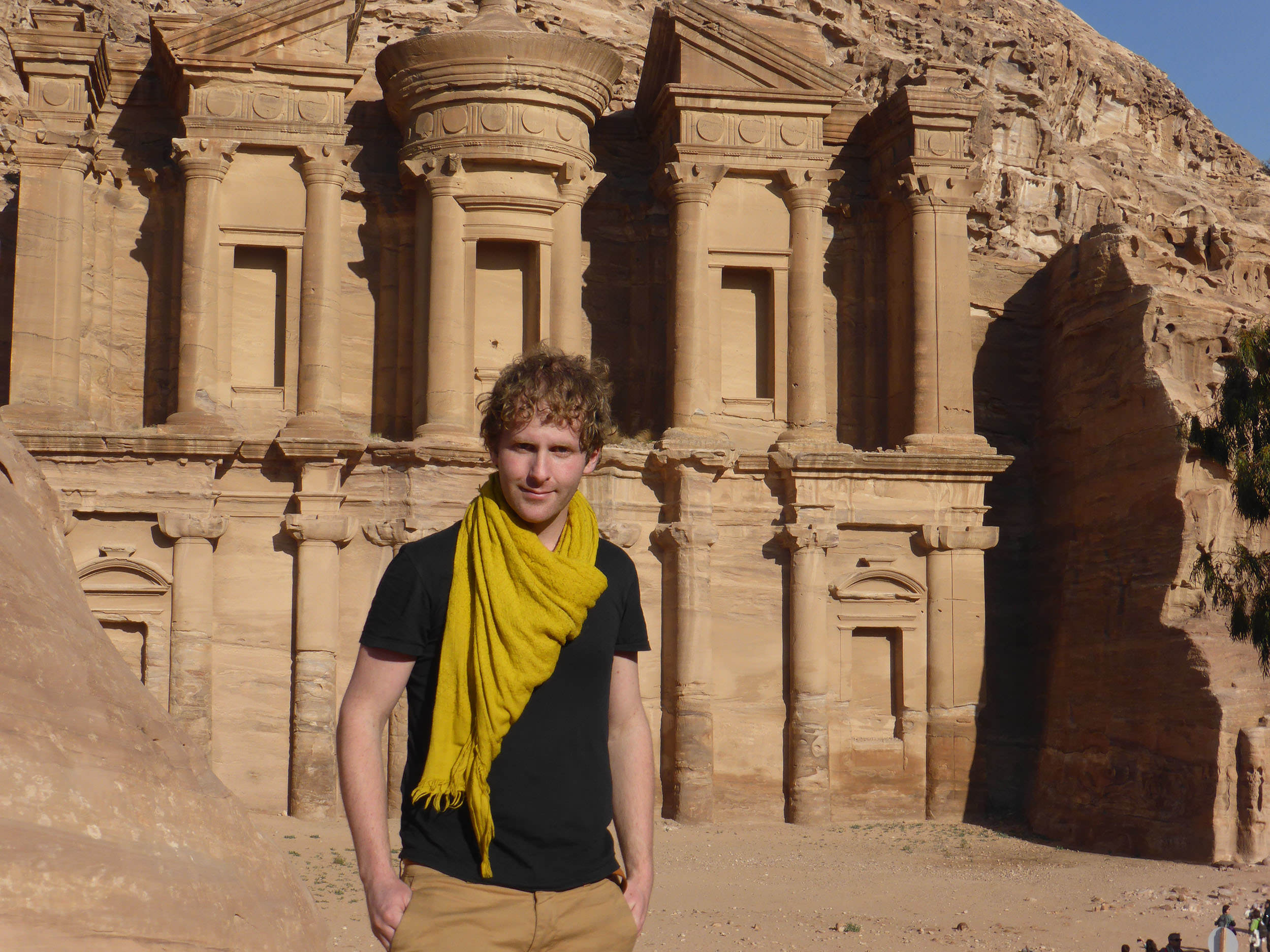
Here’s the itinerary I built as a solo backpacker, spending two weeks exploring Jordan before moving on to Israel and Palestine (the West Bank).
2-Week Jordan Travel Itinerary Overview
➡ Days 1–2: Amman
Begin in Amman, exploring the Amman Citadel, Roman Theatre, and the Jordan Museum. Wander through Downtown to get a feel for the city’s unique mix of cultures.
➡ Day 3: Bethany Beyond the Jordan & Mount Nebo
Visit Bethany Beyond the Jordan, the site where Jesus was baptised. Continue to Mount Nebo for scenic views across the Dead Sea and biblical landmarks.
➡ Day 4: Desert Castles
Explore the Desert Castles, including Qasr Al-Kharanah, the fresco-adorned Quseir Amra, and the historic Qasr Al-Azraq.
➡ Day 5: Jerash
Head north to Jerash, where you can spend the day wandering the remarkably preserved Roman ruins, including Hadrian’s Arch, the Oval Plaza, and the Temple of Artemis.
➡ Days 6–8: Wadi Musa and Petra
Spend at least two days in Petra. Start with the main sights, including the Siq and the Treasury, then explore further to reach the Monastery and High Place of Sacrifice.
➡ Days 9–10: Wadi Rum
Take a guided jeep tour across Wadi Rum’s vast desert. Spend the night in a Bedouin camp under the stars, and enjoy a second day exploring the area’s scenic dunes and rock formations.
➡ Days 11–13: Aqaba
Relax in Aqaba on the Red Sea. Dive or snorkel to see coral reefs, or unwind on the beach.
➡ Day 14: Return to Amman or Continue to Israel or Egypt
Wrap up your journey with options to either return to Amman to complete your Jordan adventure or continue your travels. From Aqaba, you can cross into Israel through Eilat or take a ferry to Taba in Egypt for your next destination.
AMMAN (عَمّان): Start of Your 2-Week Jordan Travel Itinerary (Days 1-2)
As you start your 2-week Jordan travel itinerary, dive into the capital’s unique culture.
A challenge to penetrate, at first, the real dynamism emerges when you spend some time on the streets of Downtown.
It’s here that I began to see the convergence of culture with which Ammanis identify: Circassians, Palestinians, Iraqis, Libyans and Syrians form part of the national character, having arrived (a result of displacement) voluntarily or as exiles from their homelands. Add to this the traditions of the Bedouin, and the Amman-beneath-the-surface begins to shine, particularly when you witness personalities jockeying for control.
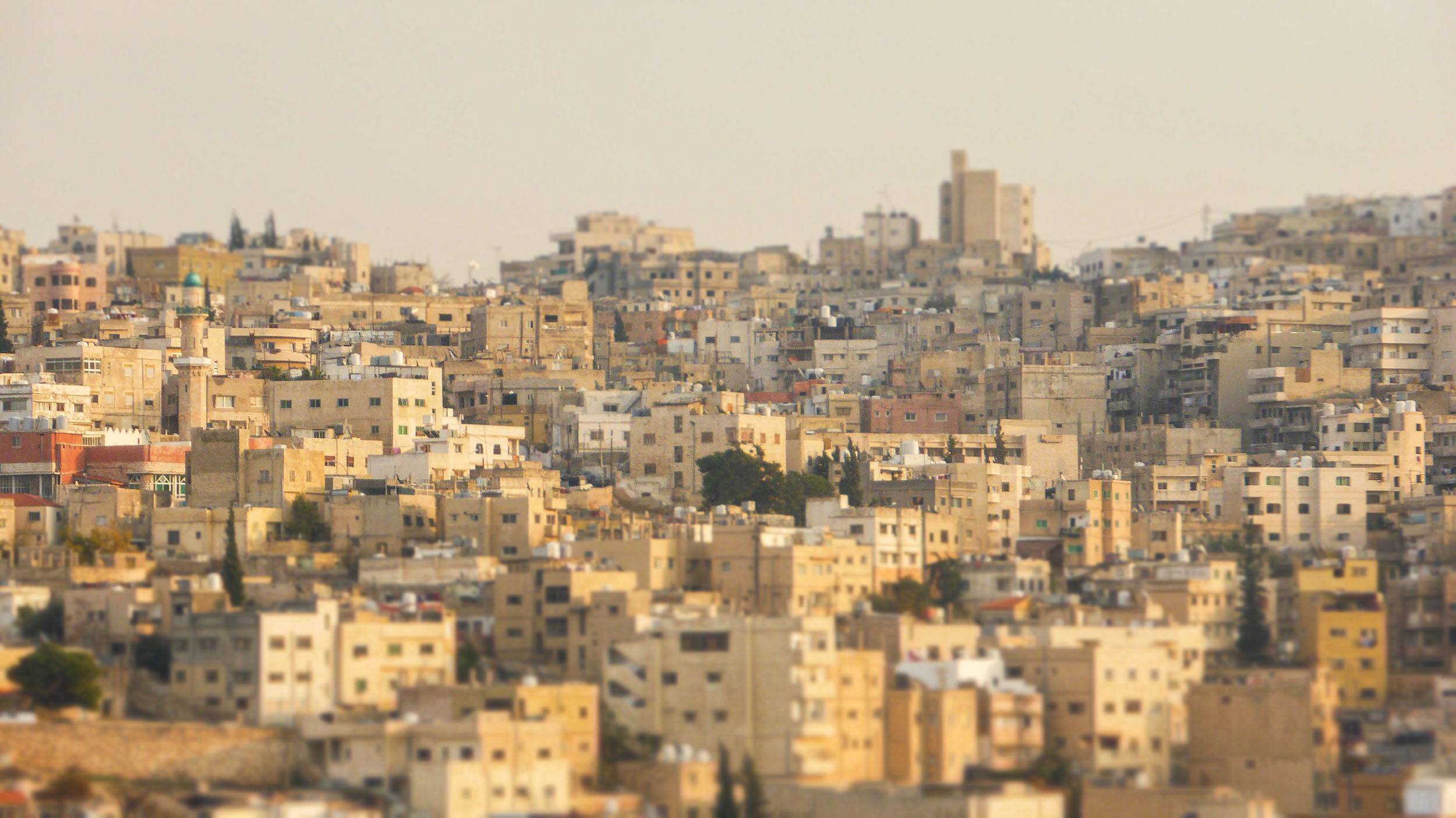
As a 20th-century invention (the ancient ruins comprising no more than a day’s sightseeing), expect a civilised city with rejuvenated neighbourhoods, the new lustre of investment dollars and a buzzing gallery-cum-café scene. It does lack the history and aroma of its controversial neighbours. What it loses in antiquity, however, it gains in a burgeoning arts scene, and a geniality that makes it a pleasurable city to visit.
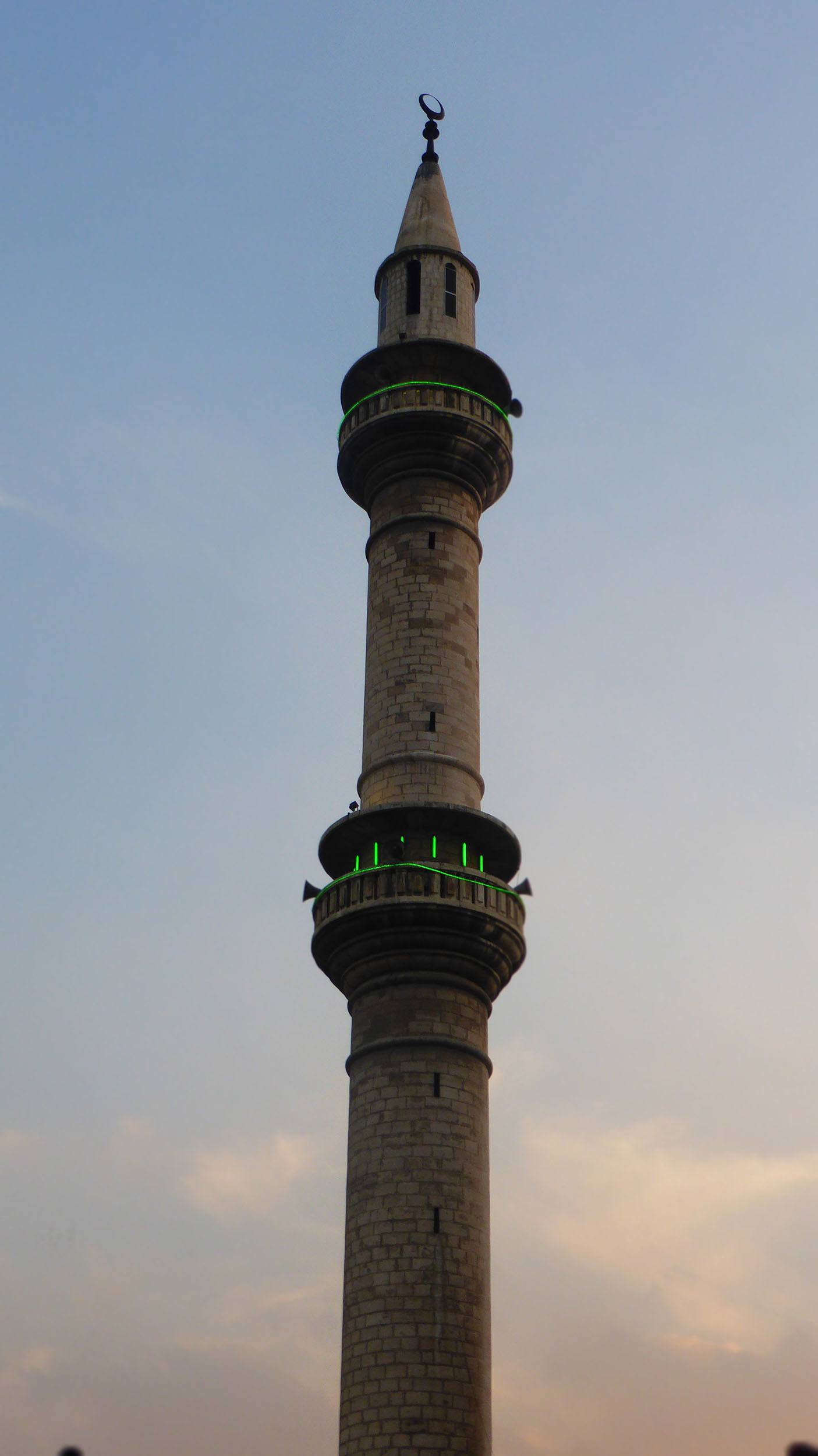
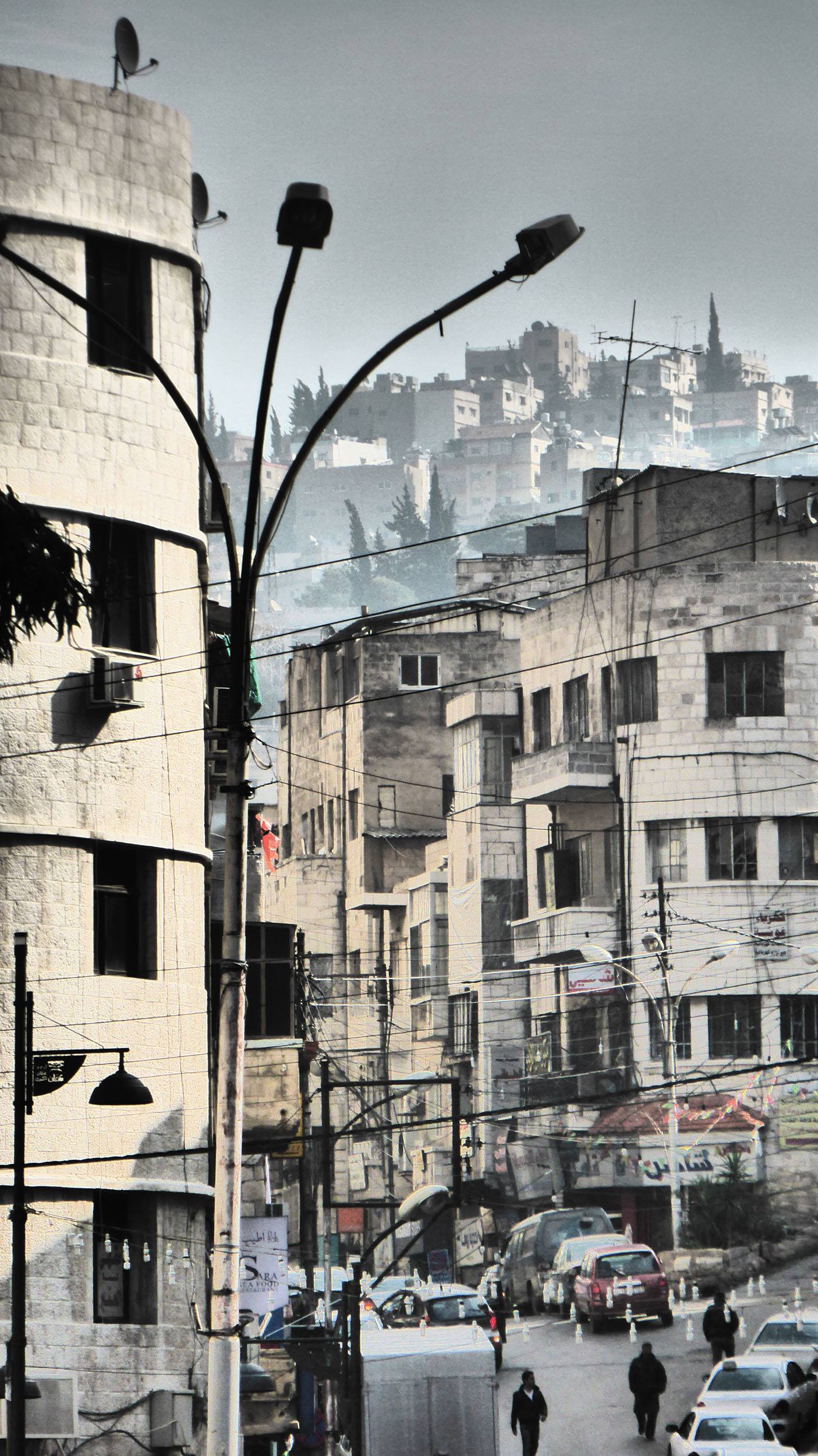
I spent a while in Amman, using it as a base for regional exploration. I spent one day seeing the sights. I spent longer, in the evenings following day trips out of Amman, wandering the streets and letting it get under my skin.
As such, even though not listed as a site of interest (below), I highly recommend taking to the streets, engaging with locals and letting the city and its vibrancy allure you.
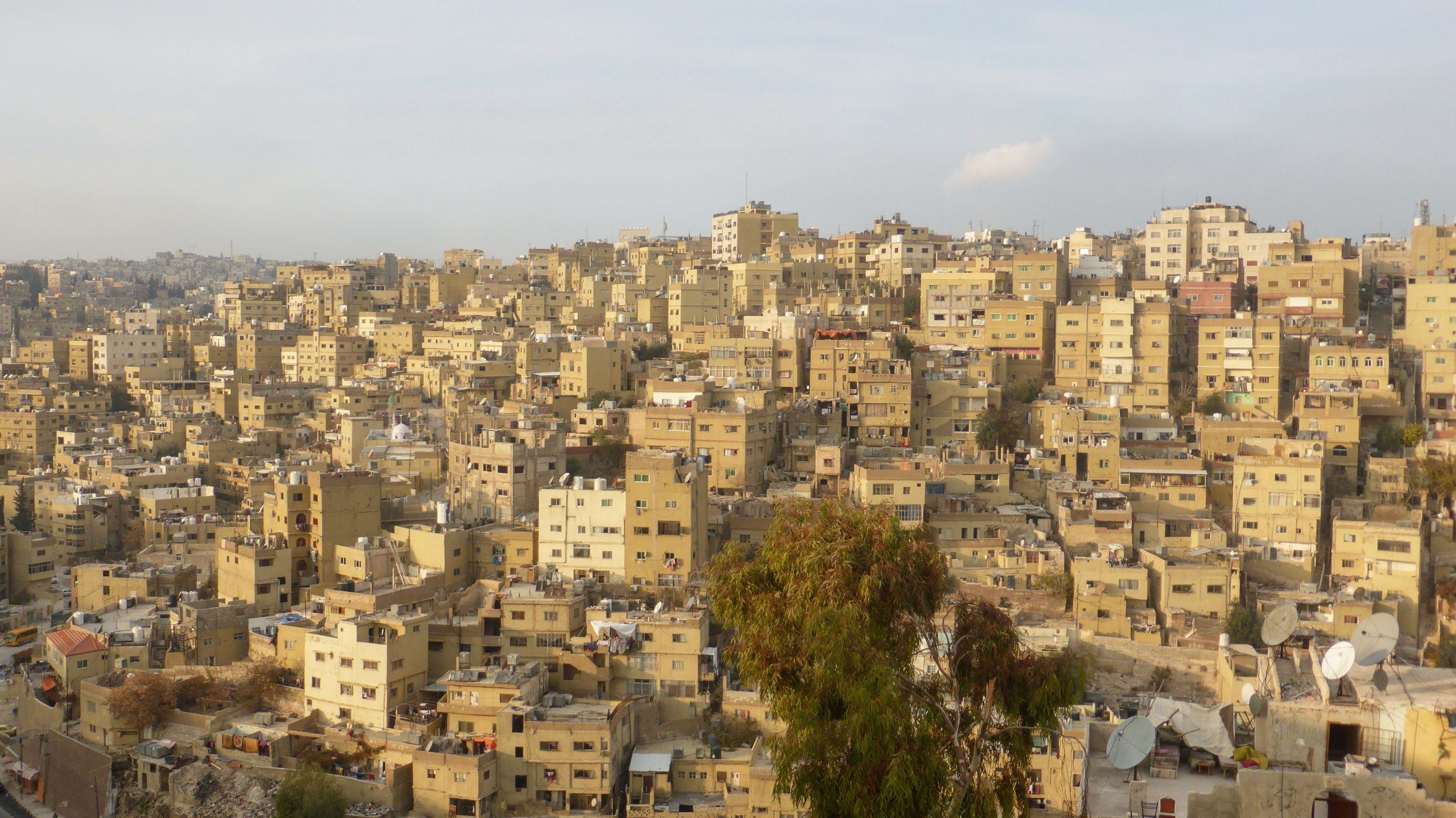
Here are the few historical sights worthy of a visit.
Amman Highlights: Essential Stops on Your 2-Week Jordan Travel Itinerary
Amman Citadel
Located high on Jabal al-Qal’a, a hill near downtown Amman, the citadel boasts an almighty array of architecture, having been inhabited by the Romans, Ottomans, Byzantine and Ayyubid.
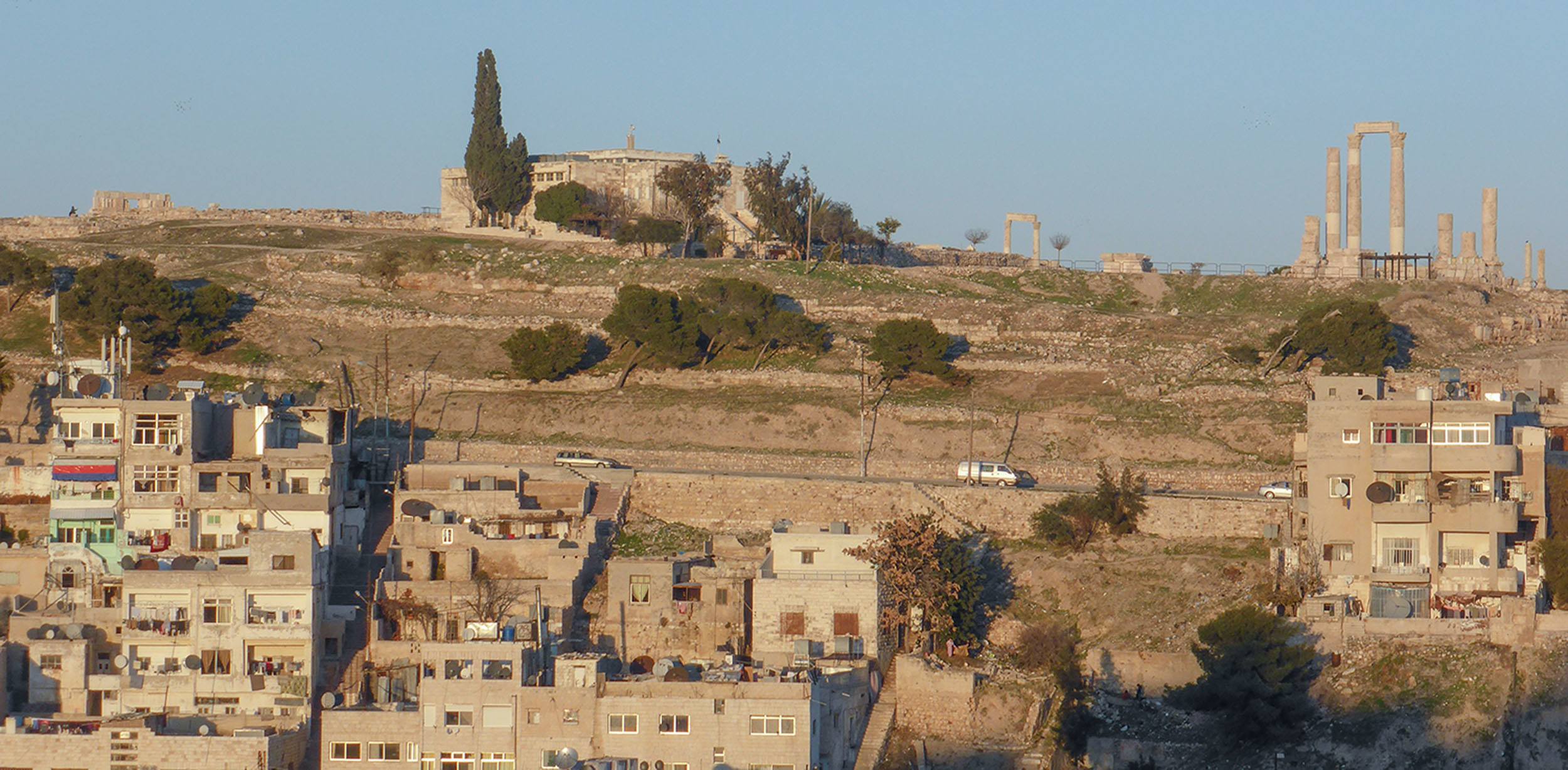
I sadly arrived 30 minutes before closing, my time occupied elsewhere in Amman, and couldn’t see the point in rushing around. However, I wish I’d given it a few hours, as there appeared to be a few relics worth seeing (including the hand of Hercules).
At 3JD for entry, there’s no reason not to come. The view alone over Amman is worthy of a visit alone.
Roman Theatre
There really is a little piece of Rome everywhere, isn’t there?
The beautifully restored Roman Theatre is perhaps an Amman highlight in terms of ancient architecture and history. Cut into the side of a hill, it was built in the 2nd century and can sit up to 6000 bottoms at any given time.

It wasn’t always well-maintained, hence its 1957 reconstruction, which means not every detail is an accurate representation of the theatre that originally was. I’m not a history expert, so all I saw was architectural finesse linked to the ancient world.
Visit in the morning for the best shots, as it’s north facing and gets bathed in beautiful sunlight.
Jordan Museum
It’s a showcase of Jordan from its Nabataean genesis to the current cultural and political climate. Esteemed as ‘the storyteller of Jordan’ and a ‘national centre for learning and knowledge’, the beautifully presented displays make it perhaps one of the best museums I’ve seen.
Detailed, informative and aesthetically engaging, the exhibits bring the country’s impressive history to life.
If you’re not planning a side trip to Israel, then visiting the Jordan Museum is an opportunity to see Jordan’s portion of the Dead Sea Scrolls. It was time and money well spent.
If you’re looking to hit all the highlights without the hassle of navigating on your own, you might find this Full-Day Amman Private City Tour helpful. It provides transport to the major sights with a local driver, who’s knowledgeable and may share some insights along the way, though this is not a guided tour. Tickets to the sites may not be included, so be sure to check ahead.
➡ Book Your Tour Here
Recommended Length of Stay in Amman
Four to five days including three day trips (one to Bethany Beyond the Jordan and Mount Nebo, another to Jerash and the other to the Desert Castles).
On the first (and fifth) day, visit the key sights of Amman. On day two, head south east to Bethany Beyond the Jordan, the Dead Sea and Mt Nebo. On day three, take a trip into the eastern desert to visit the Desert Castles, followed by a day in Jerash on day four.
Accommodation - Staying in Amman
I stayed at Cliff Hotel, more of a hostel than a hotel; I enjoyed my time. The amenities were in disrepair, the water cold and the building a crumbling mess. However, the atmosphere was alive with the spirit of Middle Eastern hospitality thanks to the gregarious staff, the location superb in the heart of downtown and the welcome warm.
Here are some other options.
Budget: Carob Hostel
If you're looking for a budget-friendly spot in Amman, Carob Hostel is a great choice for solo travellers. With a high rating for its location (9.4!), it's close to top spots like the Temple of Hercules and Rainbow Street.
Plus, they've got a cool setup — think garden, shared lounge, terrace, and even a bar. There's a shared kitchen if you're keen to save on meals, and they offer daily breakfasts with vegetarian and vegan options too.
Mid-Range: New MerryLand Hotel
For a comfortable, mid-range stay in Amman, the New MerryLand Hotel has everything you need. Located just a short distance from popular spots like Rainbow Street and the Temple of Hercules, it's super convenient for sightseeing. The rooms come with all the essentials — air conditioning, minibar, and even a kettle for a quick tea or coffee.
Plus, they offer a daily continental breakfast, which is always a win!
High-End: Four Seasons Hotel Amman
For a splurge-worthy stay in Amman, the Four Seasons Hotel Amman delivers on luxury and comfort, perched on the city's highest hill with panoramic views. This place has it all — indoor and outdoor pools, a fully equipped spa, and even a squash court if you’re up for a game. With multiple dining options from Jordanian flavours at The Foyer Lounge to updated French classics at La Capitale, you won’t go hungry here.
Food - Eating in Amman
A visit to Amman wouldn’t be complete without a meal at Hashem Restaurant Downtown — an institution in its own right.
There are no menus here, which means no time is wasted in getting you fed. The atmosphere is hectic, with Arabic words flying around the room, and at first, it can be a bit confusing. But that’s part of the charm, the energy, and what makes the experience so interesting — it’s truly multi-sensorial.
The options are simple, with a set of classic dishes always on offer. I started with a plate of fresh vegetables and a piece of bread. From there, I got to choose from falafel (a must), moutabel, ful medames, or hummus.

The restaurant is vegetarian, so don’t expect any meat dishes here — but you can find that a few restaurants down the street.
Of all the falafel I’ve tried in the Middle East, the one at Hashem may just top the list of the most flavourful. Fried fresh, these single-bite balls of chickpea and spice are crispy on the outside and fluffy on the inside. While there are variations — like falafel filled with onion and sumac — nothing beats the traditional version.
The atmosphere is chaotic, but in a way, that only adds to the experience. Whether you sit inside or outside, the ambiance is nearly the same — full of energy and life.
I’d eat here again in a heartbeat.
If you’re keen to dive deeper into Amman’s food scene and discover local favourites beyond Hashem’s, consider joining this Amman Food Tour. It’s a great way to sample traditional Jordanian dishes with the guidance of a local who knows the best spots.
➡ Book Your Tour Here
Transportation - Getting around Amman
Amman is not a user-friendly city in terms of navigation, in part thanks to its rapid growth during the last century. Learn the following as a point of reference, and hopefully you’ll always be in a place that can be linked to one of them:
- the districts of Amman
- the jebels (or hills)
I spent my time wandering around either with a local or alone, asking people I met lots of navigation related questions. At the time, I didn’t have a phone, so Google Maps and Maps.me weren’t at my fingertips. They may make things a little easier.
On Foot
As most who follow me regularly will have learned by now, I love nothing more than getting to know new places on foot (or sitting side by side with locals in public transport). Amman, sadly, is not pedestrian friendly, which, to me, made it a gem – an authentic experience littered with opportunities to get to know Jordanians. It’s a hilly city, there are no pavements, no crossings, lots of bustle, and the streets are maze-like. I asked my way around and made plenty of friends on the way. Easier perhaps than walking (as Amman is relatively large) is taking the bus.
By Bus
There are plenty, they are numbered, destinations are written in Arabic at the front, and conductors do not give change. Check out the bus routes by downloading the App (search for Amman Bus).
By Taxi
White taxis are shared (and follow a set route) while yellow and grey taxis function like taxis anywhere else in the world. Most trips should cost you less than 3JD.
Transportation - Getting to Amman
By Air
For most travellers to Jordan, including me, Amman will be the starting point, and flying is the most common way to get there. The Queen Alia International Airport (AMM), located about 30 km (18 miles) south of the city centre, is the primary gateway for international flights.
Amman is well-connected to major cities worldwide, with a variety of airlines servicing the airport. Whether you're flying from Europe, the Middle East, or Asia, there’s likely a direct flight option available.
To help you find the best deals on flights, check out the links at the end of this article under ‘Transportation – Getting to Jordan’, where I’ve listed recommended flight search engines that consistently offer the best fares.
Once you land in Amman, you’ll find a variety of transportation options to get to the city centre, including taxis, ride-hailing services like Uber, or the airport shuttle bus service.
As for travelling to other parts of Jordan, check out the respective city sections below for more detailed transportation information for each location.
By Bus
There are three main bus stations in Amman, the end (and starting) point for major destinations nationwide. They are: Tararbour, Abdali and JETT stations.
Ask locally for up to date information as it frequently changes.
By Taxi
I shared a taxi (with a Polish traveller I’d met the day before) to get to the border crossing between Jordan and Israel (with transport through Palestine to Jerusalem) on my way out of Jordan, starting in Amman. The journey took one hour and cost 20JD (after negotiation) in total. It works in reverse, for travellers crossing King Hussein Bridge from Israel into Jordan, finishing in Amman.
- Ensure you negotiate the price before getting in.
BETHANY BEYOND THE JORDAN (المغطس) (Day 3)
For many, it’s a dry riverbed at the converge of Jordan and Palestine (or the Palestinian Territory, aka The West Bank). To the religiously inclined, it means much more. The act that officially launched Jesus’ earthly ministry - his baptism by John - likely occurred in a perennial riverbed at Wadi Al-Kharrar.

Comprised of 20 Christian sites, excavated following the initiation of a peace treaty signed in 1994 between Israel and Jordan, spending half a day here is plausible.
I chose to visit the purported site of baptism, then dropped by the Jordan – via a wooden walkway – to watch Russian Orthodox baptise themselves in the divisional river, on the Palestinian side of the tidal waters; it seemed paradoxical, in a way.
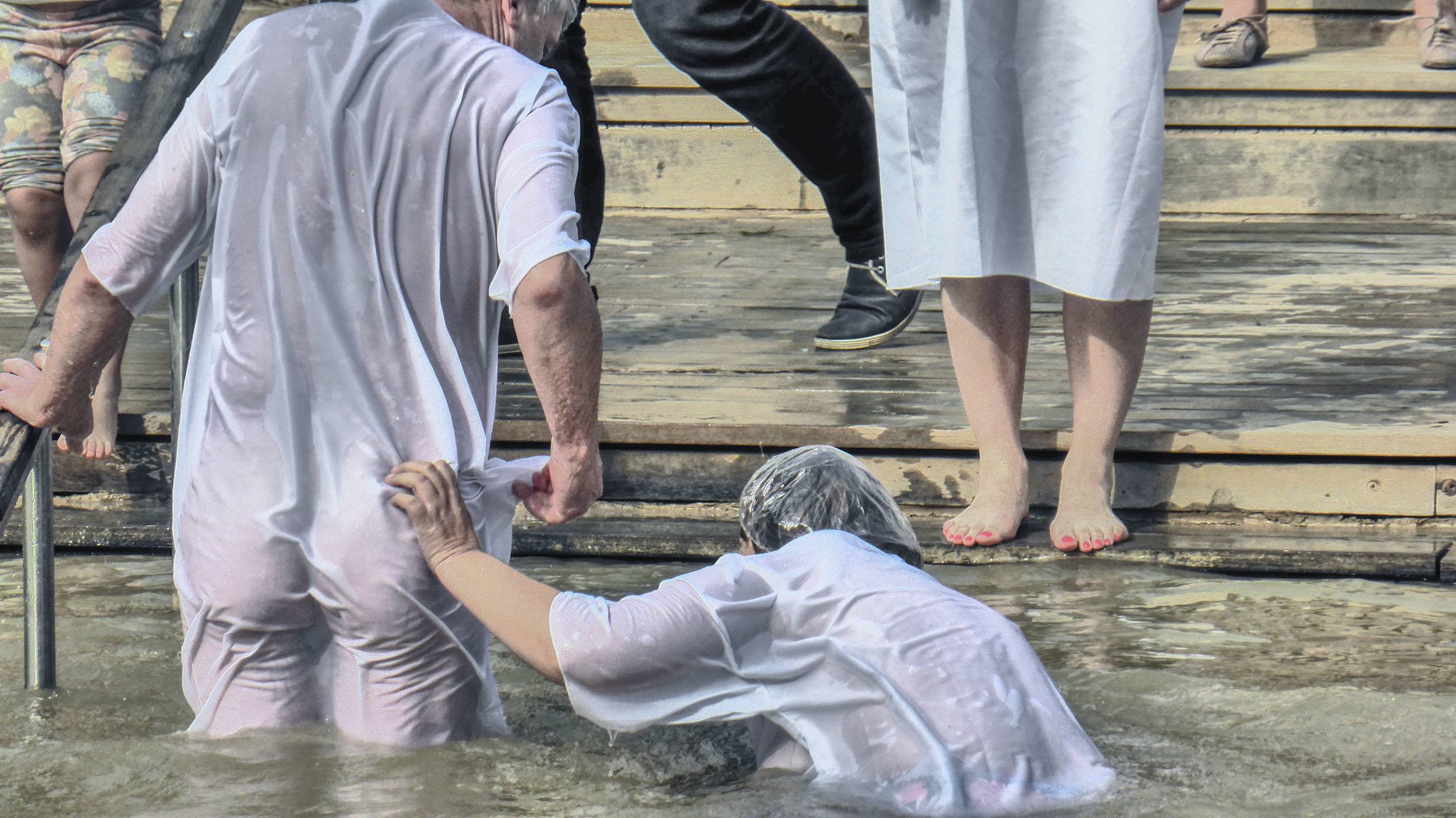
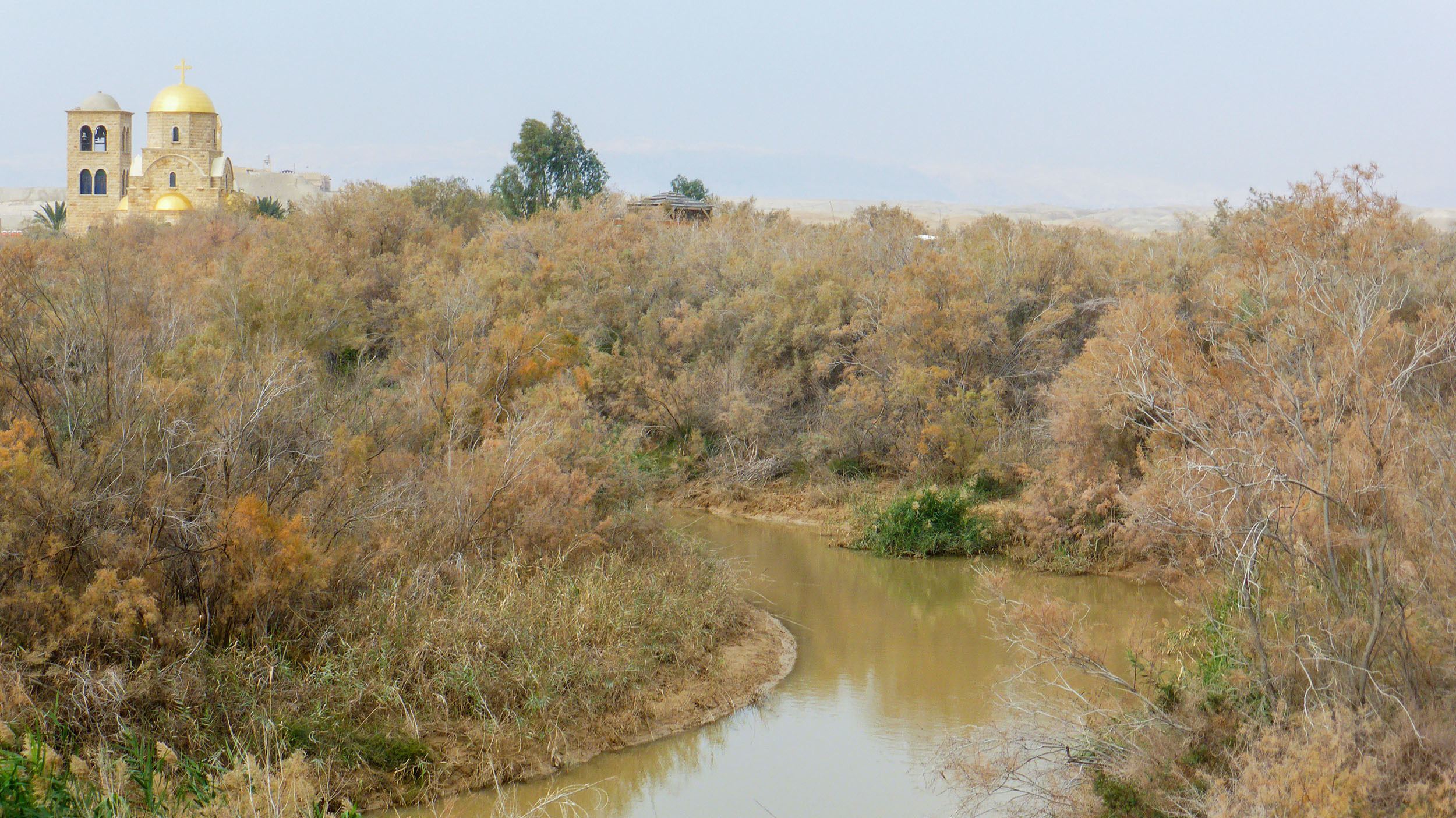
Drop by the visitor information centre for a map and explanation of the various sites to see.
As a person raised with Christian beliefs, it was a significant sight to see. I wasn’t enraptured by the ecclesiastical overtones or religious fervour in which others were swept along but standing beside the site in which Jesus got baptized held meaning. Jordan, particularly this area, is full of such opportunities.
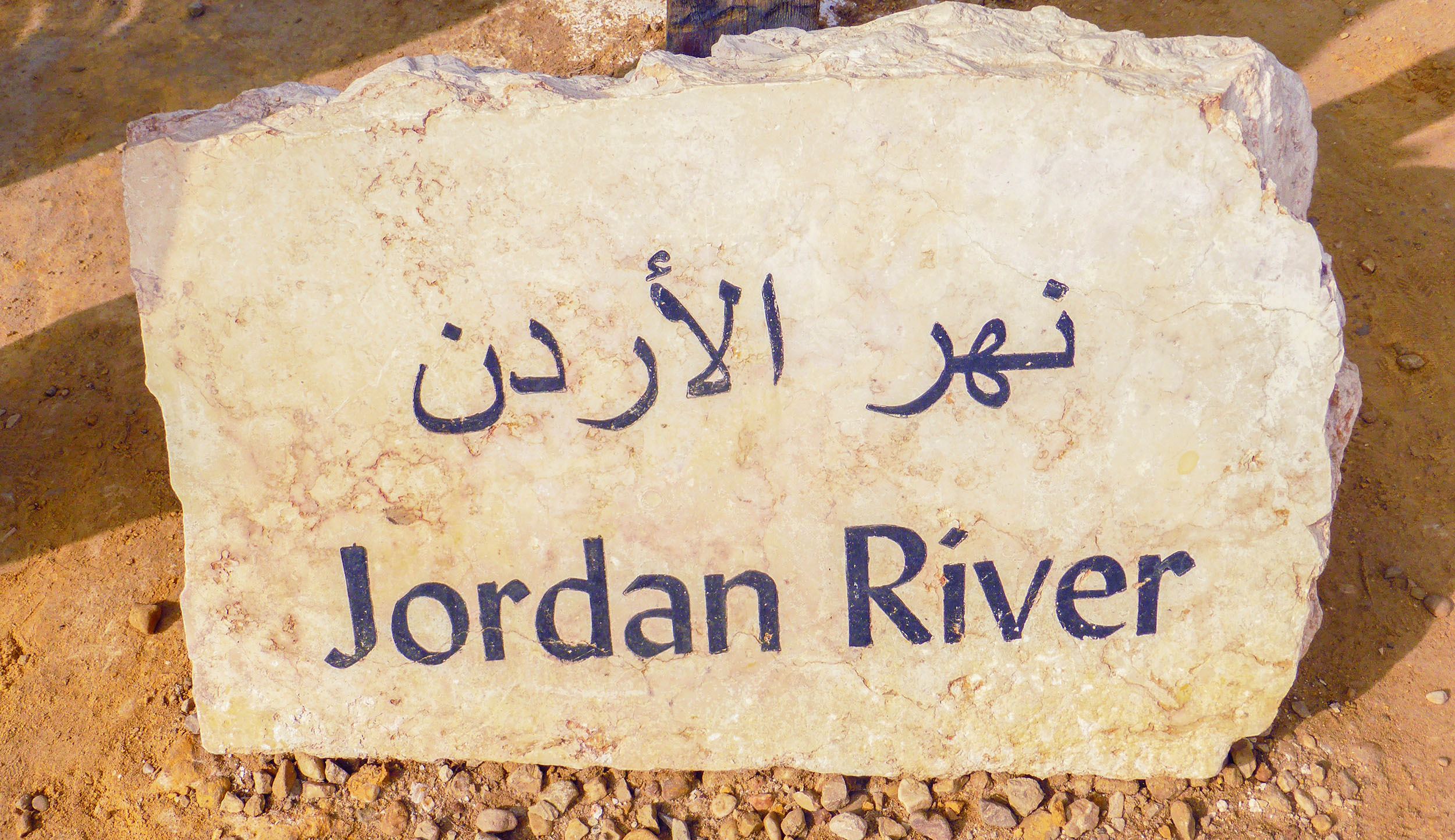

Like Mount Nebo (explained below), Bethany Beyond the Jordan is not a site visited in isolation. It can form part of a day trip in which several clustered, nearby sites are seen together. I visited Bethany Beyond the Jordan and Mount Nebo together, and it’s easy to add the Dead Sea for a full day of exploration.
For a convenient way to see all three without managing separate transport, you might consider this Bethany, Mt Nebo & Madaba Full-Day Private Tour from Amman, which includes a knowledgeable driver to the key points of interest.
➡ Book Your Tour Here
Recommended Length of Stay in Bethany Beyond the Jordan
Half a day.
Transportation - Getting to Bethany Beyond the Jordan
By Car
Sadly, much to my dismay, without a car of my own or a driver for the day, getting here is challenging. I talked to George at Cliff Hotel in Amman, a kindred young Jordanian, who negotiated a fair price and acted as guide-cum-driver for the day.
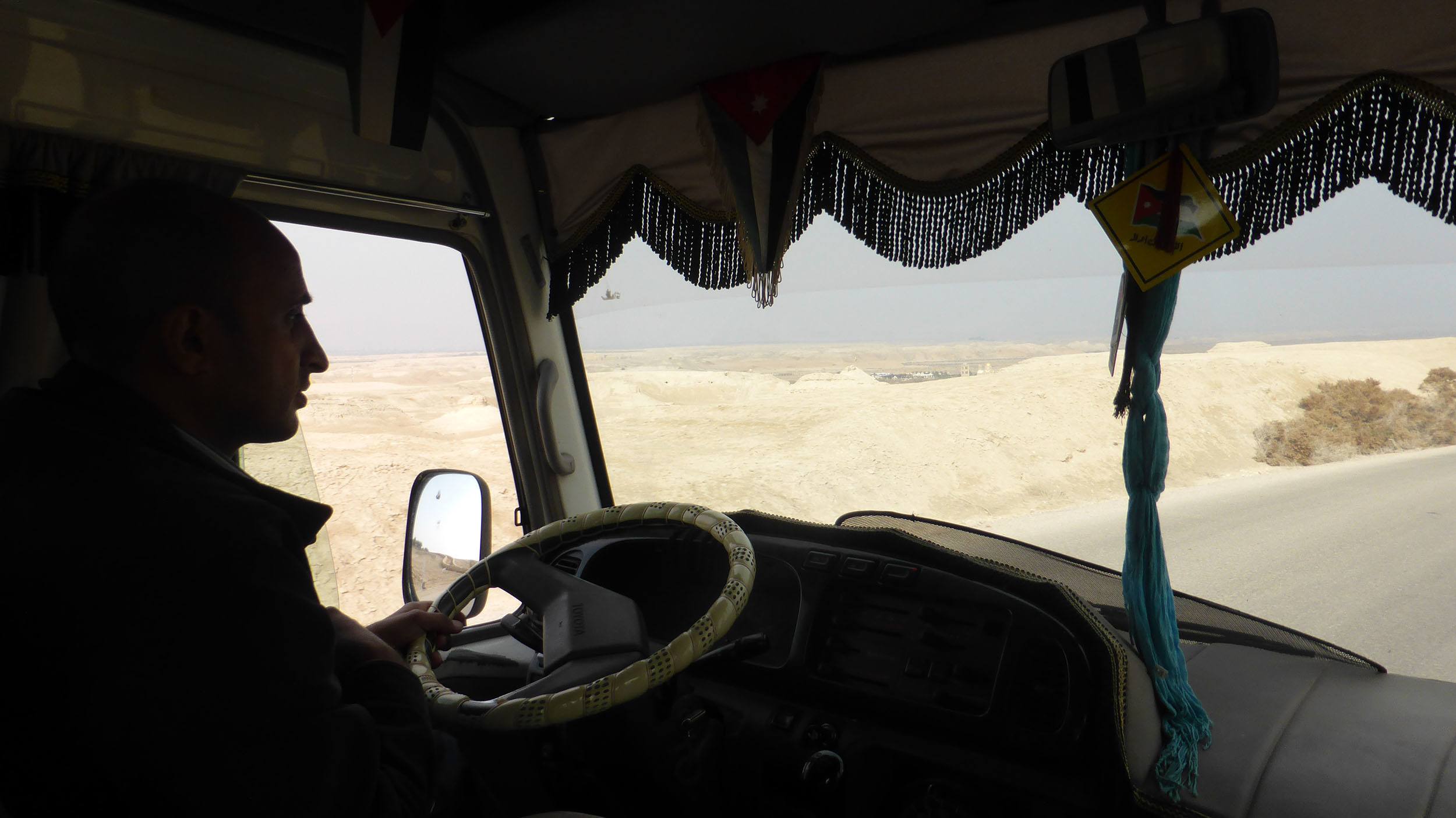
Ideally, you’ll meet others with similar interests, and may be able to cut costs by going together. I wasn’t so lucky.
MOUNT NEBO (جبل نيبو) (Day 3)
Mount Nebo, standing at 710 meters above sea level, is an iconic site in both religious and historical terms. In the modern age, there's no restriction on visiting this ridge, but it’s humbling to stand in the very place where Moses was forbidden by God to enter the Promised Land.
The panoramic views across the Dead Sea, Israel, and the Palestinian Territories provide a contemporary contrast to the bleak perspective Moses might have had all those centuries ago.

On a cool January day, the scene before me was nothing short of mesmerising. Standing before a church adorned with ecclesiastical symbols, it was hard not to feel the weight of the religious significance of this vantage point. There’s a spiritual quality to the place that’s hard to put into words — something both serene and deeply moving.
While the exact location of Moses' burial remains a heavily debated subject, it’s believed that he was buried somewhere nearby. Dead by the age of 120, the mystery of his final resting place adds to the mystique of the site. With commanding views across the landscape, one can be forgiven for forgetting about any hidden burial sites — the view is so transcendently captivating that it easily steals the focus.

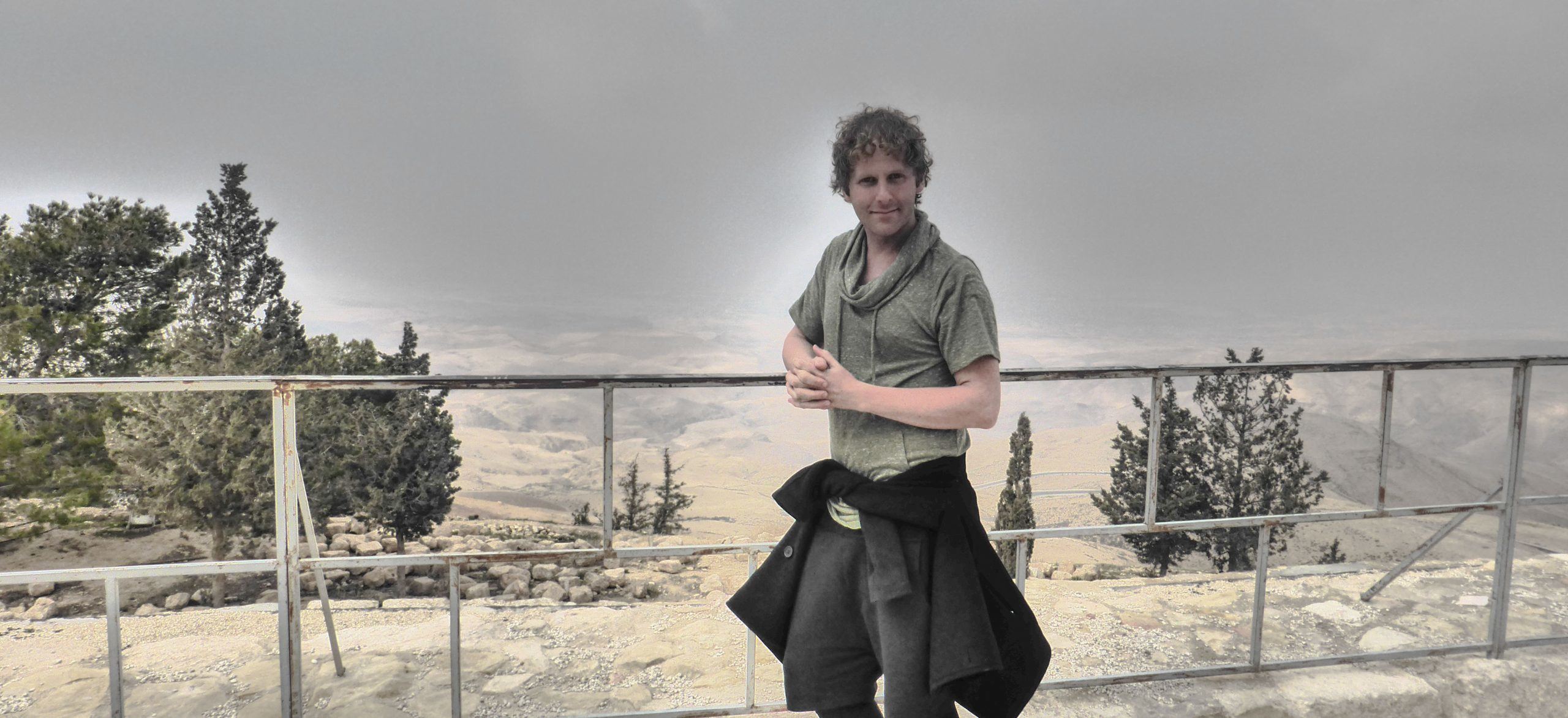
It’s important to note that Mount Nebo isn't a destination in itself but part of a cluster of nearby historical and religious sites. These can all be visited in one day, making for a rich and fulfilling day trip. I visited Mount Nebo as part of my exploration of Bethany Beyond the Jordan, a short distance from the site.
In the same area is the Dead Sea, at least the Jordanian side of the large mass, the third component easily seen as part of a day itinerary to the south-west of Amman.
Recommended Length of Stay in Mount Nebo
An hour or so.
Transportation - Getting to Mount Nebo
By Car
As is the case with Bethany Beyond the Jordan, without a car of my own, getting here was challenging. I included Mount Nebo with Bethany in a single day trip, with a driver I took from Cliff Hotel in Amman, the lovely George.
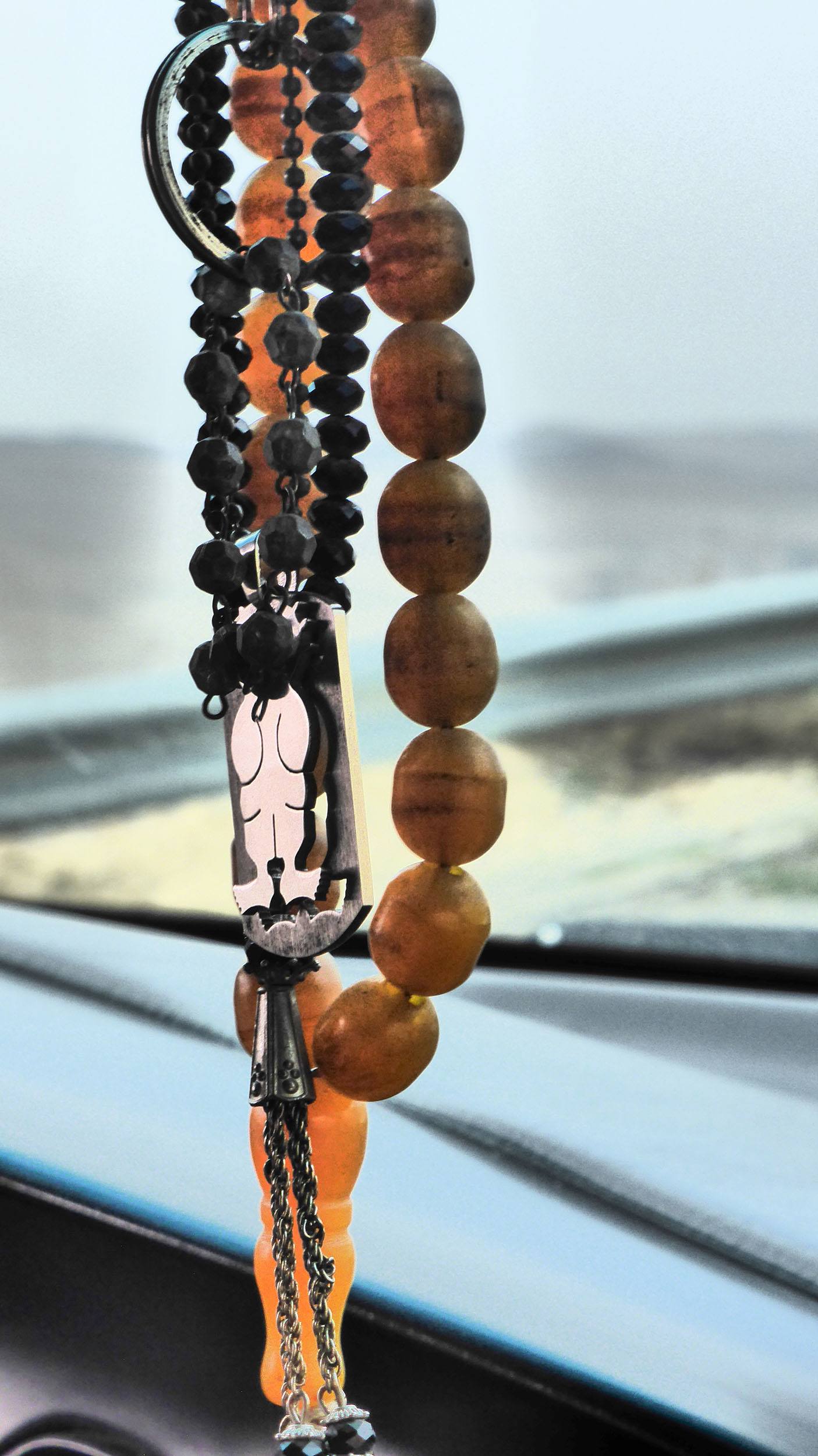
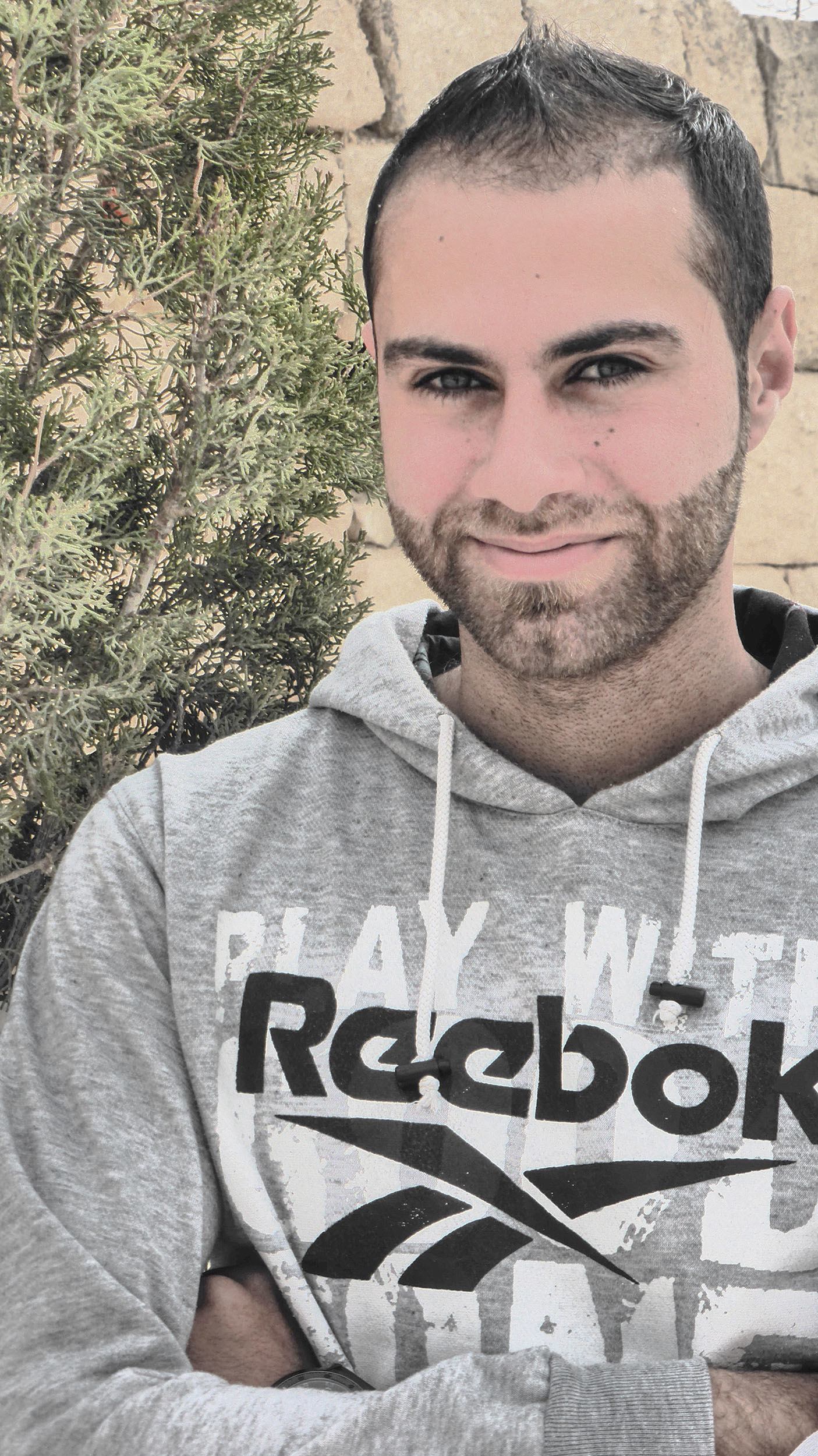
It’s a one-hour drive from Amman, travel time dependent on traffic.
DESERT CASTLES (قلاع الصحراء) (Day 4)
Stretching to the East from Amman towards Saudi Arabia and Iraq are desert plains, vast, unyielding and regionally peppered with relics of early and medieval Islamic Jordan. The steppe-like terrain is high on history: castles, forts, towers and palaces all feature in the basalt landscape.
Given the harsh conditions, barren setting and bipolar weather, survival here seems inane, testament to the ingenuity of the Umayyad caliphs of the seventh and eighth centuries. It’s thanks to them that such relics exist: building commenced during the time in which they flourished. Conjecture occurs, though, when the purpose of the desert castles arises, given a lack of defensive design features.
I spent a day, with new acquaintances and a driver in tow, visiting a handful of the castles. The drive through vast desert planes was almost as captivating as was visiting each respective site.
The following are the three we saw.
Desert Castles to See and Visit in Jordan
Qasr Al-Kharanah
Standing tall amid a vast plain void of verdant vegetation is Qasr Al-Kharanah, the most picturesque of the desert castles.
Marked by neighbouring radio pylons and a dramatic structure, it is the only one of the desert castle collection that’s impressive to see from the outside. Uncertain about its intended purpose, either as a defensive fort, a caravanserai or a retreat for leaders, archaeologists know one thing with conviction: inscriptions date the structure to 711 CE.
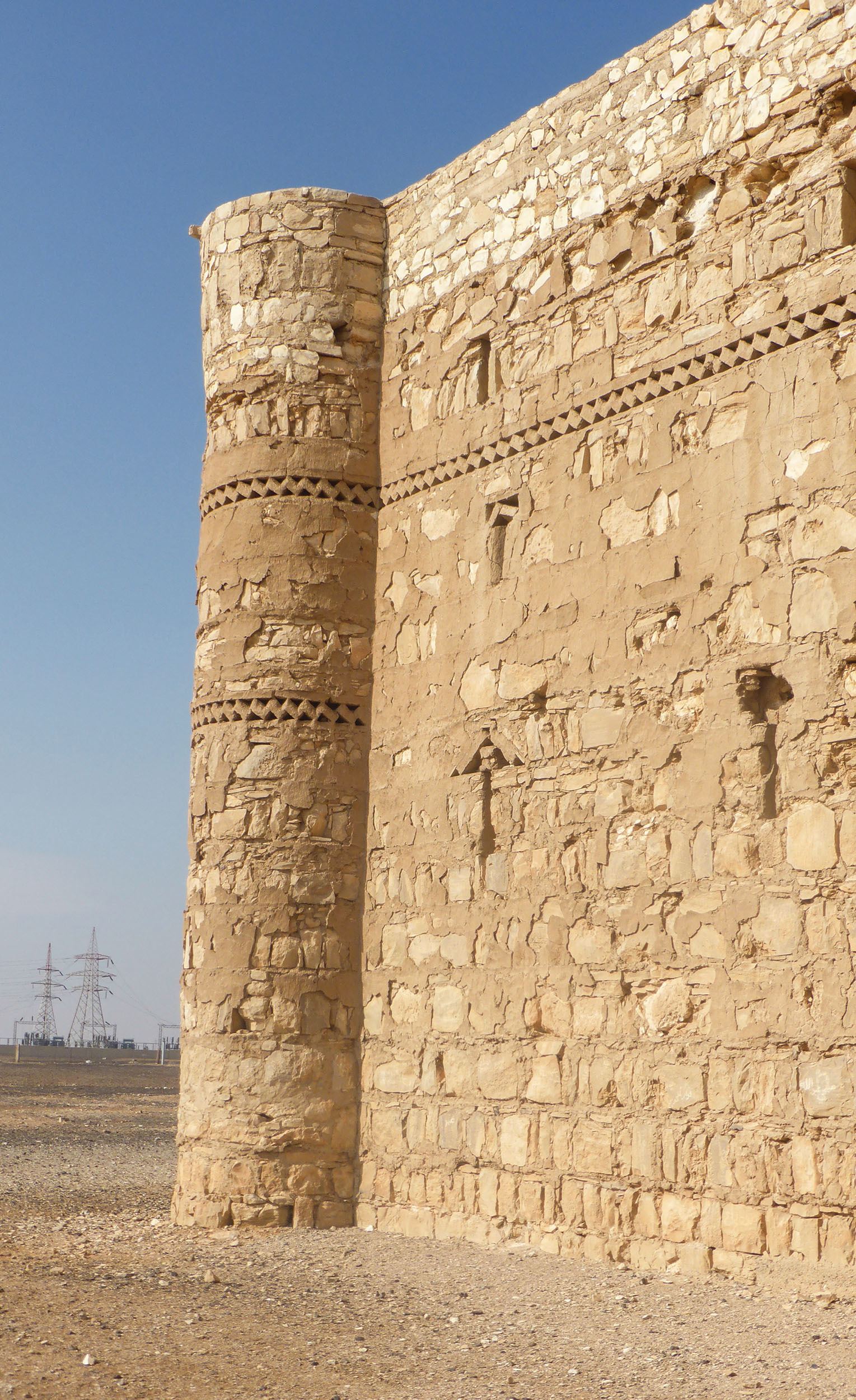
Walking around the perimeter highlighted its height, rigidity and quadrangular nature. Intended purpose aside, the ‘castle’ – which, to me, failed to meet the requirements I had in mind regarding the notion of castles – provided a satisfying glimpse into Jordan’s history.
It was the first we saw in the ‘castle loop’ for the day.
Quseir Amra
Less orthogonal than Qasr Al-Kharanah, Quseir Amra’s curves and mini domes are endearing, but almost belie that which lurks inside: ceilings and walls covered in beautiful frescoes depict caliphs on thrones and rulers of the period.

The structure was built in the 8th century, intended purpose as a fortress and a pleasure palace replete with a reception hall and hammam. It now engrosses visitors with a penchant for secular art of the period. Depictions are many and varied, but include Byzantine portraits, hunting scenes, and inscriptions in Arabic and Greek.
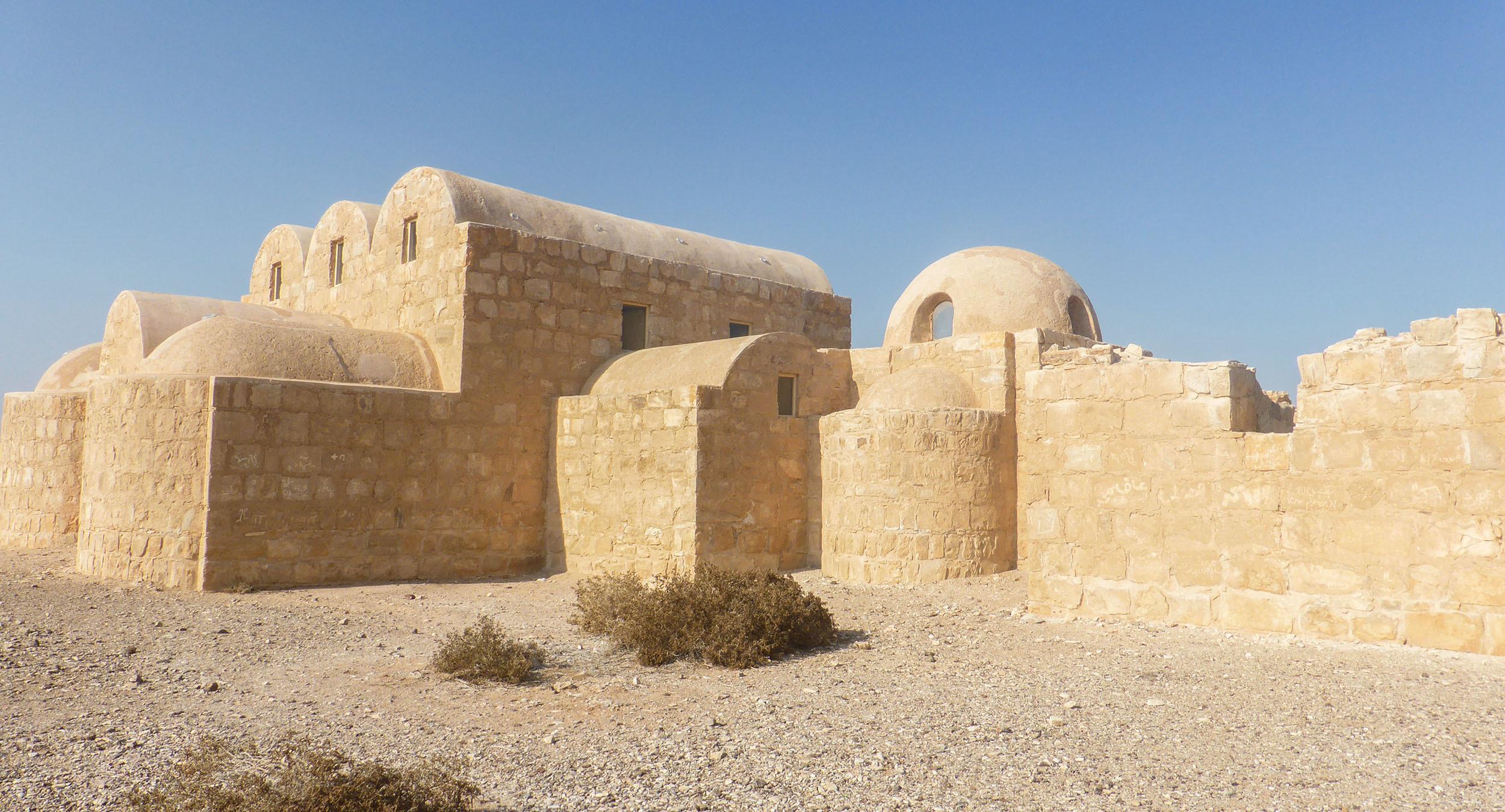
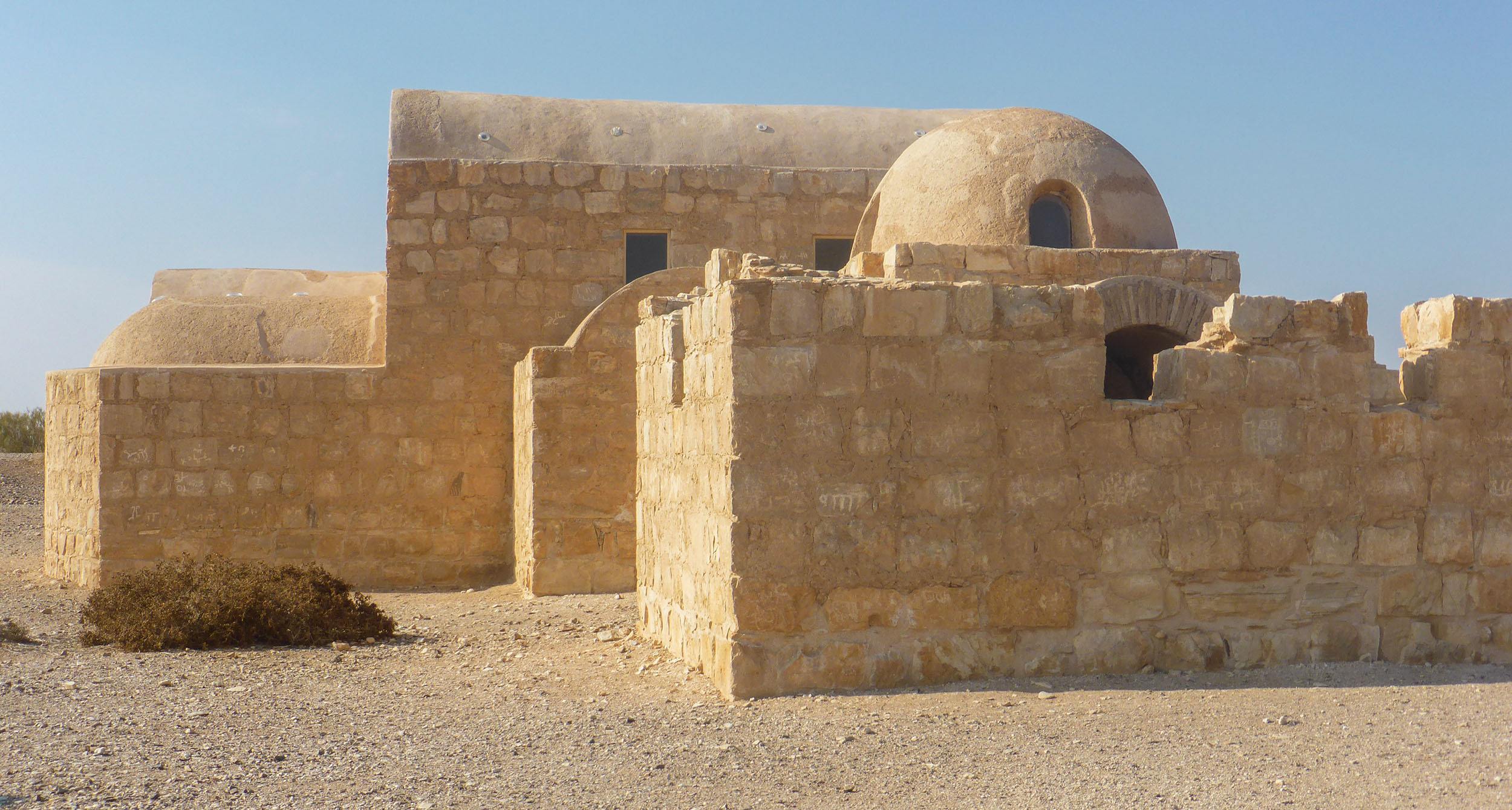
We spent 30 minutes wandering from hall to hammam, admiring frescoes, recreating scenes of daily 8th century life.
Qasr Al Azraq
On the highway to Iraq is the aesthetically uninspiring black fortress of Qasr Al Azraq.
Constructed out of basalt rock, it gives an initial impression of strength and fortification. With a genesis in the 13th century, its historical legacy is impressive: initially used by the Romans, Byzantines and Mamluks between the fourth and 13th centuries and fortified by the Ottoman Turks in the 16th century, it was here that Lawrence of Arabia resided during the Great Arab Revolt of 1917.

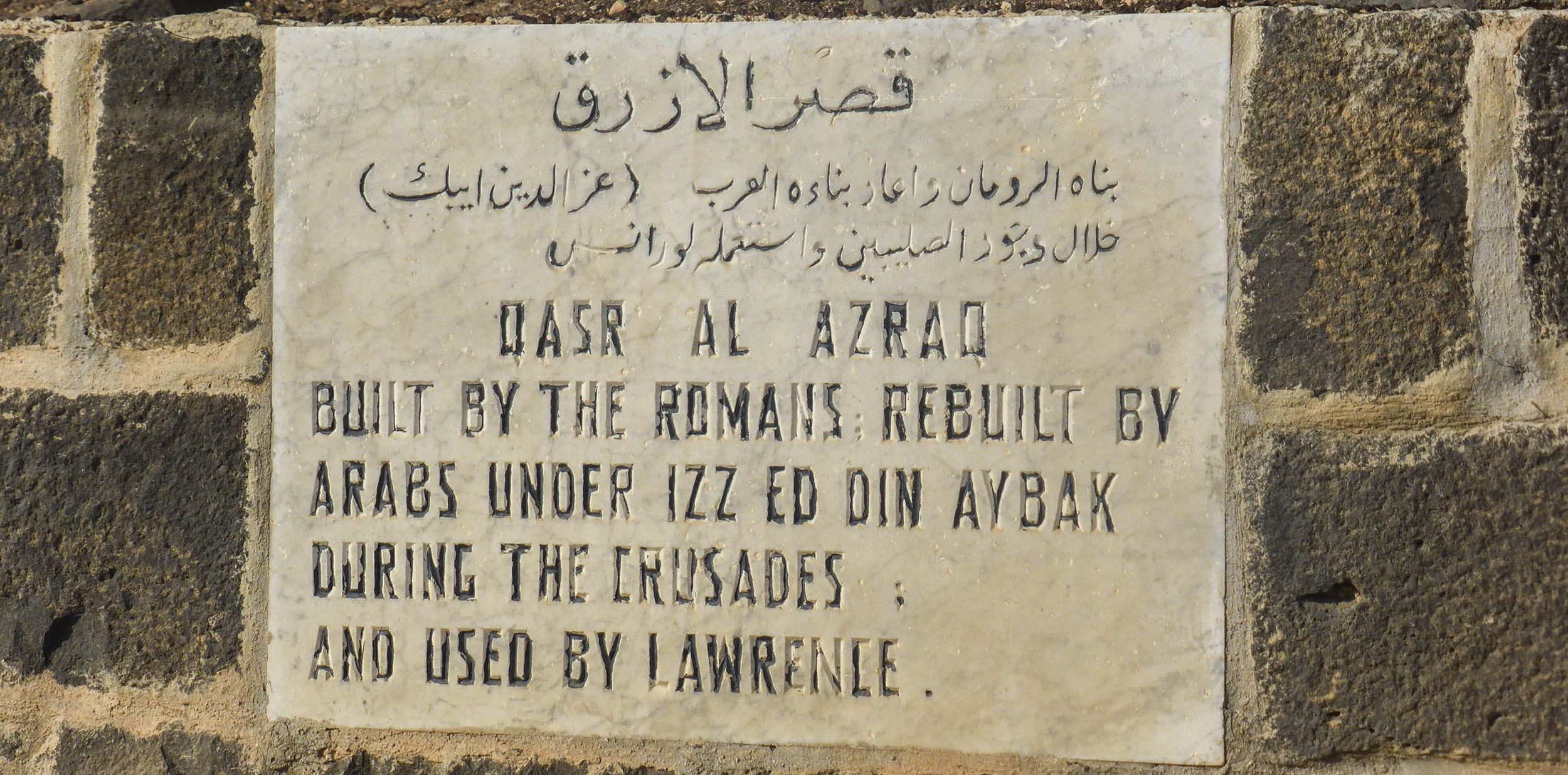
The internal walls echoed the desert warrior’s name, honourably written in the shifting sands of the surrounding desert. He comes to life by speaking with the caretaker, whose father served alongside the Brit throughout the Revolt.
Perhaps the least inspiring in terms of aesthetics, Qasr Al Azraq – for me – won the award of most historically alluring. It was here that our looped desert castle tour came to an end, our driver safely returning us to Amman.
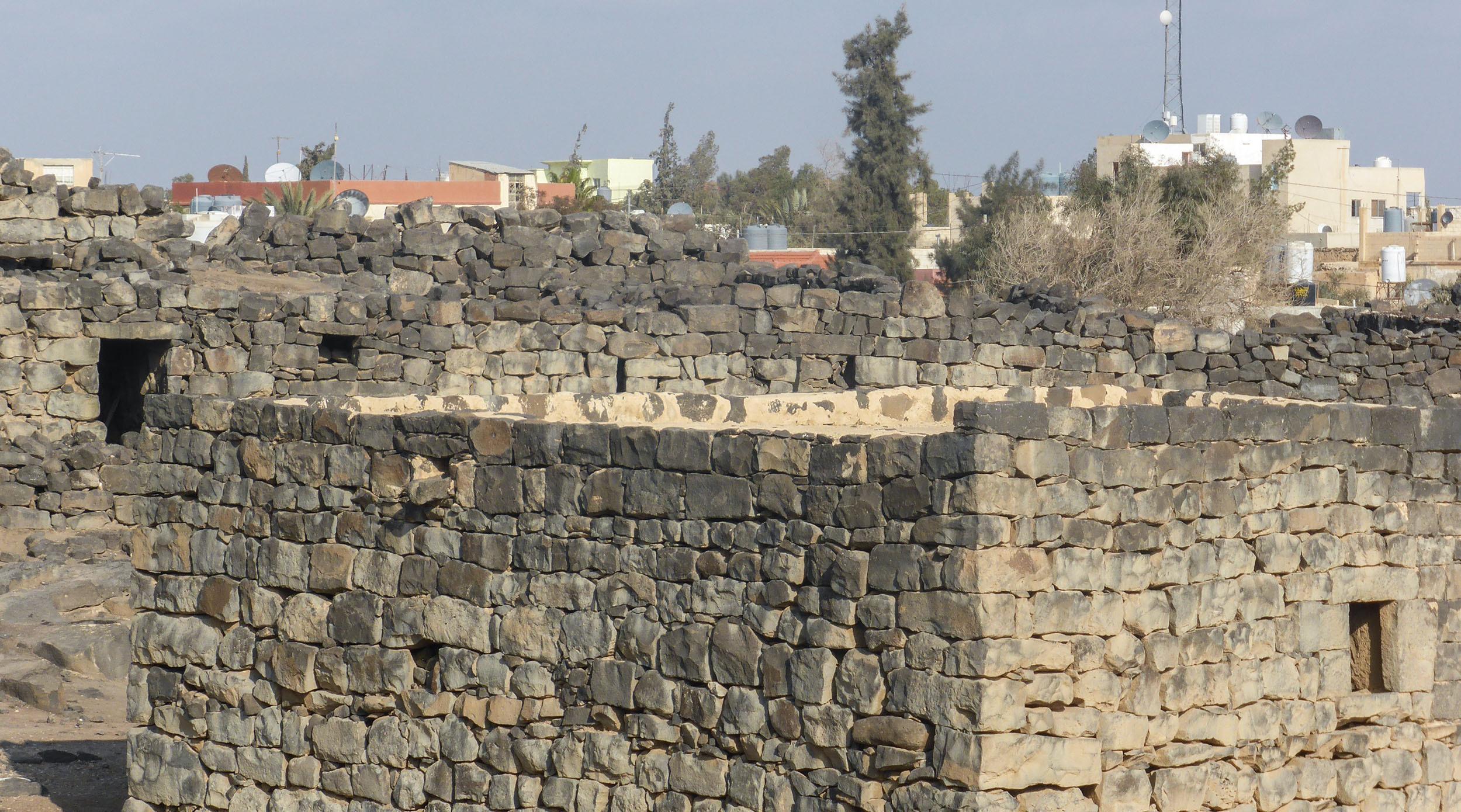

Although not every traveller’s cup of historical tea, I thoroughly enjoyed the jaunt into the desert, pottering about in ruins and letting my imagination transport me to a time of the exotic past.
Recommended Length of Stay Near The Desert Castles
One day.
We spent the better part of a day – including the drive – visiting three sites and attempting to visit two others which were closed.
Transportation - Getting to and around The Desert Castles
By Car/Minivan
The only way to get from site to site is in a car, ideally your own or, in my case, shared with other travellers. Sites are scattered and there is limited public transport in the area.
If you’d prefer not to drive yourself or have the hassle of arranging things, this Desert Castles of Jordan Private Full-Day Tour from Amman offers transport to key sites in the area with a private driver to handle logistics, making the journey more comfortable and hassle-free.
➡ Book Your Tour Here
JERASH (جرش): Ancient Ruins on Your 2-Week Jordan Travel Itinerary (Day 5)
A very close second to Petra in terms of antiquity and popularity is Jerash, the ruined Roman city in the north of Jordan. Its temples, theatres, gates and columns speak to a wide audience, a casual wander through the ruins as impressive as a detailed historical guide. Imperial in nature, getting a feel for life in the 2nd century AD requires - at minimum - three to four hours of your time.
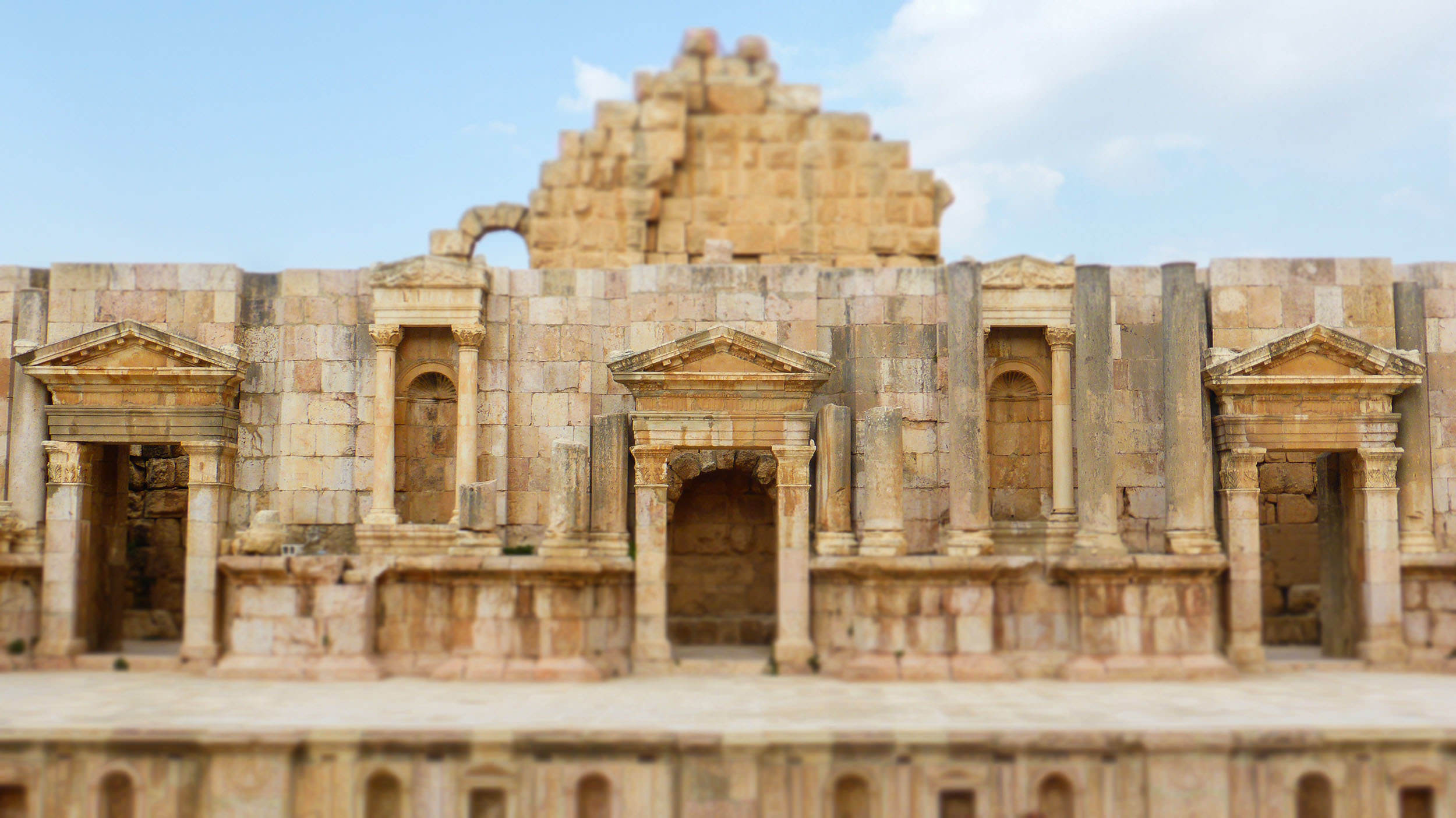
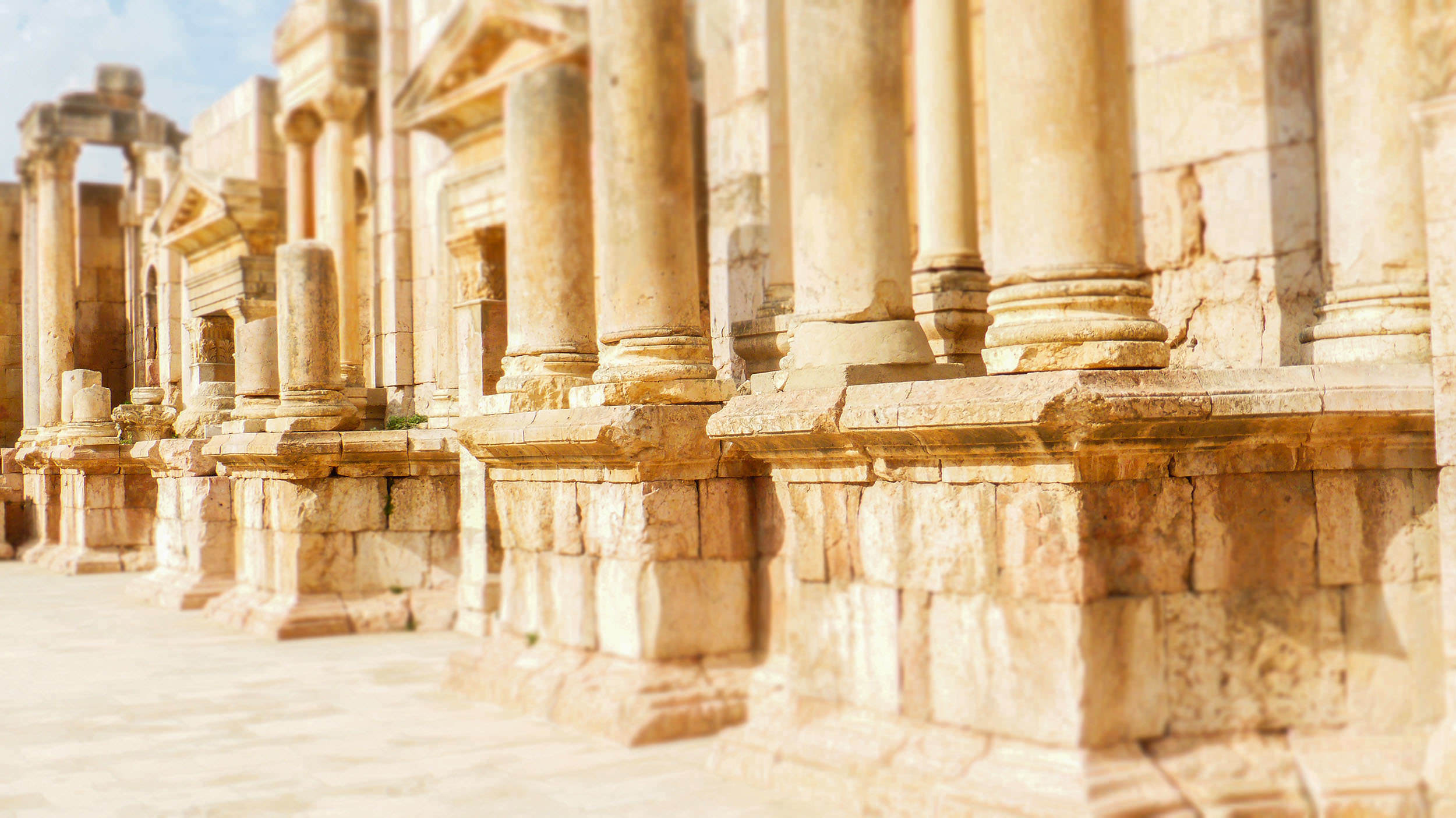
I took public transport from Amman and spent the better part of a day ambling through the site, returning to Amman before dark.
It was daunting at first, given the enormity of the site and lack of signs. I opted to wander alone, but others I saw had employed the knowledge and expertise of a guide. I prefer to wander at my own pace, taking photographs and letting my imagination run wild as I go.
However, the use of a guide on this occasion could have been beneficial, if only for becoming oriented. Guides, without transport included, can be ‘collected’ at the ticket checkpoint.
Alternatively, for a convenient option that covers transport, you might consider this Private Half-Day Tour to Jerash from Amman. The tour includes a knowledgeable driver who can share some context along the way and save you the hassle of navigating public transport.
➡ Book Your Tour Here
The entrance is at the south, close to Hadrian’s Arch.
Here are the features of old Jerash I saw.
Sights to See and Things to Experience In (Old) Jerash
Hadrian’s Arch (Arch of Hadrian)
It’s an imperial welcome to the Roman site, a walk through the monumental 13-metre high arch at the entrance.
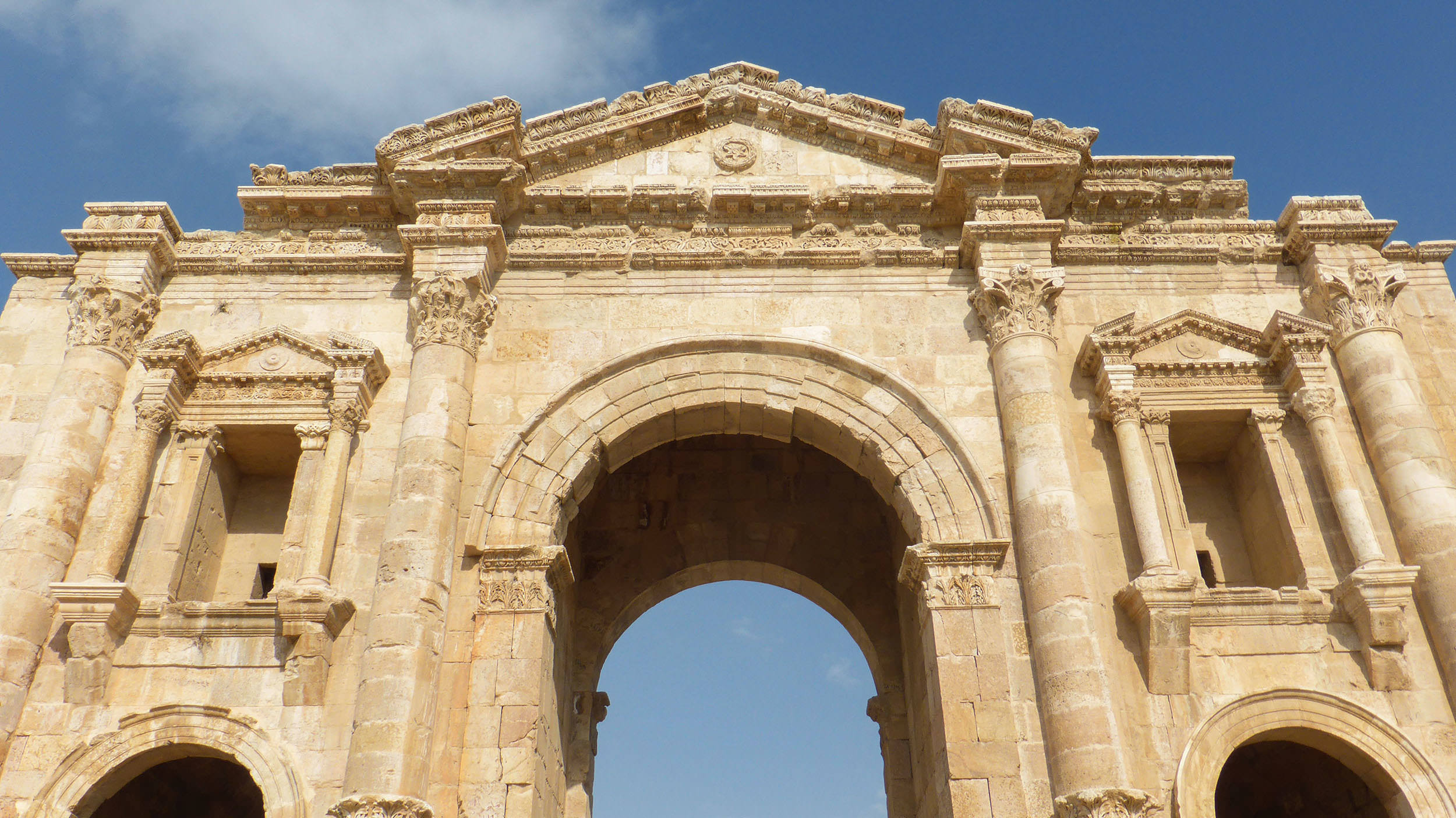
Erected to welcome 2nd century Roman Emperor Hadrian to Jerash, it was originally twice the height and double the grandeur. Still befittingly stately, there’s no better way to start a tour of the ancient city than by sashaying through its arches.
I spent 10-minutes, wandering from side to side, attempting to find the ideal angle for a photograph. It seems I failed.
Forum (Oval Plaza)
It’s always breathtaking, come rain, hail or sunshine; a Jordanian acme, thanks to the Romans.
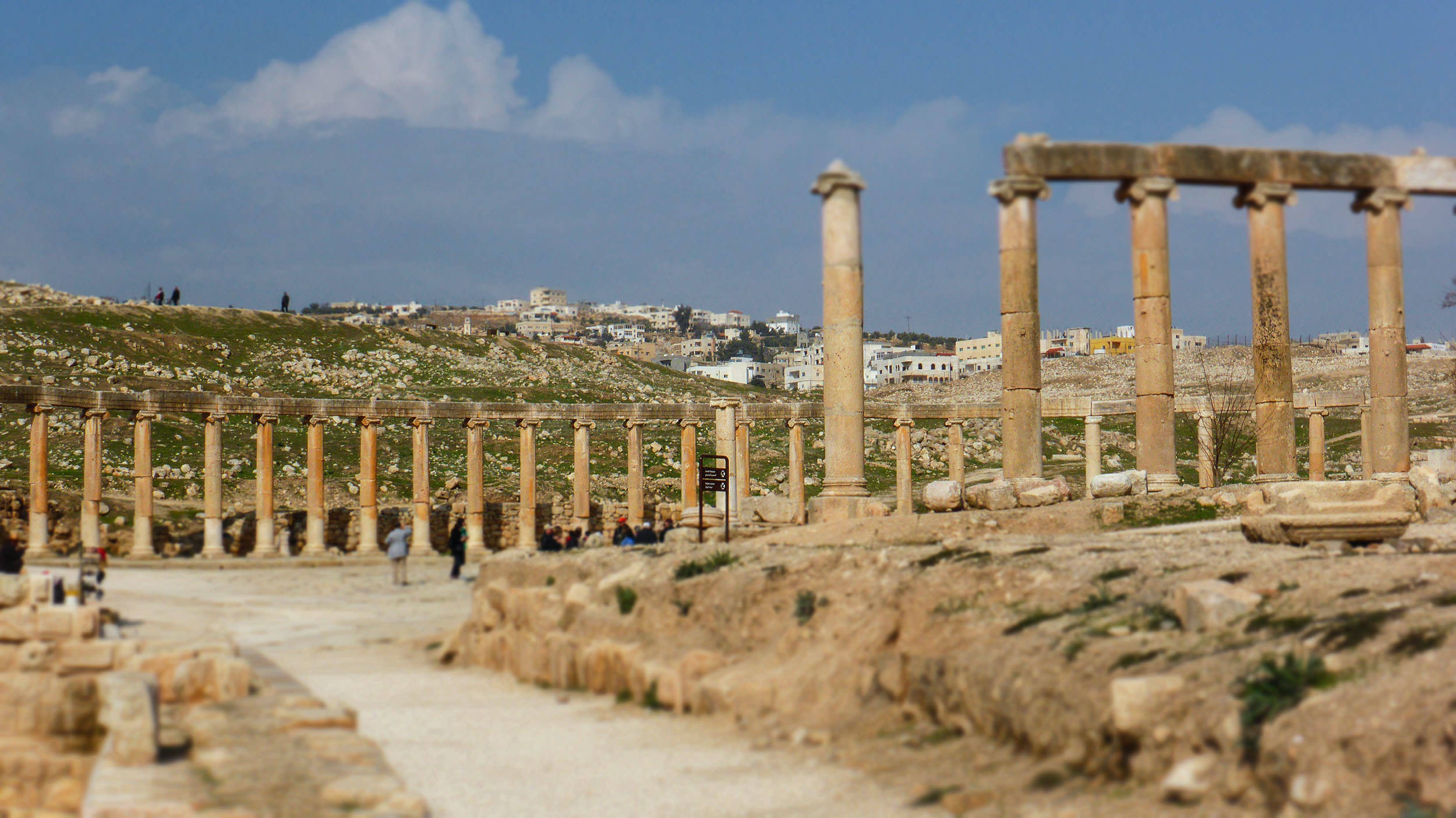

The curiously oval-shaped plaza, surrounded by unfluted Ionic columns, is the beating heart of old Jerash, the centrepiece on a table of antiquity linking Cardo Maximus with the Temple of Zeus (discussed below). 90 by 80 metres and distinctive, it originally served as the city’s marketplace, the hub of social and political affairs. It’s now perhaps the main drawcard in a visit to Jerash, travellers, families and staff often found spread around its periphery, eating, observing, basking in the sun.
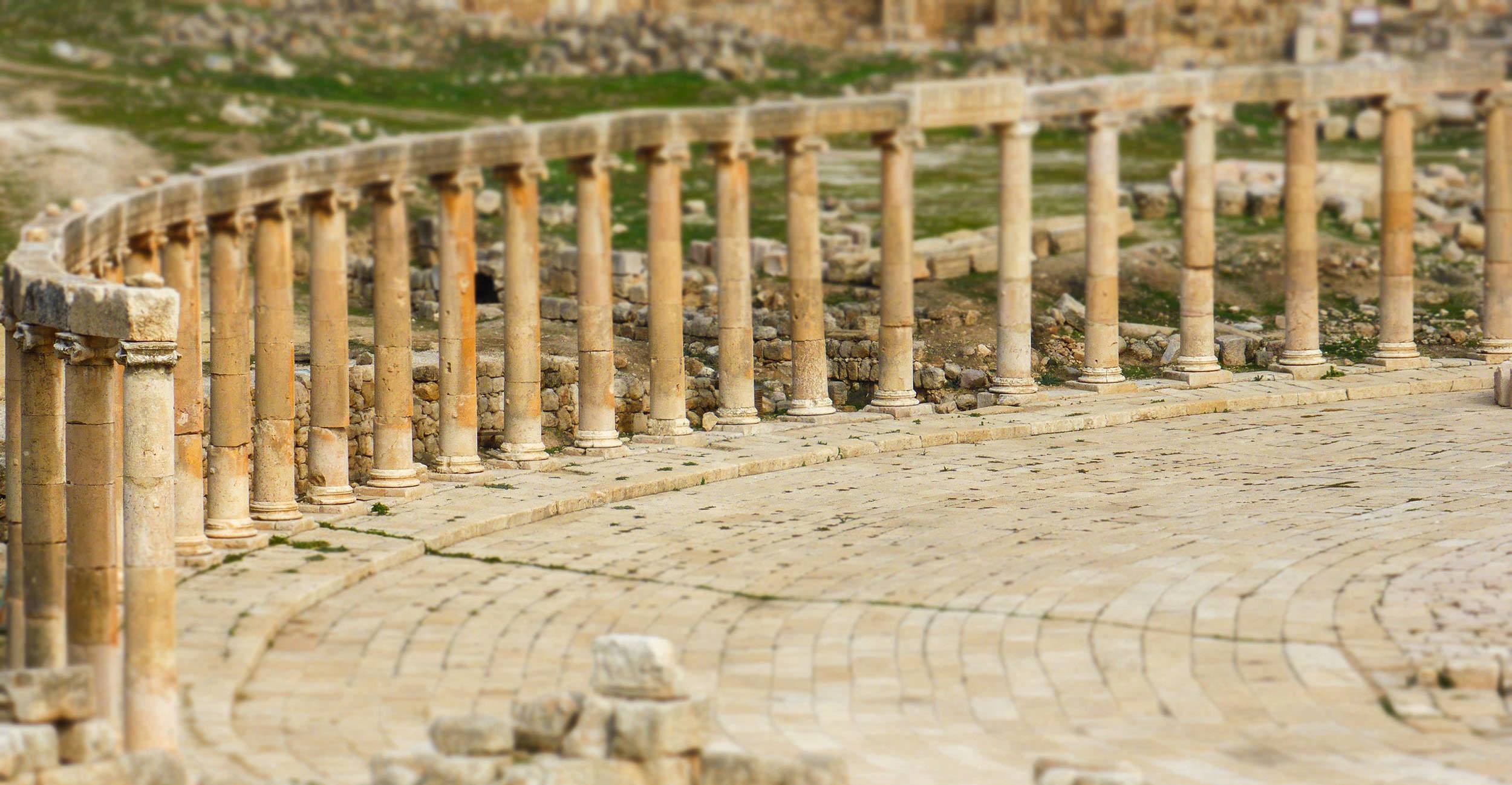
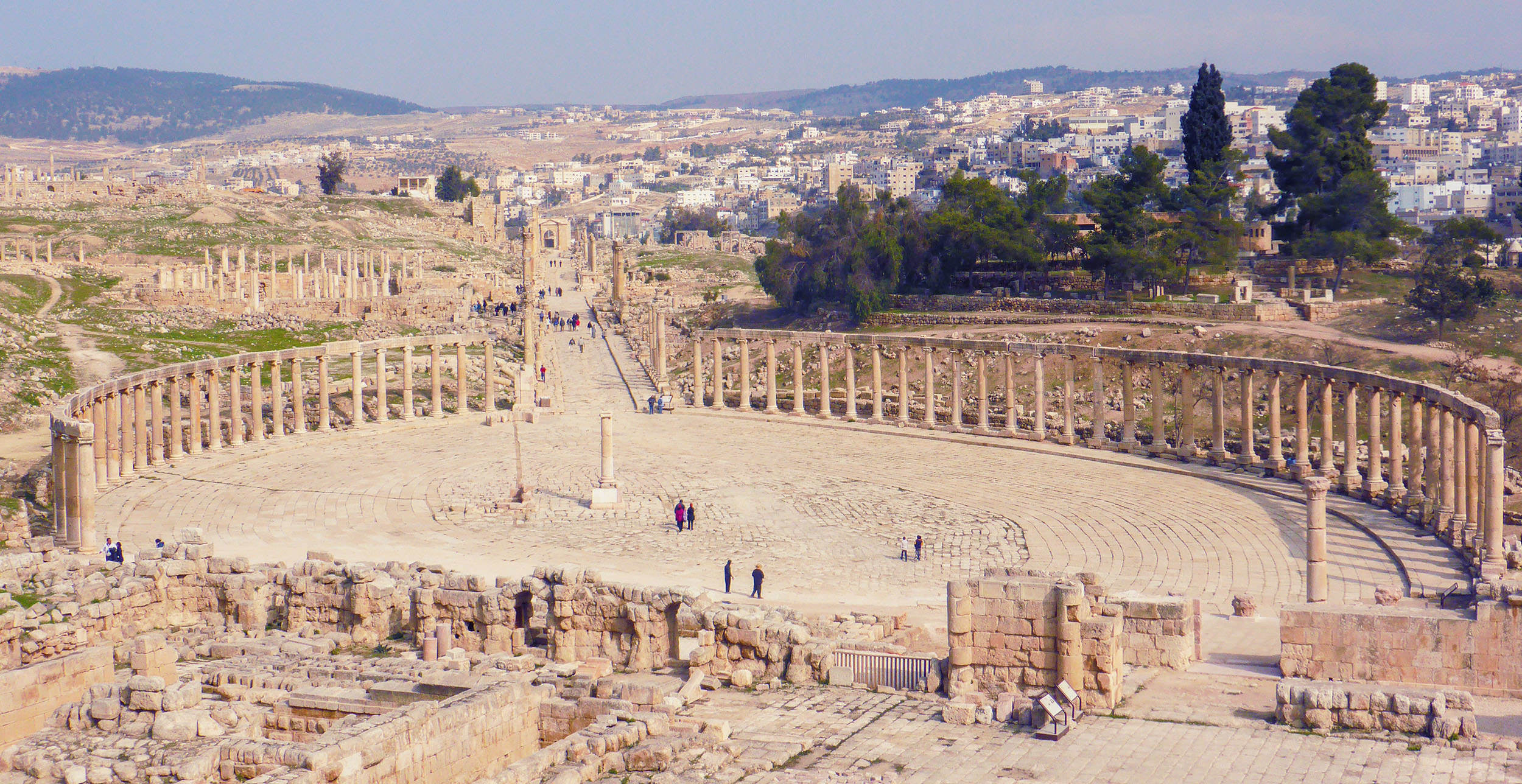
Following a brief jaunt around the oval, I made haste for the Temple of Zeus, the best view of the Forum from an aerial perspective.
Temple of Zeus
Once a site of holy sacrifice, towering above old Jerash, it’s now a crumbling ruin. However, parts of the temple remain intact, enough for visitors to adequately appreciate its former glory.
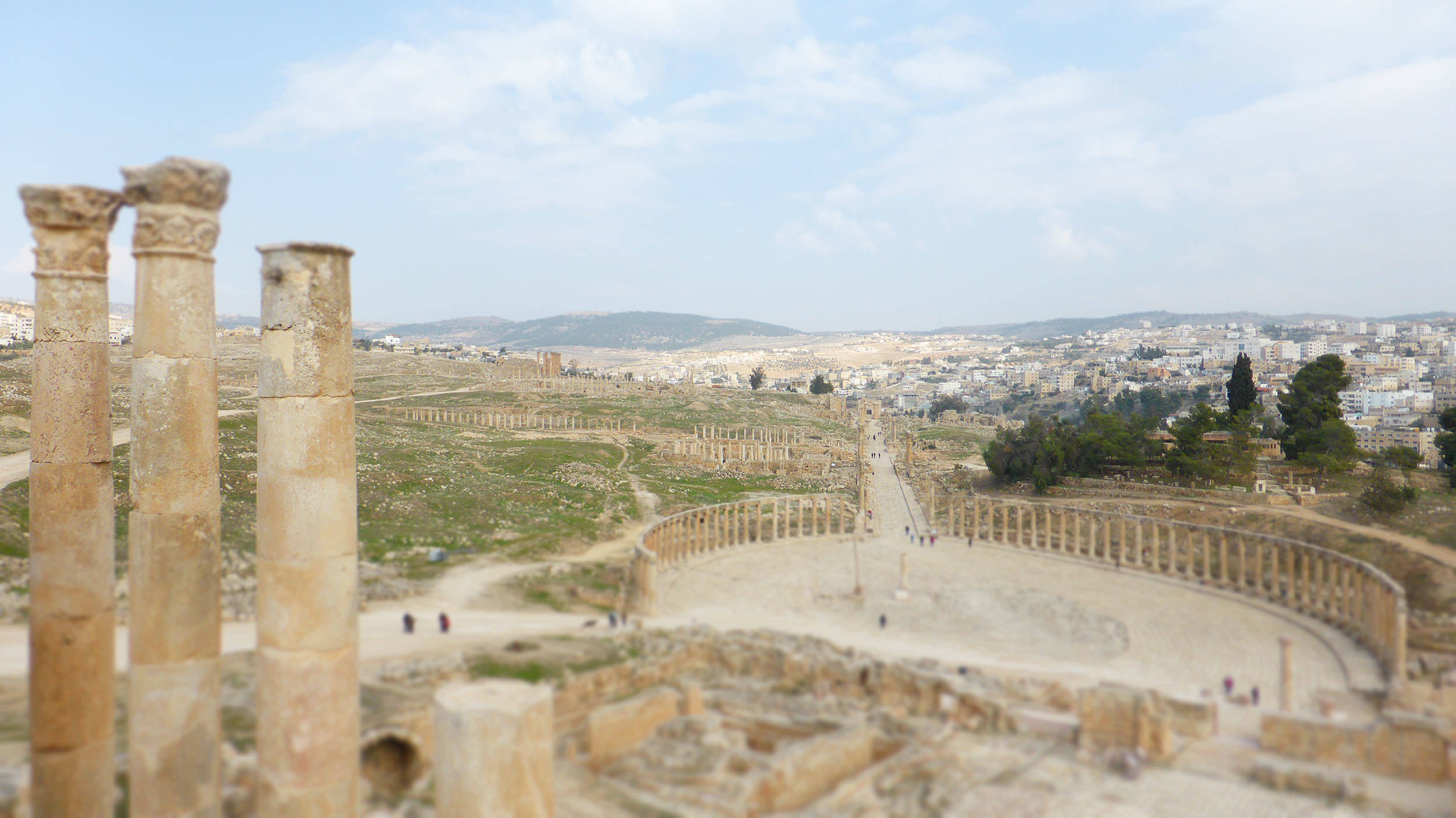
At the summit of the hill on the southern end of the ancient city, its prime position provides the best platform for viewing the Forum and colonnaded Cardo Maximus, equally beautiful in antiquity. I visited Temple of Zeus towards the end of the day, for reorientation and broad sweeping views over the ruins.
Cardo Maximus (Colonnaded Street)
Possibly the highlight of Jerash, the colonnade-lined principal thoroughfare runs for 800 metres, its length peppered by sites of interest, both left and right. Complete with ruts worn by chariots, original stones and columns of differing height, walking the length of the road saturates the atmosphere with Rome.


It was during my first walk along Cardo Maximus that the roar of chariots emerged as did the aroma of saffron boiled in wine.
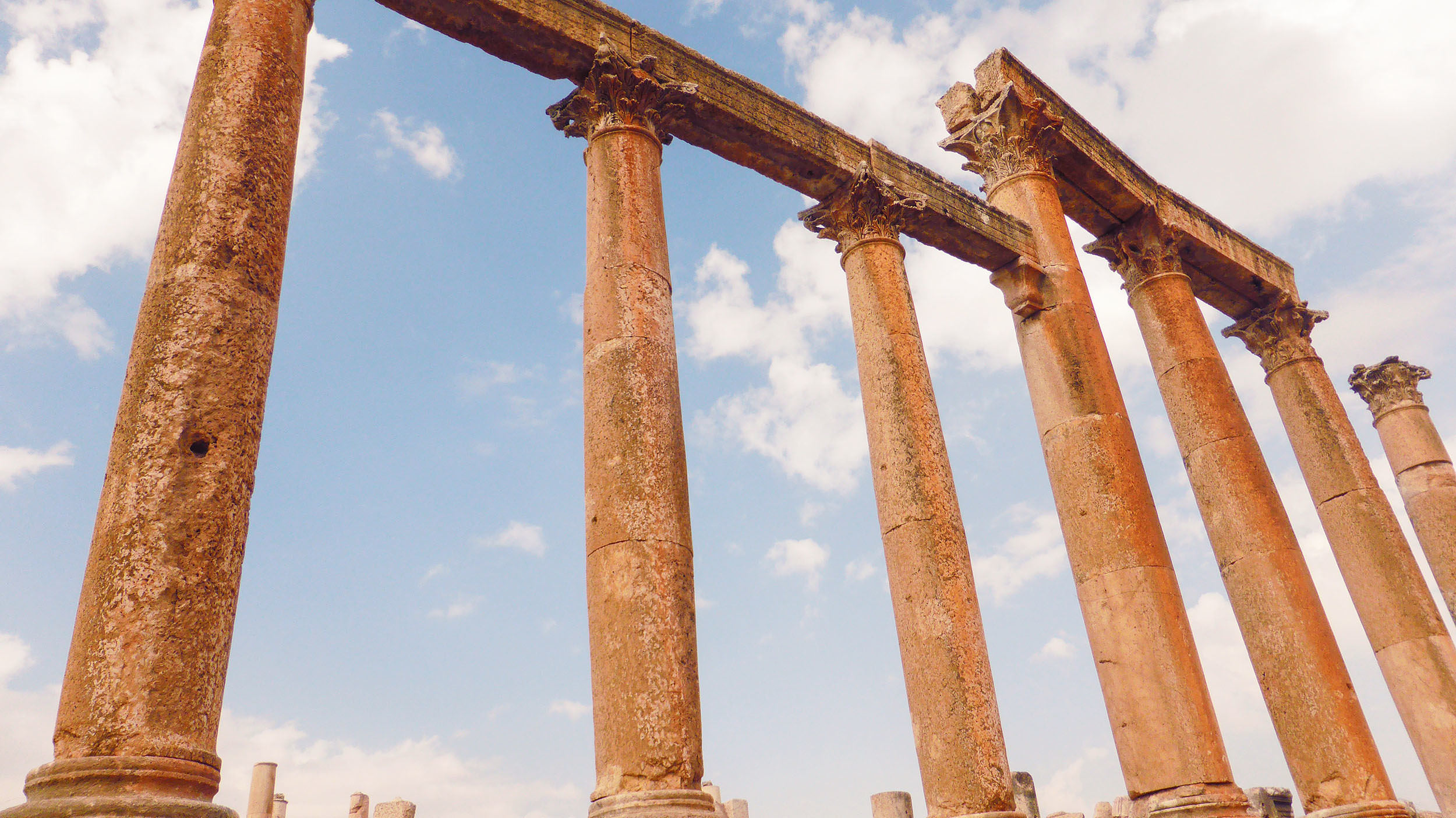
Let your imagination run wild, as did I, and you too can spend a few minutes in the 1st and 2nd centuries.
North Gate
Contrasting new and old, it’s at the farthest reach of the city, the end point of Cardo Maximus, the northern limit. Like most of Jerash, it was constructed in the 2nd century BC, and makes a fine frame for the colonnaded thoroughfare, before dividing ancient Jerash with the new.

I was completely alone by the time I reached the gate, and I daresay you will be too, if you bother walking to this point. It’s perhaps one of the lesser spectacular features of the city.
Nymphaeum
Void of young nubile maidens who love to sing and dance, the late 2nd-century fountain - a monument punctuating Cardo Maximus - is nonetheless beautiful.

Elaborately decorated, complete with a half dome and framed by Corinthian columns, it’s a noteworthy feature on the trek from south to north.
Propylaeum
At first, it seemed insignificant, a pair of framed doors spliced by an opening in the wall, leading to a staircase.
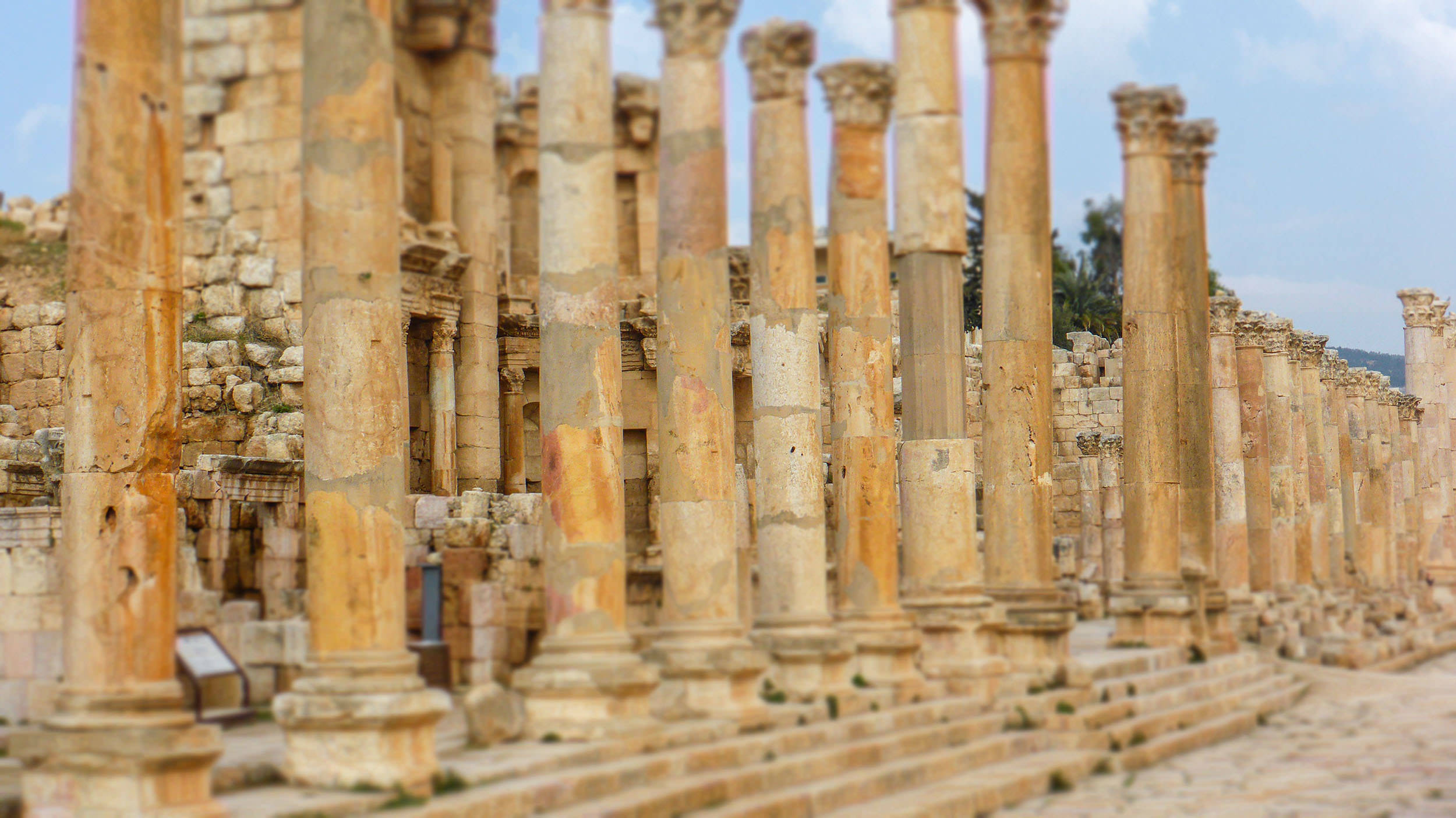
However, I had to invoke imagination to conceive its significance: in its heyday, the opening - flanked by shops – was the gateway that permitted the noblesse and bourgeoisie access to the grand Temple of Artemis.
Temple of Artemis
Dominating Jerash like the Temple of Zeus, the column-fringed structure was used as both temple and fortress. Purported to be the most beautiful structure within the city, its prowess and prestige can still be admired, despite the 12th century fire that ravaged its inner walls. 11 of the 12 original columns can still be seen.
North Theatre
Used for political debate rather than performance art, the modestly sized 2nd century theatre is discreetly beautiful. Destroyed by earthquakes and dismantled for other projects, it has since been restored to its former glory and is worth every moment of your time.
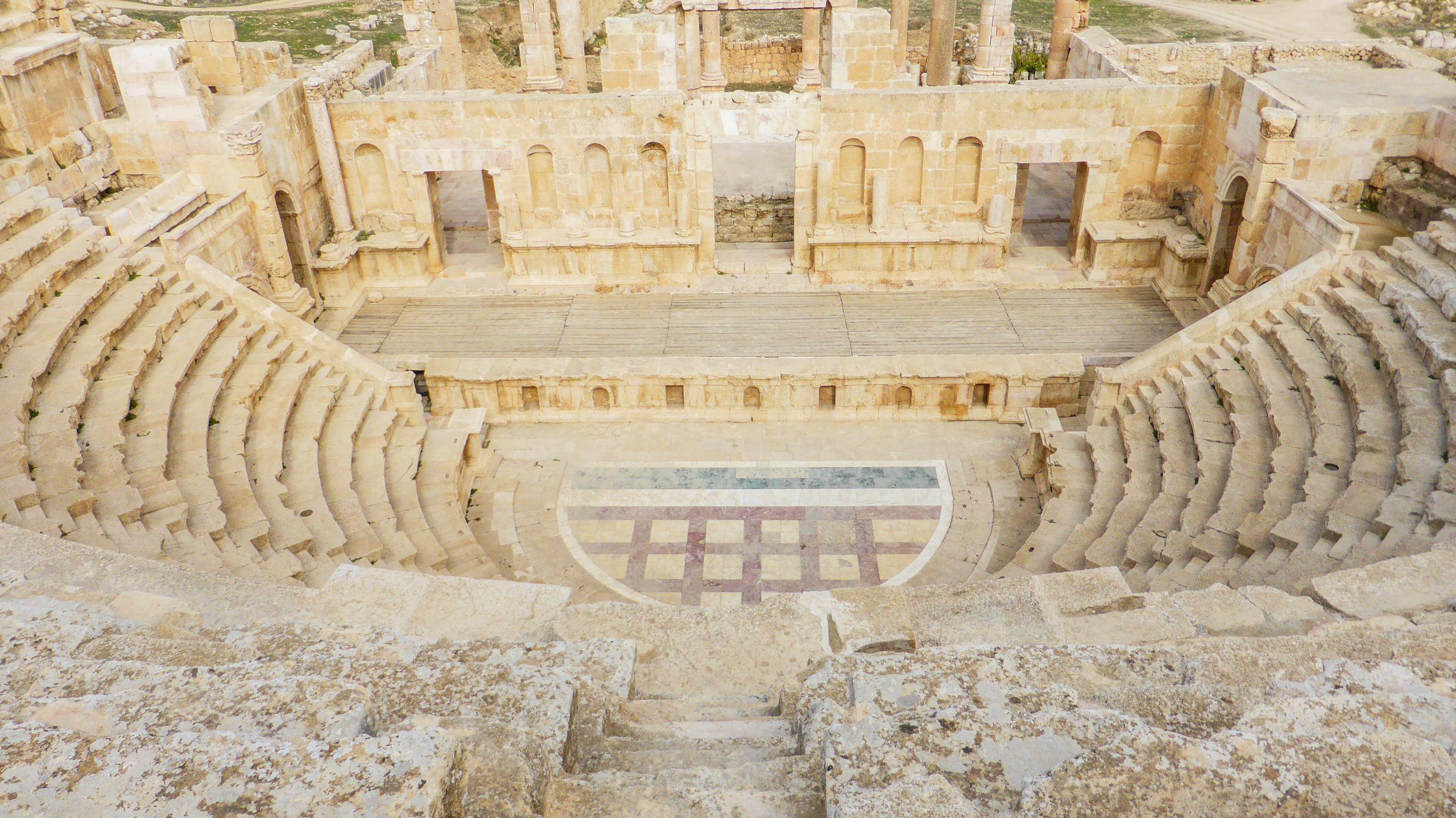
Complete with round niches and elegant carvings, hours can be passed with a posse in the sun on the stately steps.
Recommended Length of Stay in Jerash
One day is enough.
Aside from the archaeological site, there aren’t many sites worthy of attention in the modern city, although it does depend entirely on taste and personal preference.
Accommodation - Staying in Jerash
By all means, come and stay in Jerash for a few nights: be a trailblazer, and uncover new things for other travellers to see and experience. For the purpose of this itinerary, I recommend coming to Jerash for only one day as an excursion out of Amman.
Budget: بيت الطبيعة (Nature House)
For a budget-friendly stay close to the ancient ruins, بيت الطبيعة (Nature House) in Jerash is a unique option. This cosy spot has a one-bedroom setup with everything you need, from a fully equipped kitchen to a terrace with mountain views. The outdoor dining area and fireplace make it a perfect spot to unwind, whether you’re up for a chilly evening around the fire or a laid-back meal with a view.
Mid-Range: Dream House Hotel Jerash
The one-bedroom apartment comes with two bathrooms, a kitchenette, and a terrace offering mountain views — great for a morning coffee. They even welcome you with some fruit and treats, which is a nice touch. With an on-site restaurant, and family-friendly amenities like a baby safety gate, it’s a solid choice if you're exploring the area with flexibility.
Plus, they offer a paid airport shuttle if you need it.
Transportation - Getting around Jerash
On Foot
The only way to see old Jerash is on foot.
The layout of the ancient city makes walking the ideal and only feasible way to explore. The paths are mostly stone-paved and designed for foot traffic. Walking allowed me to fully appreciate the intricate details of each masterpiece.
Just be sure to wear sturdy shoes, as the ancient pathways are uneven.
Transportation - Getting to Jerash
By Shared Taxi/Bus Combination
From downtown Amman, outside the Roman Theatre, I took serviis taxi #6 to Tarbabour Station (it was a little cramped). I did this early in the morning, before 8am. At the station, I asked around, and a kindred soul pointed out the Jerash-bound bus, which was nearly full (they only depart once full).
The entire journey, from Amman to Jerash and back, cost me 3JD!
WADI MUSA (وادي موسى) (Days 6-8)
Disappointingly tawdry, Wadi Musa – Jordan’s most modern tourist hub – is a stark contrast to other Jordanian cities: unhospitable, tacky, and overpriced.
It’s no surprise, though: on its doorstep is Petra, a 2007 ‘new seven wonders of the world’ addition, a relic of life preceding Christ and a marvel of mankind. Wadi Musa doesn’t need to sell itself: Petra does the legwork and, respectfully, is the main drawcard to a southern end trip.
There’s little to do here, but in all sincerity, following a day of walking through the Pink City (aka Petra), all I wanted was food: entertainment wasn’t on my Musa-menu.
Sights to See and Things to Experience in Wadi Musa
Petra
A bounty of untold secrets, the Nabataean city – locked in the heart of variegated sandstone escarpments – is the jewel in Jordan’s crown of antiquity. The pink-hued necropolis has magnetised visitors ever since 19th century explorer Burckhardt heralded news of its existence in Europe.
The defining moment arrives when the Treasury emerges, following a wander through the long, winding, narrow Siq maze: it’s a Hellenistic façade carved out of sandstone that impresses even the weariest of visitors.
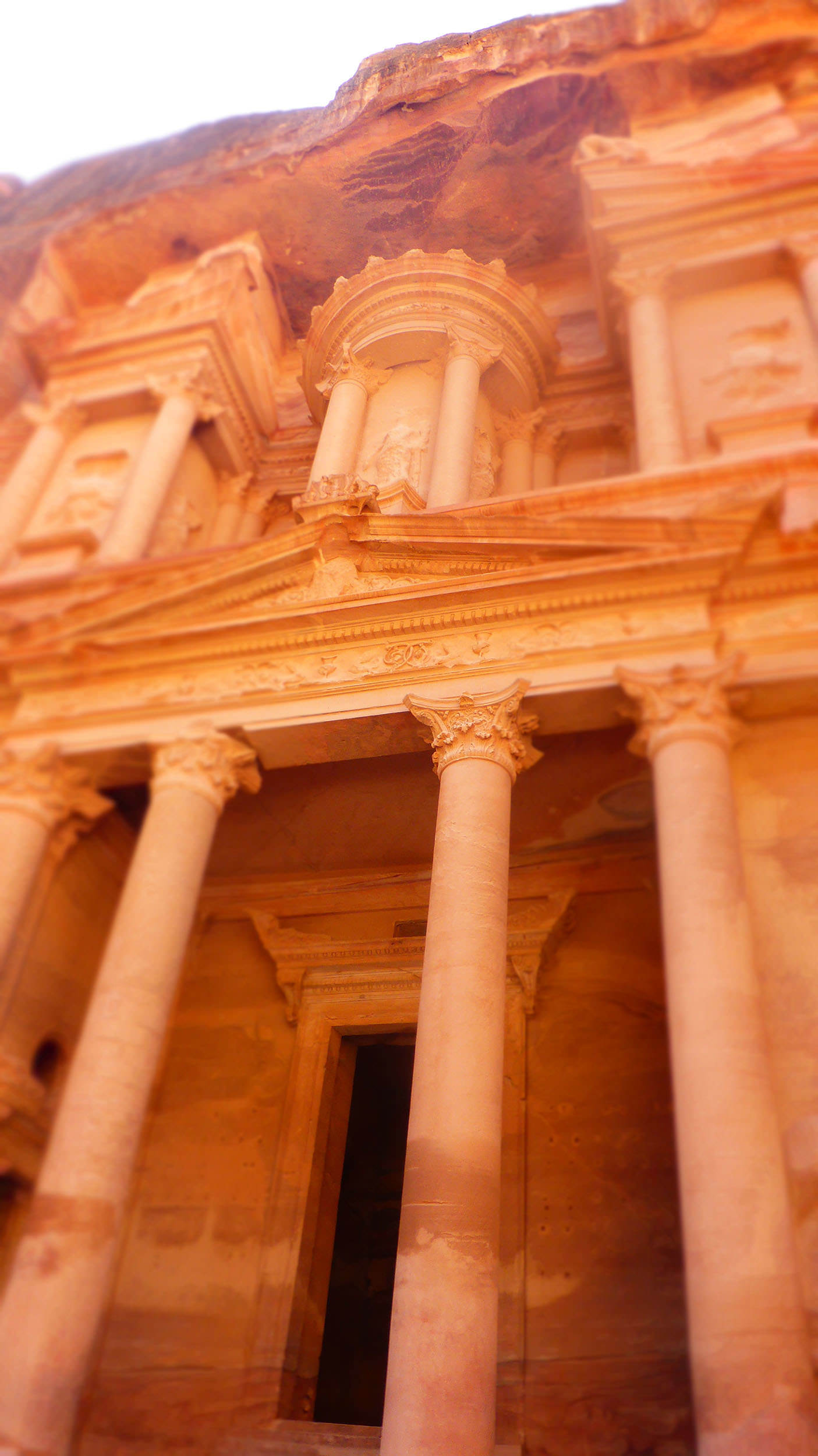

With antediluvian sites slung over stony landscapes and an atmosphere that evolves with the fluctuating light of day, it’s by far the most provocative of Jordan’s ancient wonders.
I maintained a mood of ambivalence before arriving, given the hype surrounding Petra: I didn’t want preconceived high expectations being dashed. Petra, however, blew my mind. Had I conjured high expectations, they would have been met, given the magnitude of the Rose City’s beauty and historical allure.
I arrived in Wadi Musa with a new comrade in tow, another solo traveller I’d met in Amman. Together, we decided to spend two days in Petra (with accommodation in Wadi Musa), discovering her innermost secrets and being charmed. Two days were enough, in my opinion, to avoid rushing around, becoming overwhelmed by the quantity of beautiful tombs and facades to see.
If you’re looking for an in-depth experience that's less than 2 days, consider this 3-Hour Private Guided Tour in Petra with Hotel Pick-Up. It’s an option if you want to explore Petra’s highlights with insights from a knowledgeable local guide, who can add depth to the history and cultural context of the Rose City.
➡ Book Your Tour Here

The site opens at six am year-round and closes at four pm in winter and six pm in summer. Despite a diminution in tourism over the past few years, Petra is still heavily visited. For great photographic opportunities, or to simply avoid being trampled, start your visit at 6am.
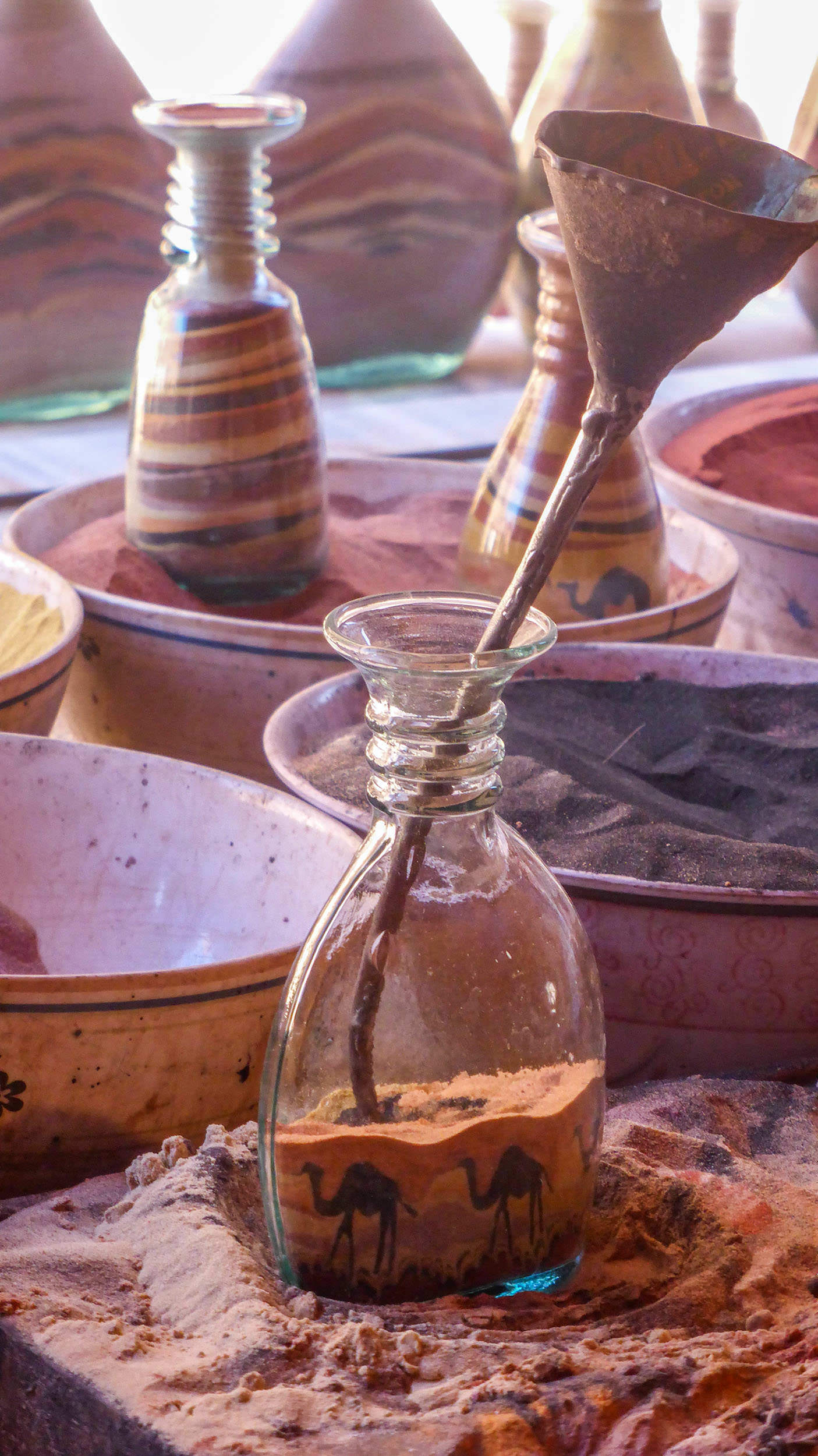
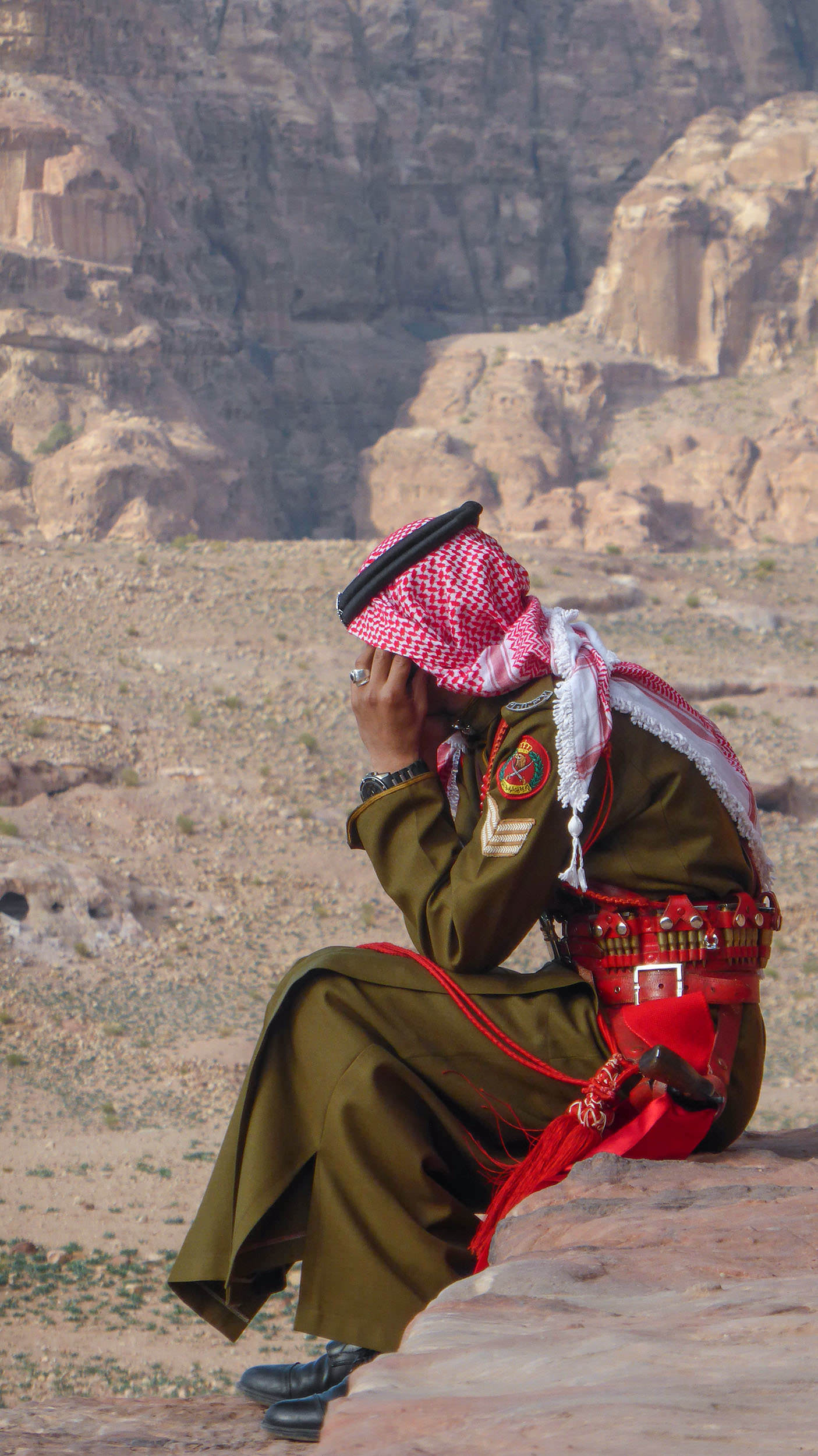
Consult the official website for entrance fees and further, more up to date information.
Visiting Petra is a must on any 2-week Jordan travel itinerary.
Here is a list of the sights we saw, over two days, in the general order visited.
Day One Petra Itinerary – Visiting the Main Sights
Siq
1.2km long, stretching from the entrance to the Treasury, is a canyon (or rather a single block torn apart by tectonic forces) with narrow, vertical walls; one of Petra’s highlights. Snaking its way towards the hidden city, a slow walk through the slender corridor builds anticipation, an amble punctuated by sites of spiritual significance.
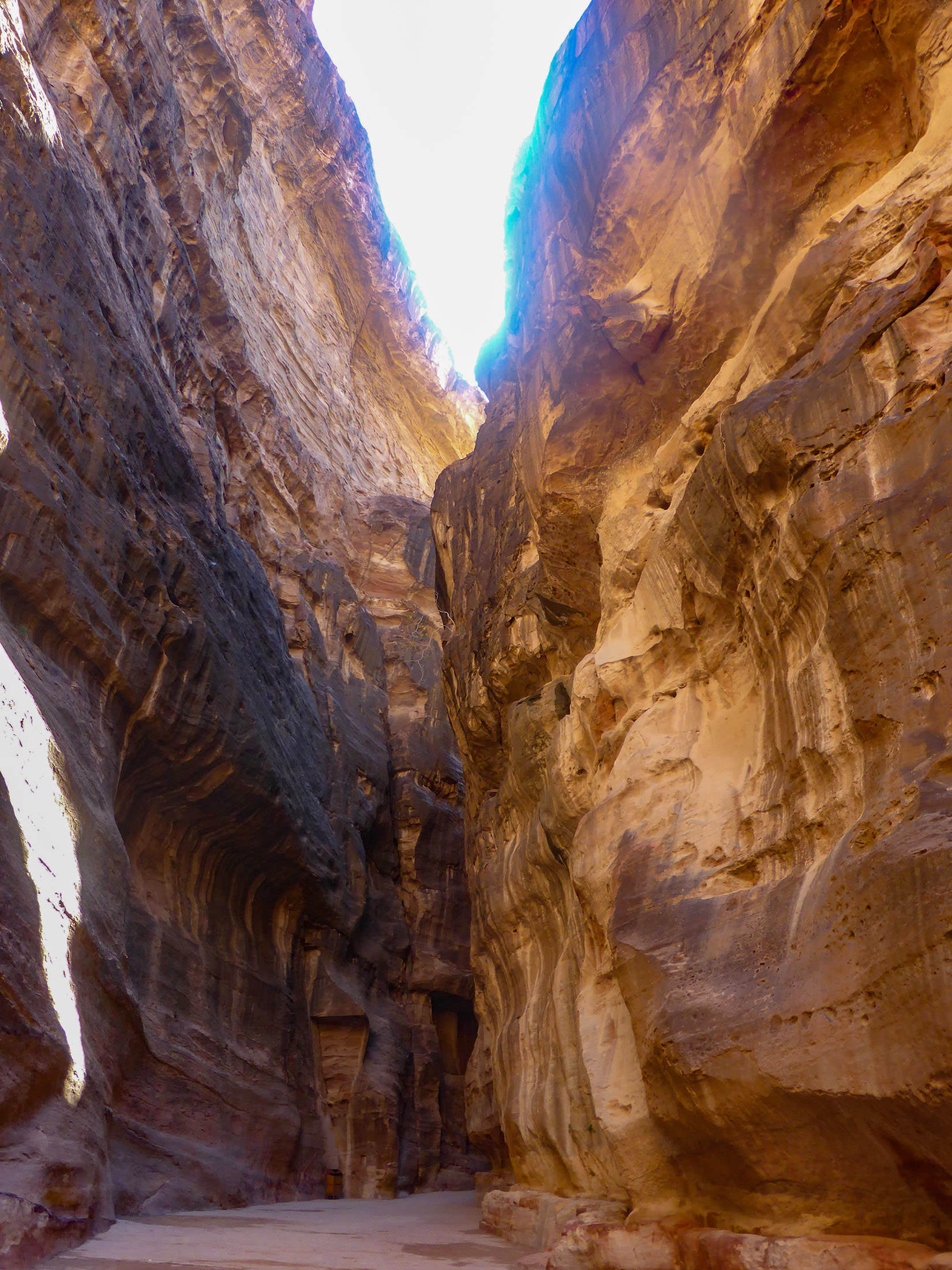

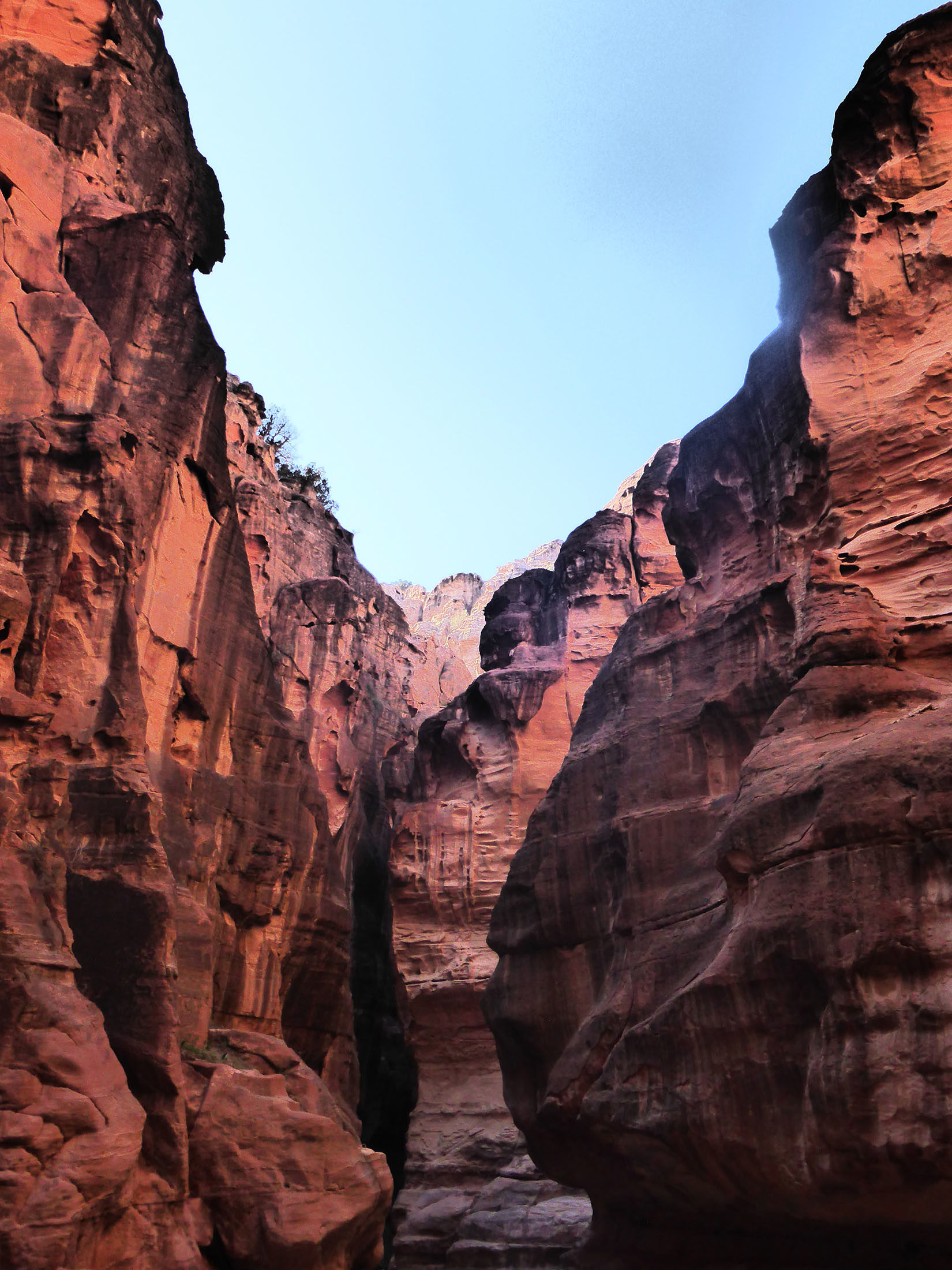
Take your time, as did I, observe the channels cut into walls, Roman paving, and colours of brilliance, savouring the final moment of reveal at the Treasury. It was one of the more expectant travel experiences I’ve had.
The Treasury (Al-Khazneh)
The Hellenistic façade is quite unlike anything else in the Nabataean city. It’s the point at which even indifferent visitors begin to appreciate the prodigy that is Petra.
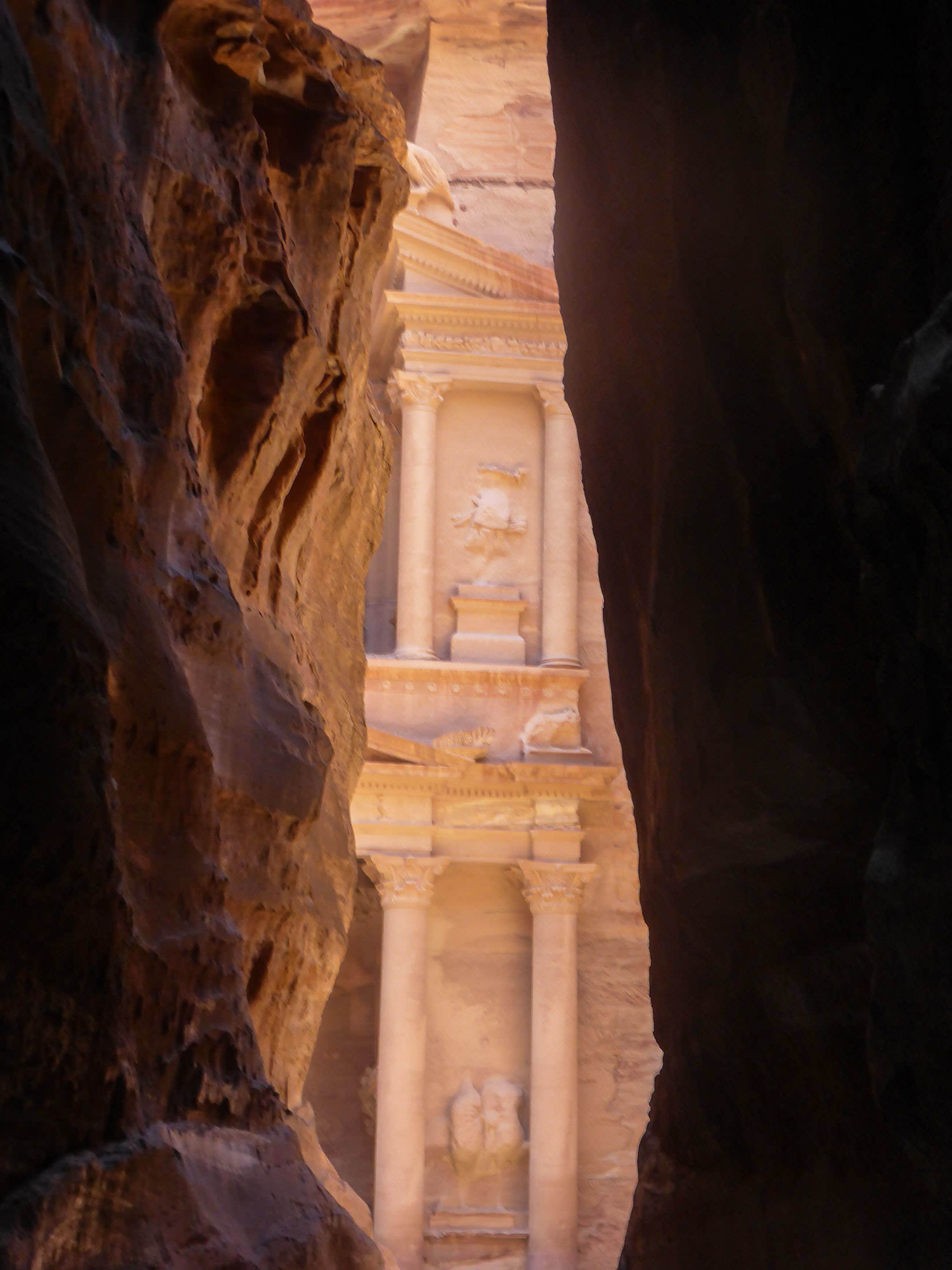
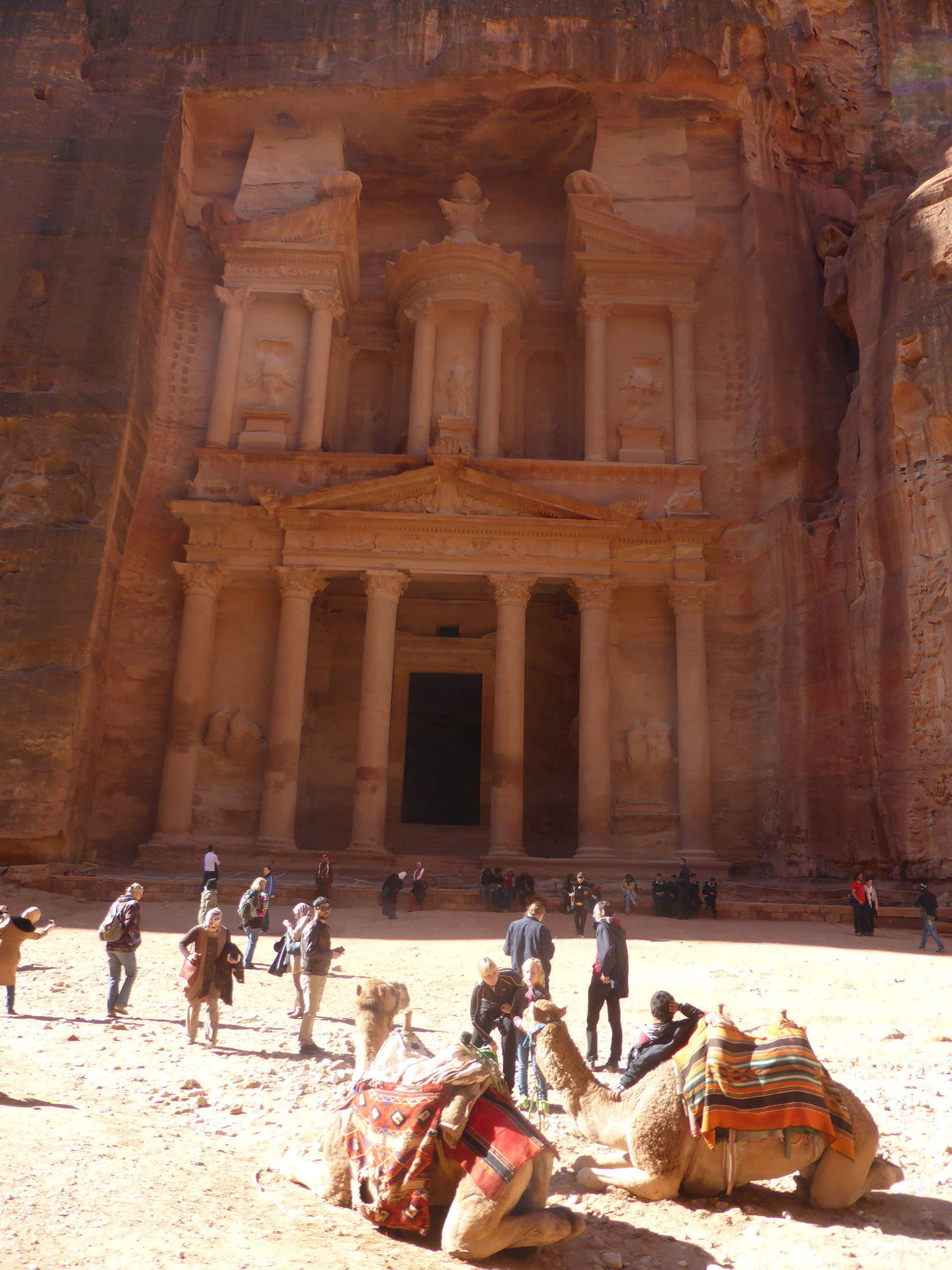
An astounding piece of artistry, it is testament to the architectural talent of the Nabataeans. It is, in fact, a tomb, carved out of sandstone for King Aretas III. Lore asserts that an Egyptian pharaoh hid treasure within, a tale believed by locals, given the rifle shots found throughout, hence its ‘Treasury’ title.
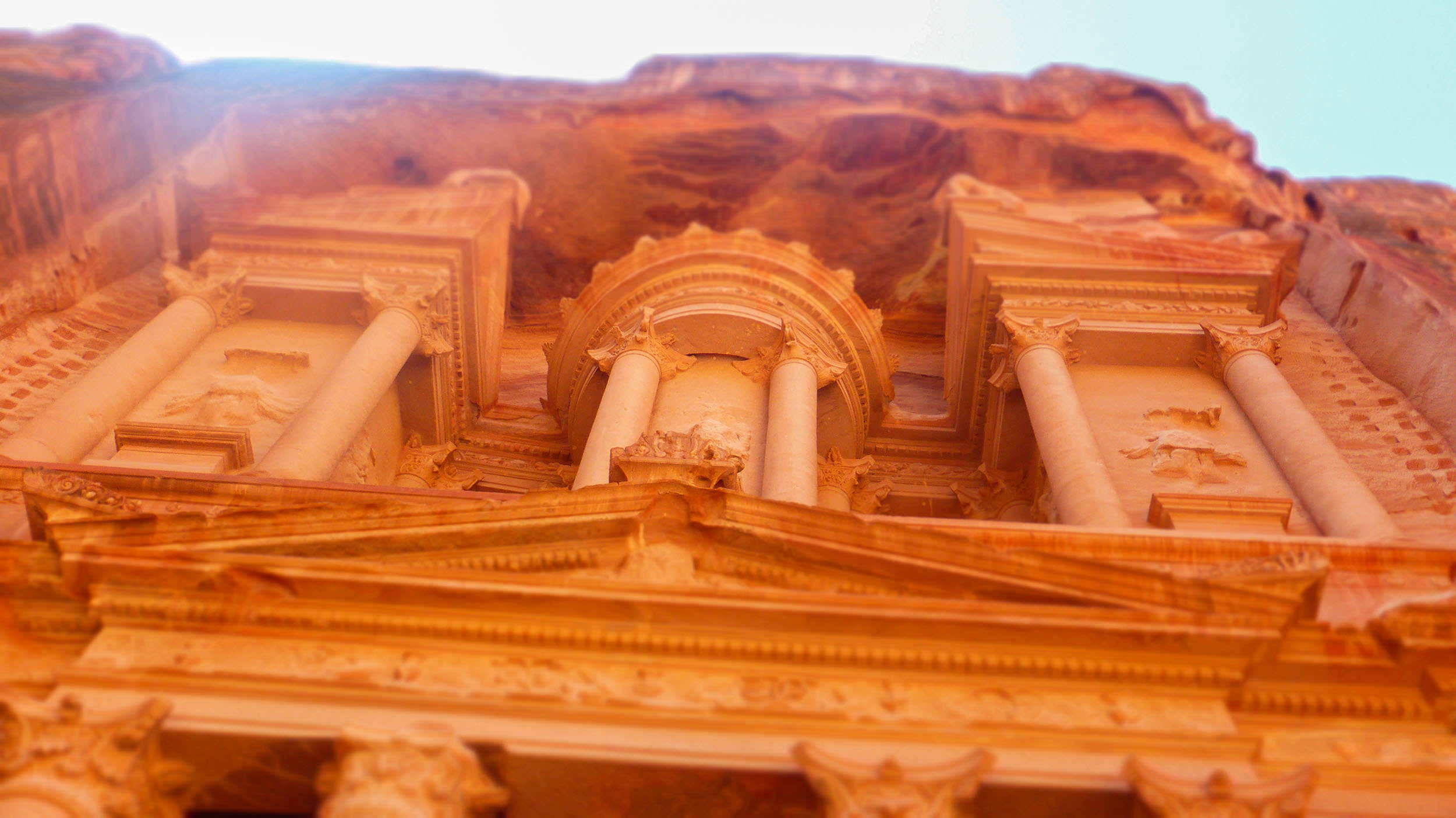
Stories aside, for photographers and anyone who appreciates beauty, it’s best visited between nine and 11 am when bathed in sunlight.


If I had to choose a favourite relic of Petra, along with the millions who’ve already been asked, I’d say it is the Treasury.
Street of facades
Colloquially named the Street of Facades, the point at which the Siq widens en route to other sites of interest is the Outer Siq, a wall covered in tombs and homes originally built by, you guessed it, the Nabataeans.
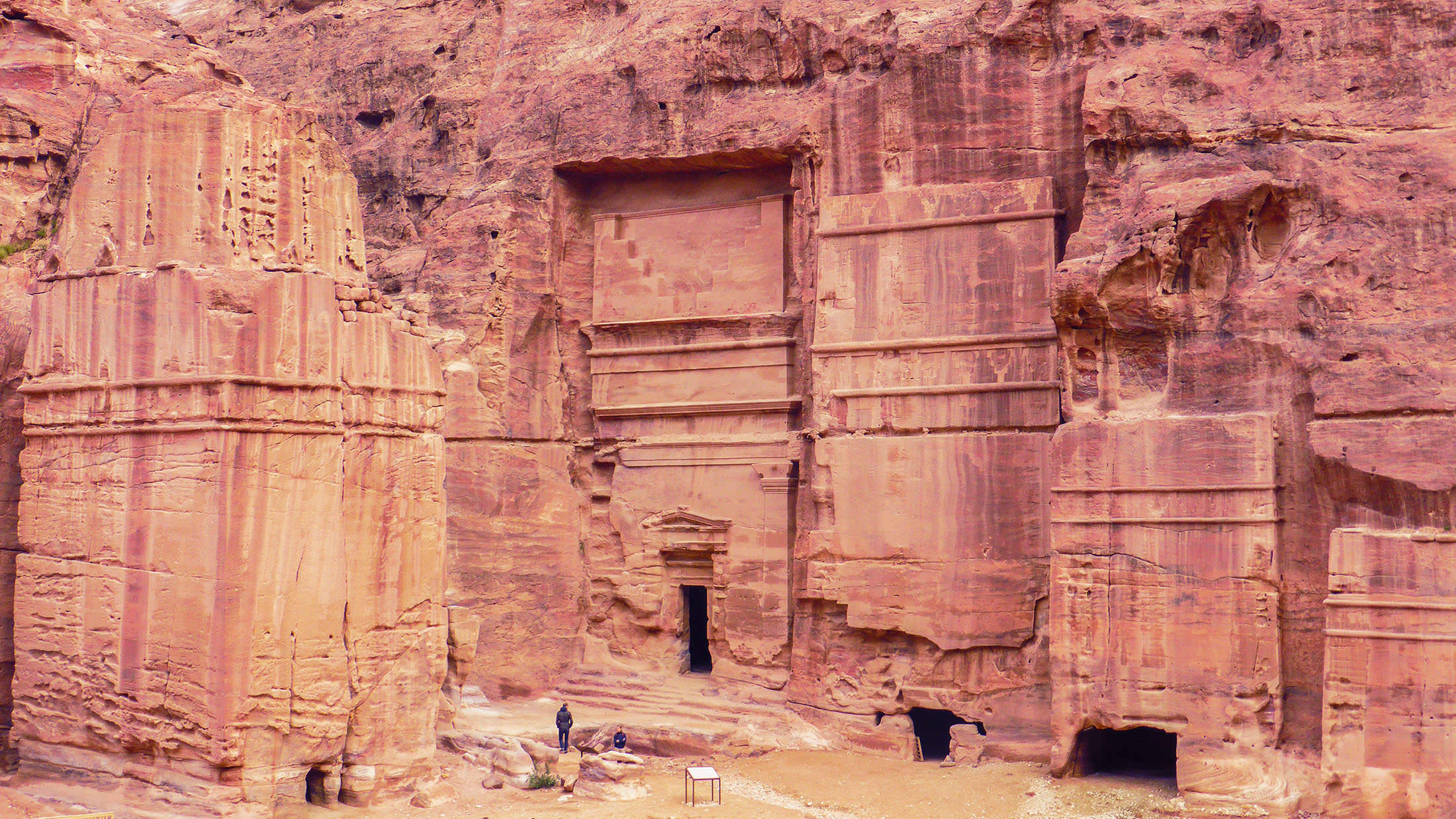
These tombs are easily accessible, and may be worth a little of your time, especially if it’s not limited to a couple of hours. Ask for advice at the tourist office (at the entrance) regarding the best tomb to visit along the street.
I didn’t enter any but heard that number 70 is curiously endowed.
Theatre
Chiselled out of rock by the Nabataeans and modified by the Romans, building that occurred 2000 or more years ago, the theatre originally seated 3000 spectators.
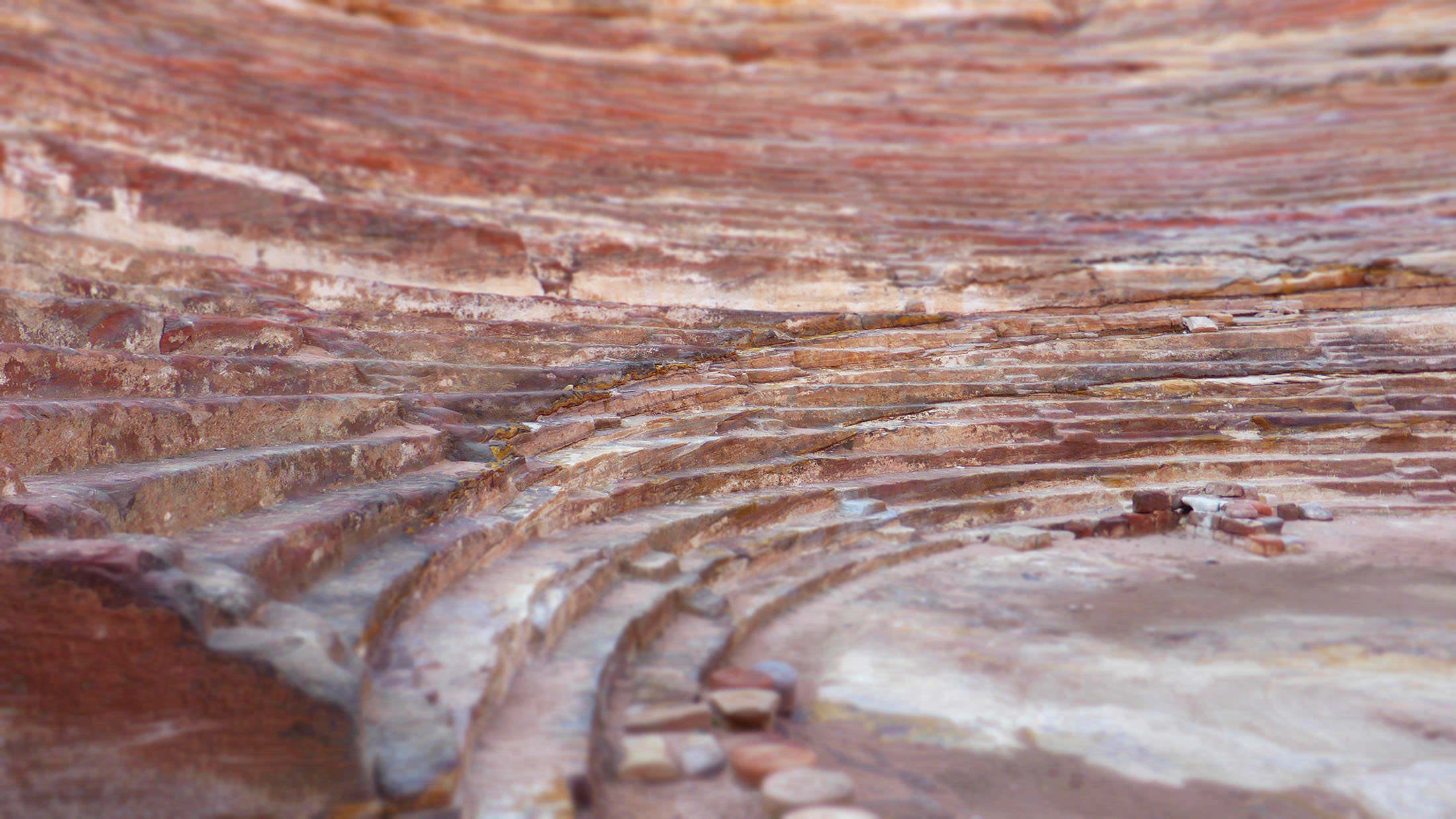
Partially intact and set to a multi-hued orange and red backdrop, gaining a sense of its heyday pomp and grandeur is still possible.
Royal Tombs
A short walk downhill from the Theatre, where the road widens even further, are a series of burial places burrowed within the cliff face.
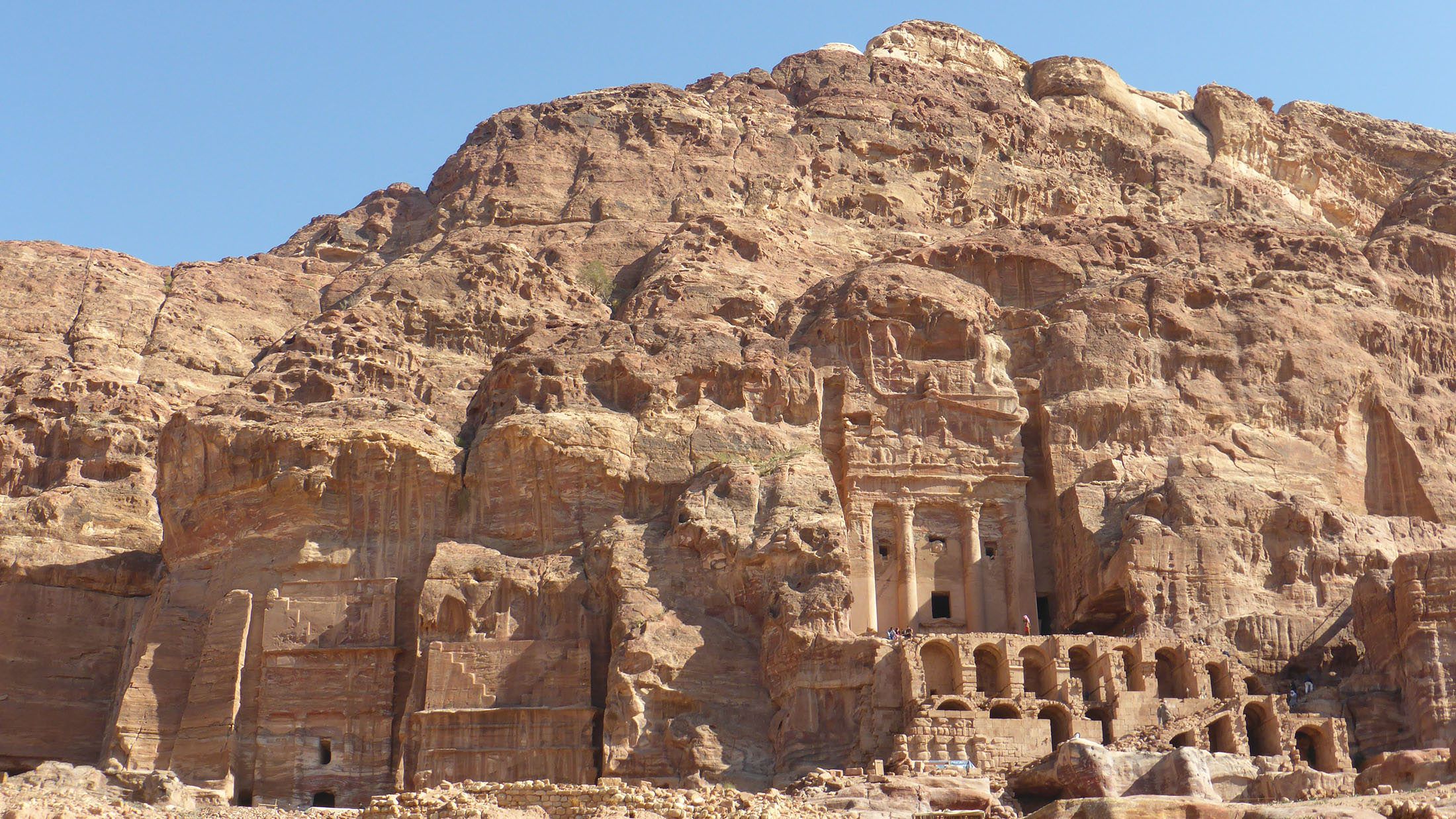
Reached via a set of steps from the valley floor, the Royal Tombs are distinctive, historically significant, and come complete with a remarkable view of the Treasury.
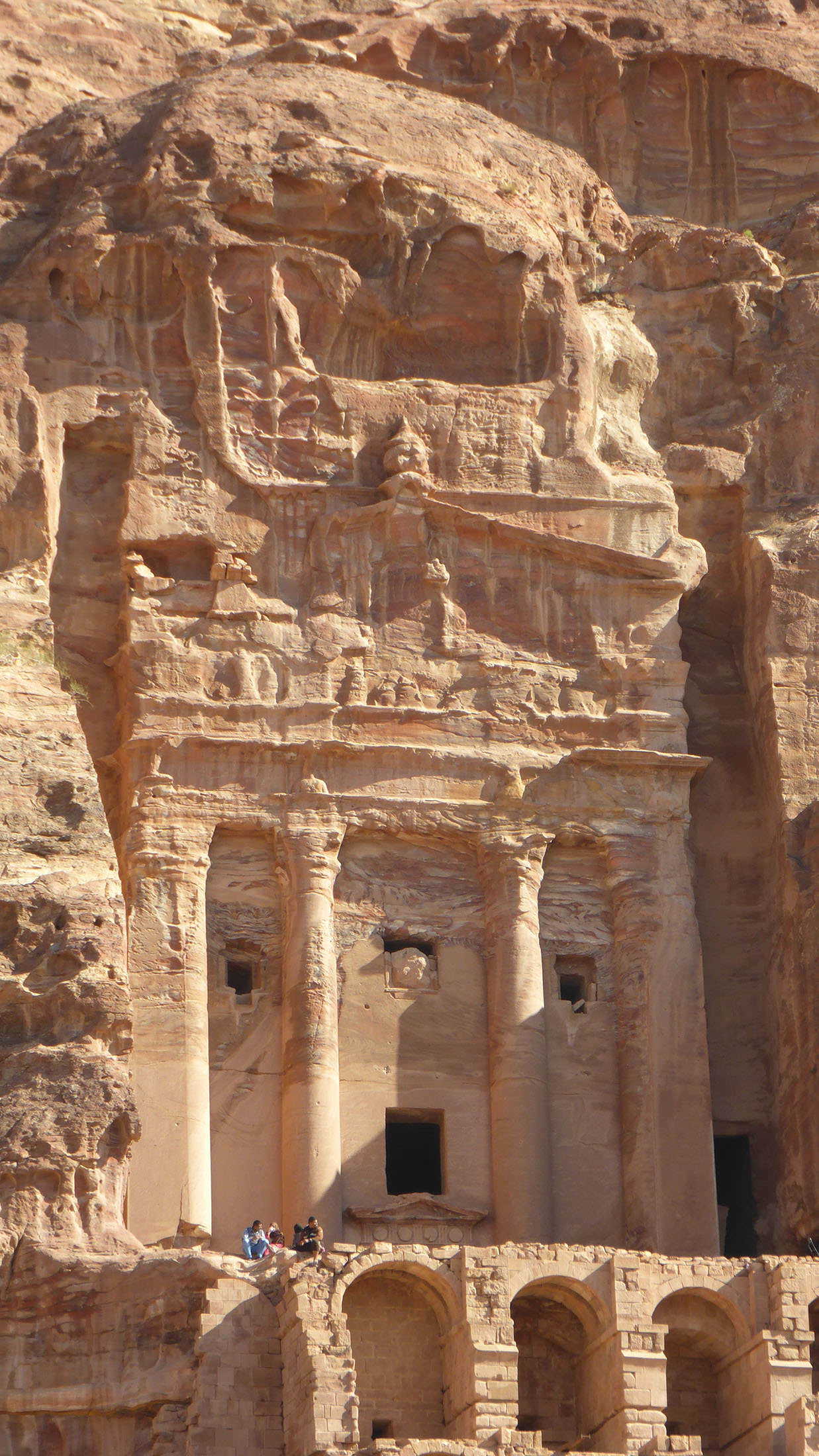

Included in the collection are Urn, Silk and Palace Tombs.
Colonnaded Street
The beating heart of Ancient Petra, the Colonnaded Street is patterned like many Roman sites, from east to west. Built in the 2nd century, sandstone columns originally fringed the thoroughfare alongside porticoes.
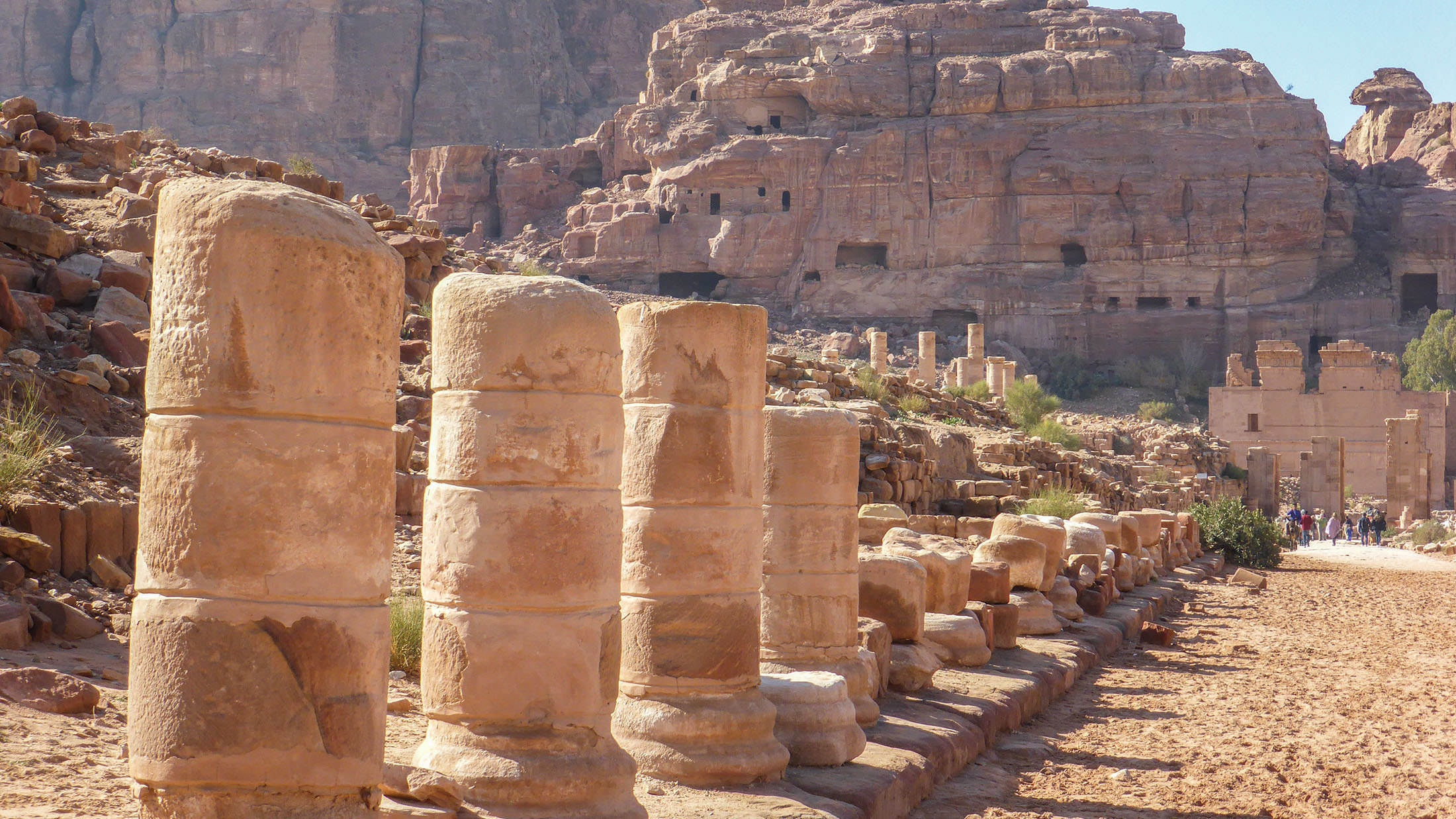
Although it didn’t impress me as much as did Petra’s other relics, a walk along the street towards the monastery - with a 10-minute respite under the pistachio street – was old-worldly.
The Monastery (Ad Deir)
It’s hidden high in the hills at one of Petra’s farthest reaches, and a visit is certainly worth the few-km wander.
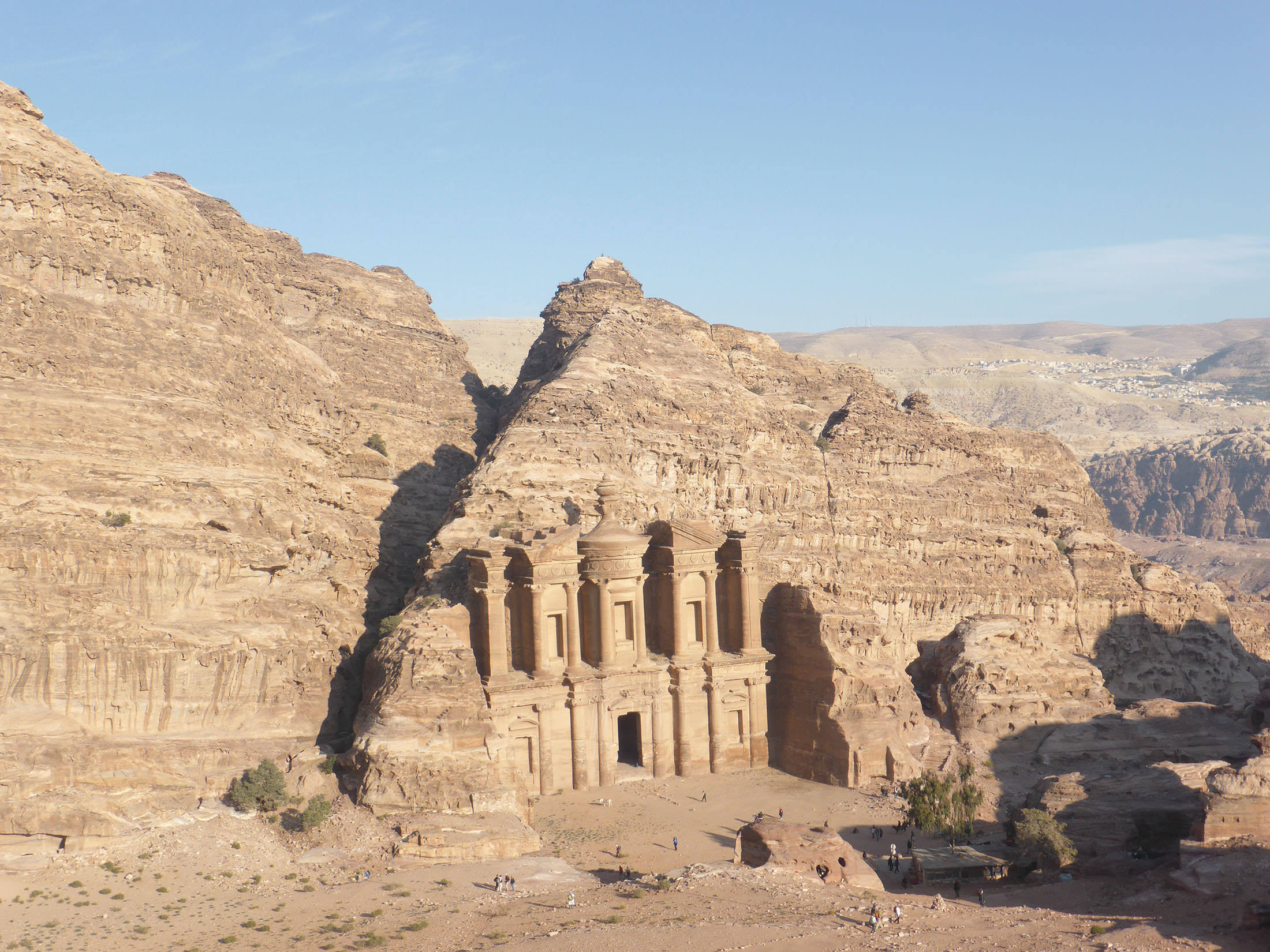
Similar in style to the Treasury and constructed as a tomb, it’s an ideal place to sit in contemplation.


There is a tea shop opposite the site, a great vantage point from which to meditate.
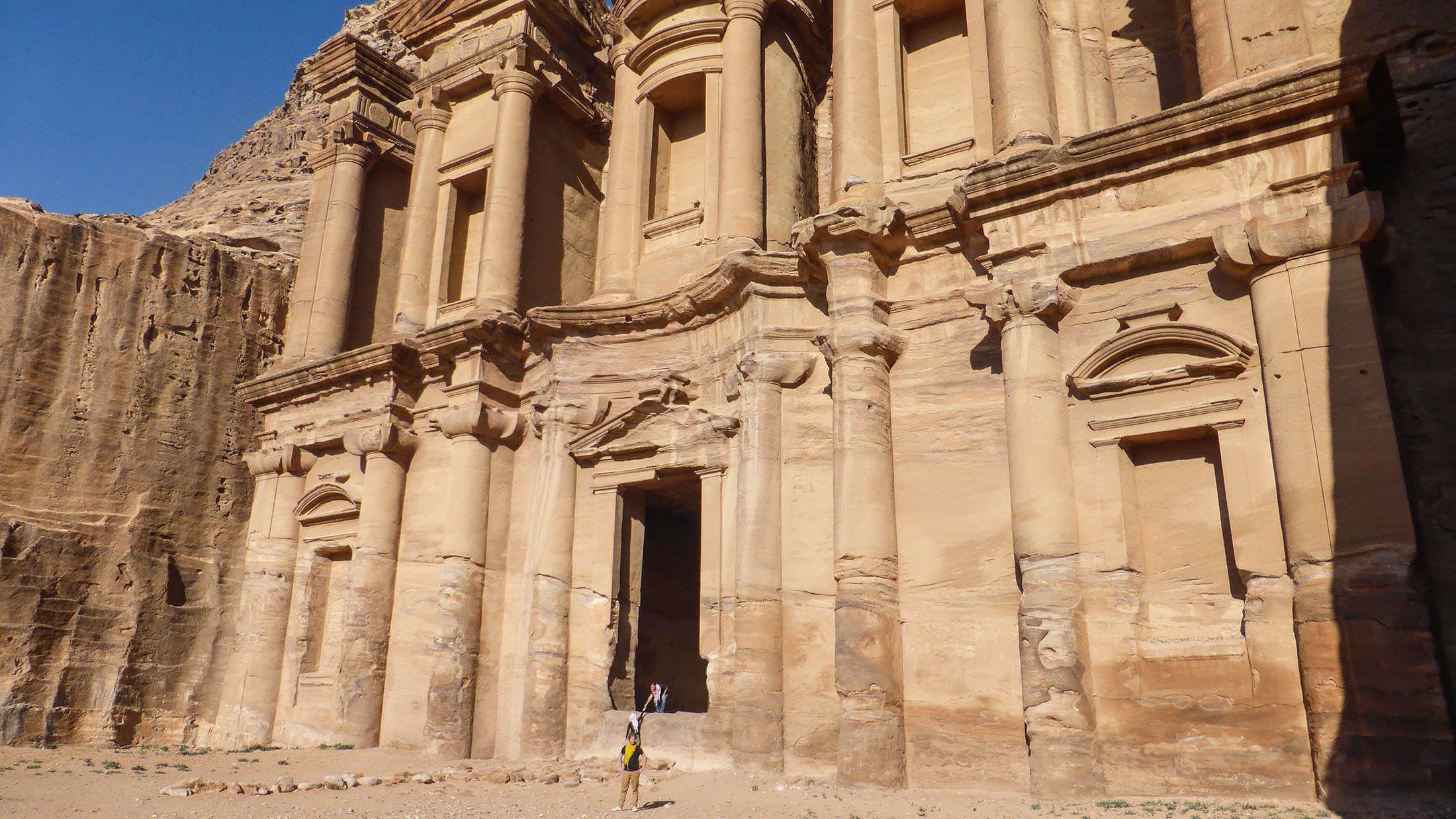
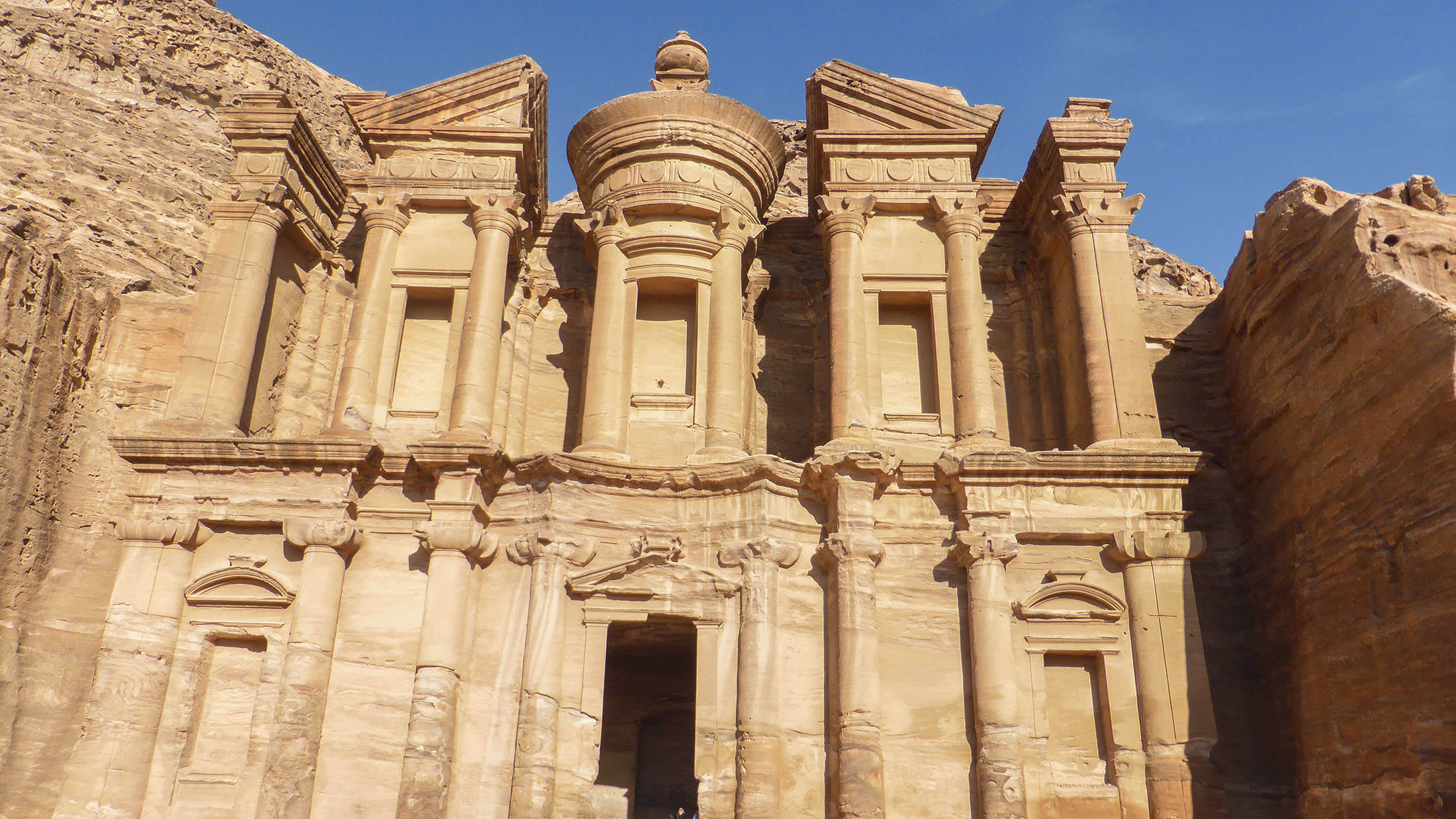
A visit is best done mid-afternoon, when the sunlight bathes the structure in fragments of gold.
Day Two Petra Itinerary - Exploring Madras Trail
High Place of Sacrifice
After entering Petra via the same route of day one, take the steps – chiselled out of the stone – near the theatre, and walk up the slope. Following a 30 to 45-minute trek, the summit emerges, a platform where an altar opens to a wonderful panorama.
The sense of exposure, following day one’s confined spaces, can be dizzying. However, the mountain terrain all around is sublime, further testimony to the ingenuity and craftsmanship of the Nabataeans. The site was used as a place of sacrifice by the Nabataeans, of animals, and perhaps humans, too.

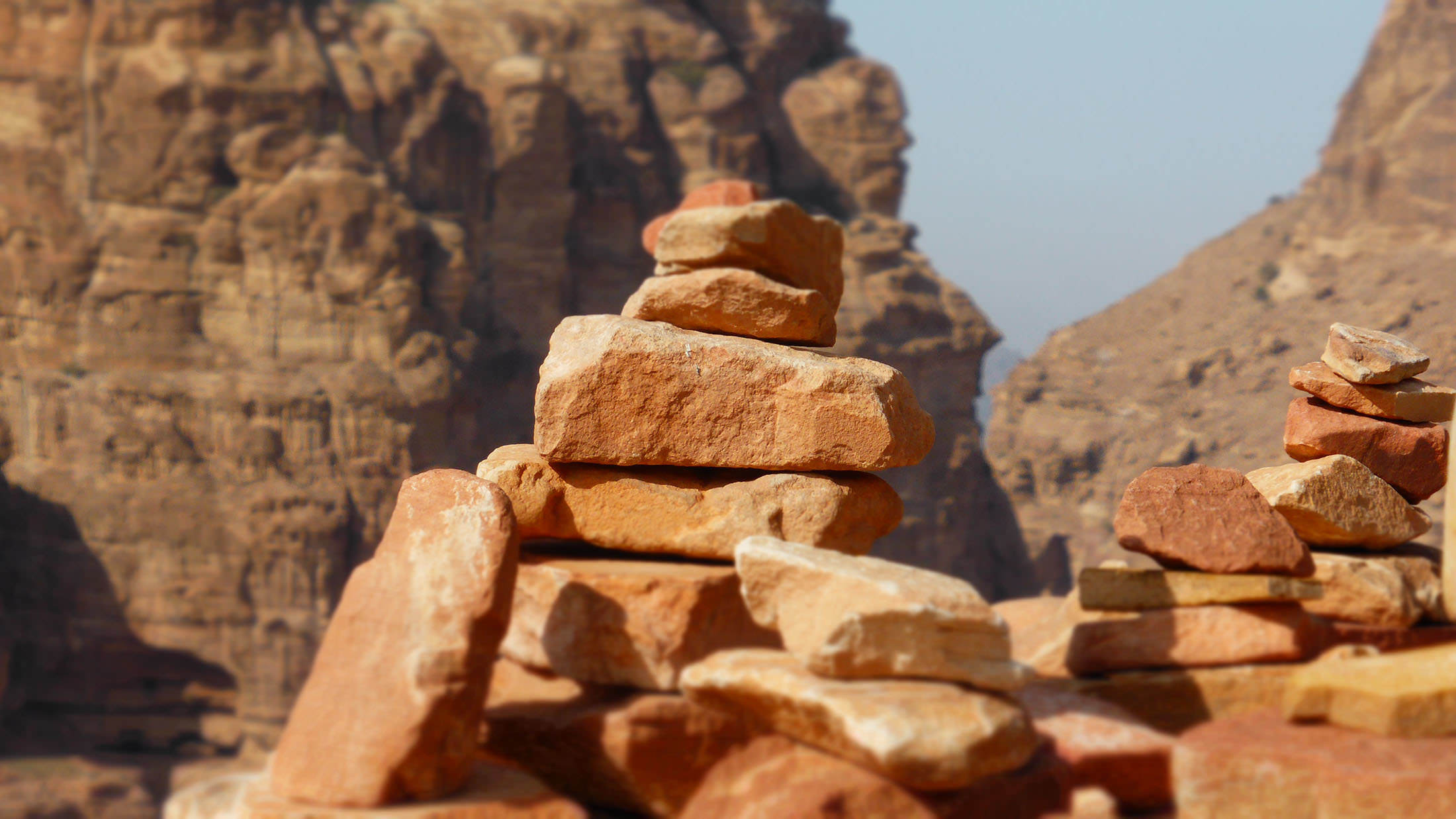
Craig and I decided to take a different route, rather than returning the way we’d come, and were treated to monumental mountain-scapes as well as two additional sites of interest.
Garden Triclinium
The next site along the Madras Trail is a hall that was used to hold feasts.
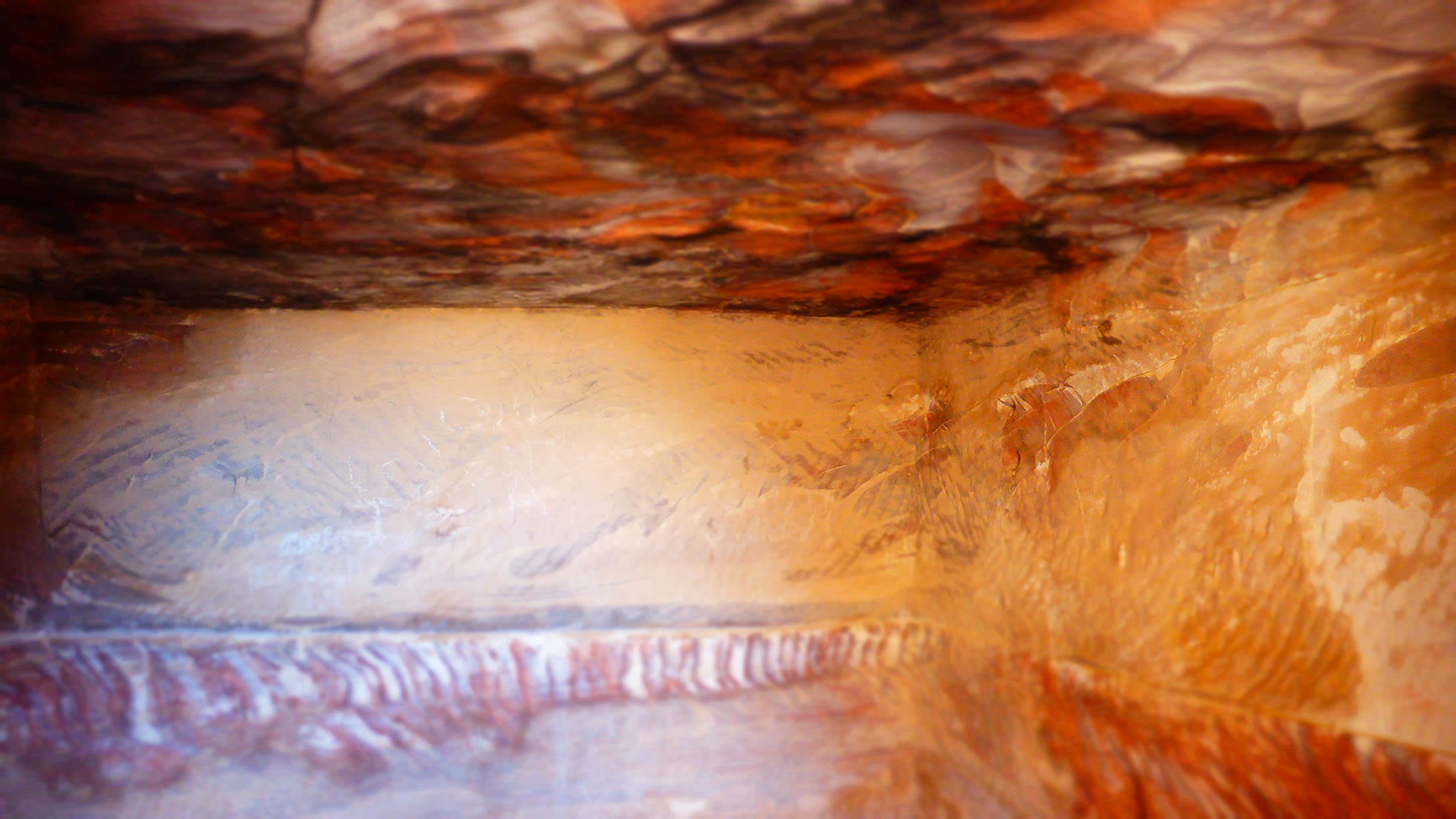
The body that was buried in the Roman Soldier’s Tomb (next) were memorialised annually in the Garden Triclinium.
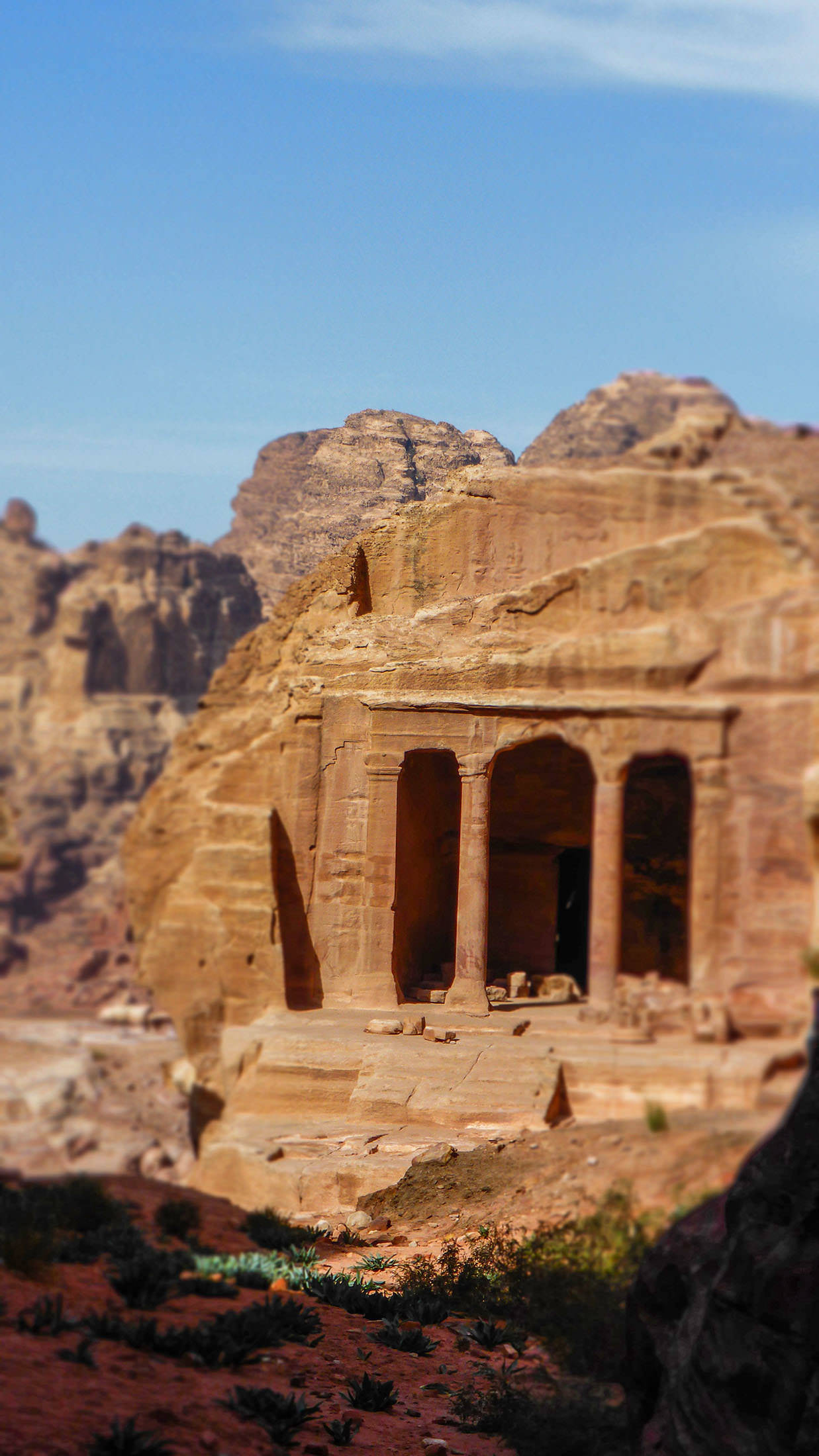
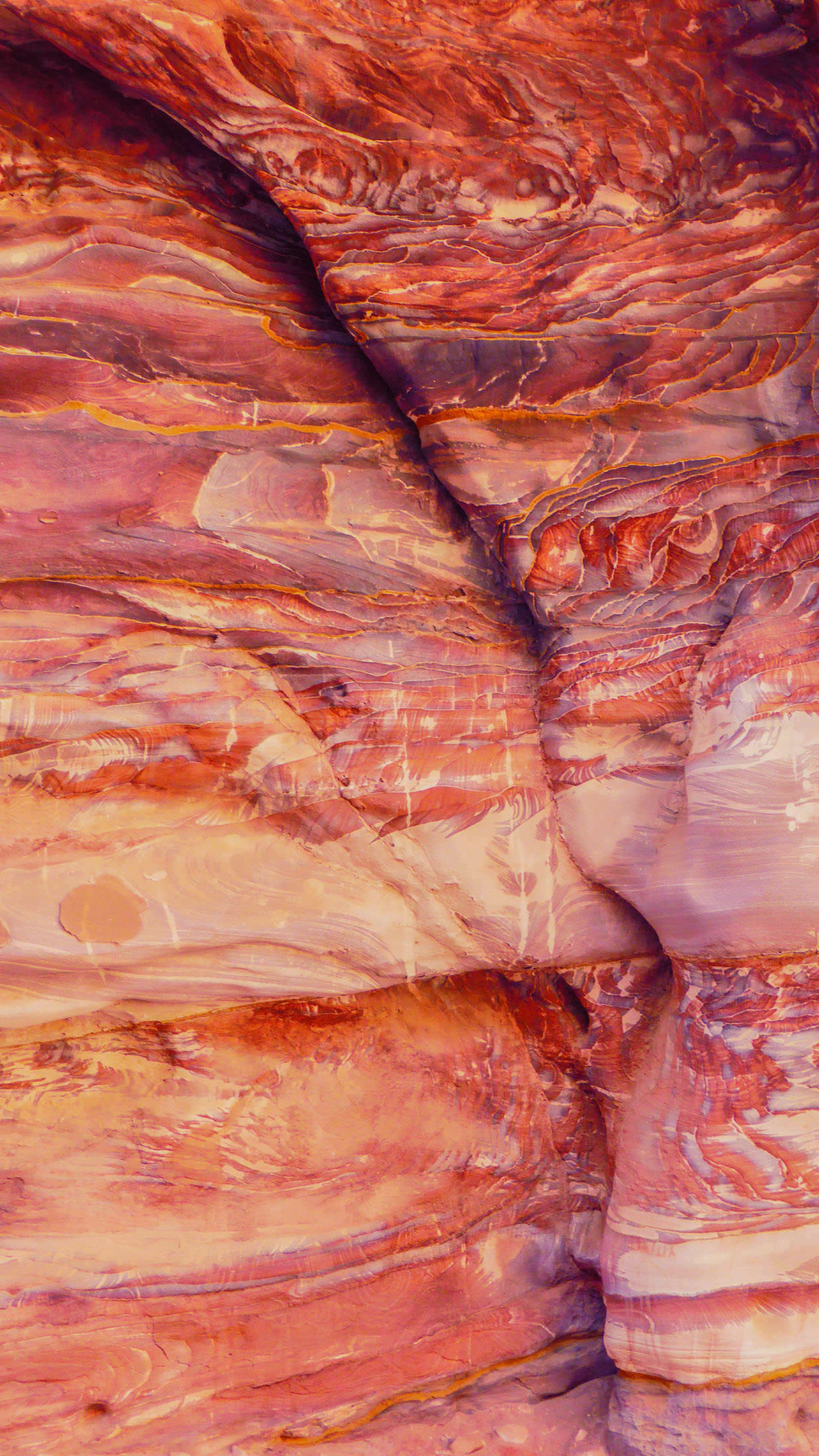
Linked originally by a courtyard to the Garden Tomb, it’s a place of intrigue and beauty, with carved decorations on the inner walls.
Roman Soldier Tomb
Not far from the Triclinium is a façade carved out of red sandstone, the tomb of a Roman soldier, dating to 129 AD. In fact, not a great deal is known about the tomb and its occupant, heightening the sense of intrigue a visit can invoke.
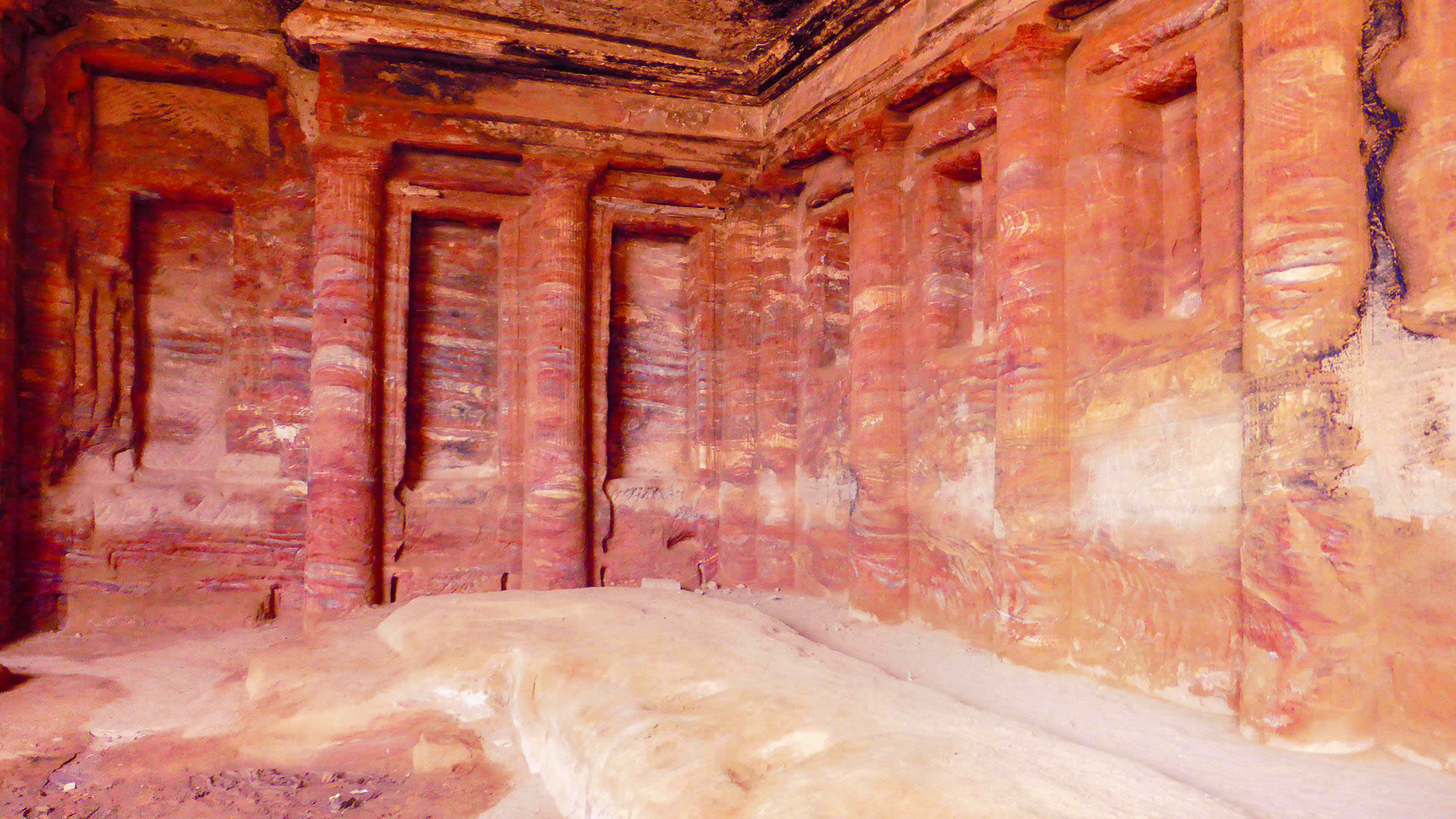

The area in which the tomb is found happens to be the point at which Petra is her most colourful, with eroded sandstone walls splashed in palettes of crimson, pink and blue, streaks through the rock that are ethereal.
From here, it’s a matter of walking either the way you came or continuing, which will return you to a point near the Street of Facades.
Recommended Length of Stay in Wadi Musa
Two to three days
Spend the first day wandering around the main sights, and the second walking the Madras Trail. You could spend a third day wandering even farther afield as three-day tickets are available, or perhaps spending time in the Hammam in Wadi Musa.
Accommodation - Staying in Wadi Musa
I stayed at Saba’a Hotel which, in reality, is a hostel. Showers were lukewarm, at best, but the ambiance was convivial, staff friendly and facilities clean. It was centrally located and they provided a packed lunch (as I assume most lodgings in the area do) that I took with me into Petra.
Budget: Petra Inbox Hostel
It’s only a quick walk to the entrance, which is a huge bonus when you’re up early to explore. They’ve got free parking, a shared kitchen, and a chill lounge where you can meet other travellers. The breakfast options are decent too, so you can fuel up without breaking the bank.
Mid-Range: Petra Canyon Hotel
For a bit of a splurge with comfort in Wadi Musa, Petra Canyon Hotel is a solid 4-star option that balances style with convenience. It's just a short drive from Petra, and after a long day exploring, you can kick back by their seasonal outdoor pool or take in the views from the terrace. The rooms come with all the essentials — minibar, flat-screen TV, and comfy beds, plus there’s a solid breakfast spread to start your day.
And if you’re in the mood for something different, their restaurant covers everything from American to Chinese dishes, with vegetarian and halal options on request.
High-End: The Old Village Hotel & Resort
For a high-end stay that’s rich with character, The Old Village Hotel & Resort in Wadi Musa is a gem. Set in a building from the 1800s, it’s got that old-world charm with modern luxury — think stone walls, serene courtyards, and top-notch amenities. The resort’s indoor and outdoor pools make it easy to relax after exploring, and the complimentary shuttle to Petra is a huge plus.
With a great breakfast spread and friendly, round-the-clock service, it’s a splurge that feels genuinely special.
Food - Eating in Wadi Musa
Wadi Musa, as the gateway to Petra, offers a diverse range of dining options to suit any budget or taste. From street food stalls to higher-end establishments, you can find everything from authentic Jordanian dishes to international fare.
While I didn’t sample all the options, I did enjoy a meal at Al-Arabi Restaurant, which I can recommend for its tasty, safe, and reasonably priced food. It's a good choice if you’re looking for a local dining experience without breaking the bank.
For those planning to explore Wadi Musa’s food scene, I'd suggest keeping an open mind and possibly seeking out recommendations from fellow travellers or locals, as quality can vary.
Transportation - Getting around Wadi Musa
On Two Feet
Walking is the best way to see Petra, to get up close with the sites and truly appreciate the earthen quality of each artefact. So long as you’re equipped with decent walking shoes, a hat, sunscreen, water and a snack, then the trek through Petra will be enjoyable. There are places to sit for respite along the way.
On Four Feet
Camel, donkey and horse rides within the archaeological site are common, but I personally avoided them. The animals were skinny, emaciated and clearly in a bad state. I couldn’t justify paying to ride an abused animal when I have to perfectly functioning legs and paying to do so would simply propagate a problem.
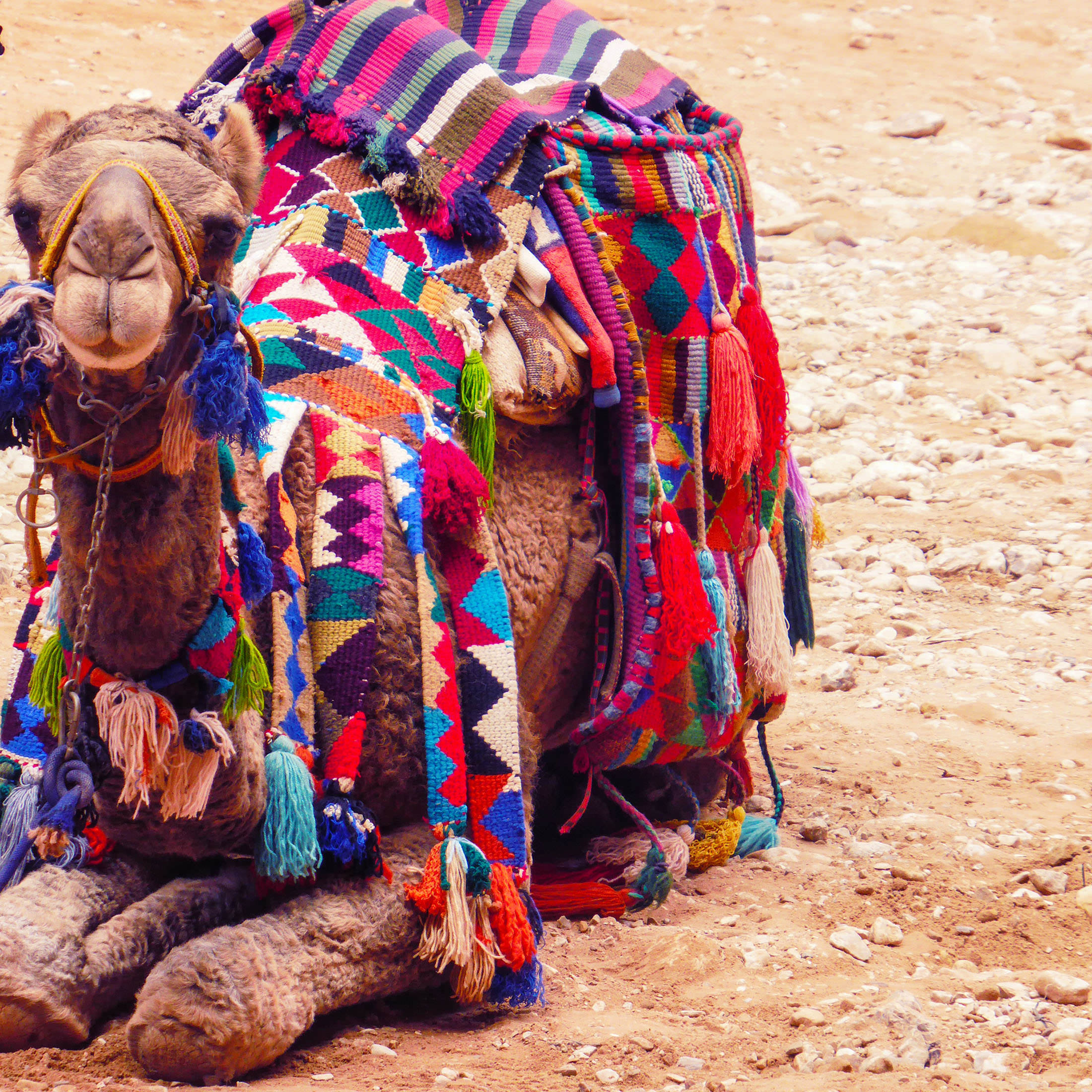
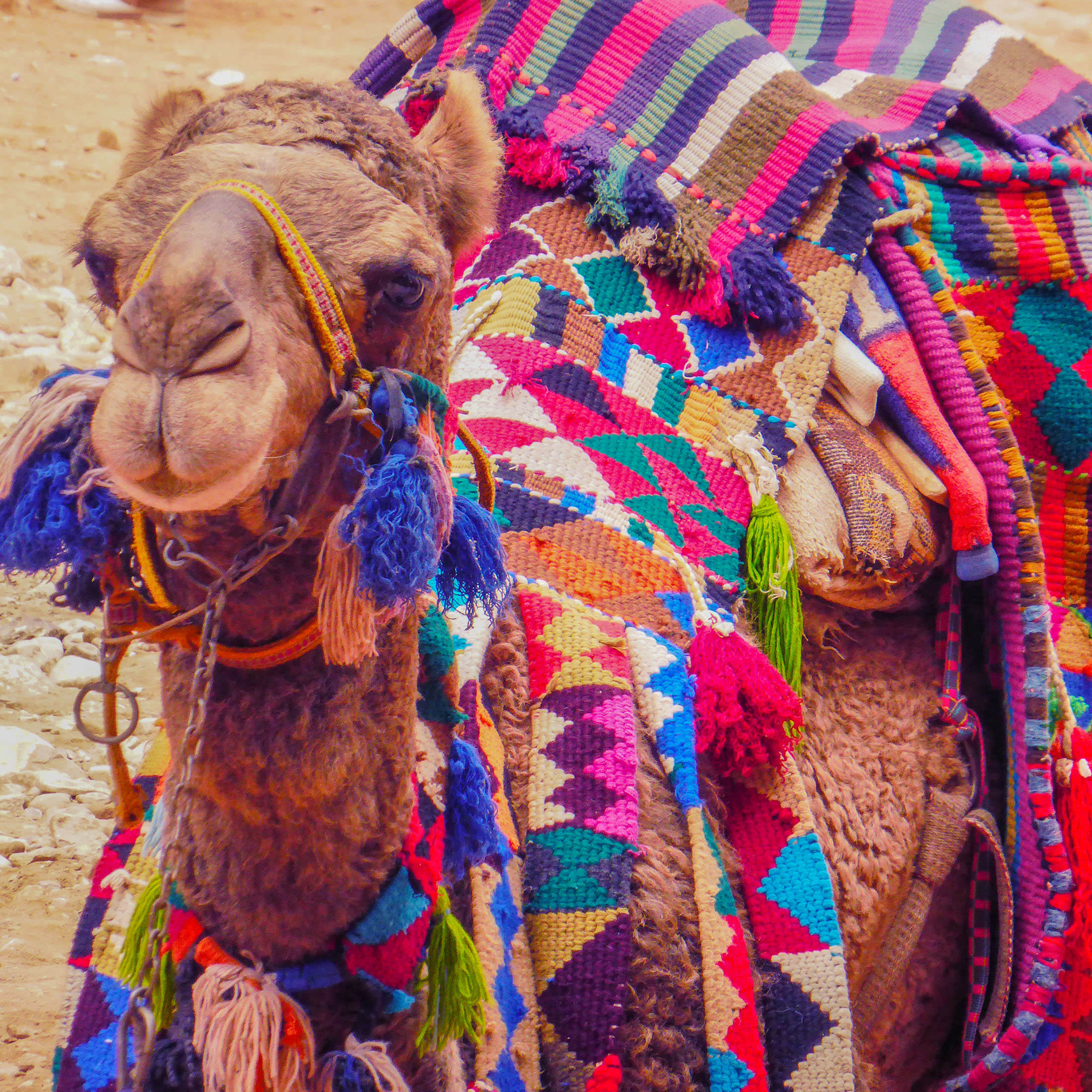
Be warned: scams abound, and you could be cheated out of large sums of money. It’s not uncommon to be offered a ride ‘for free’ only to be told a tip is necessary, in the range of 15JD! The choice is obviously yours but think twice and bargain hard before mounting a four-legged desert creature.
Transportation - Getting to Wadi Musa
By Bus/Minibus
JETT bus has a service that transports passengers from Amman to Wadi Musa daily, departing Amman at 6.30am. There are also JETT services between Aqaba and Wadi Musa.
I arrived in Wadi Musa on the bus from Amman. Others I met arrived in minivans following a jaunt in Wadi Rum (below), services that are public and run several times daily.
WADI RUM (ادي القمر) (Days 9-10)
Getting a sense of Jordan requires a ride through Wadi Rum, a perspective Lawrence of Arabia had, one that drew him to the rubicund dunes and windswept sandstone. With extremes in temperature, moody colours, benevolent Bedouin and glorious wilderness scenery, it is everything one expects of the desert.
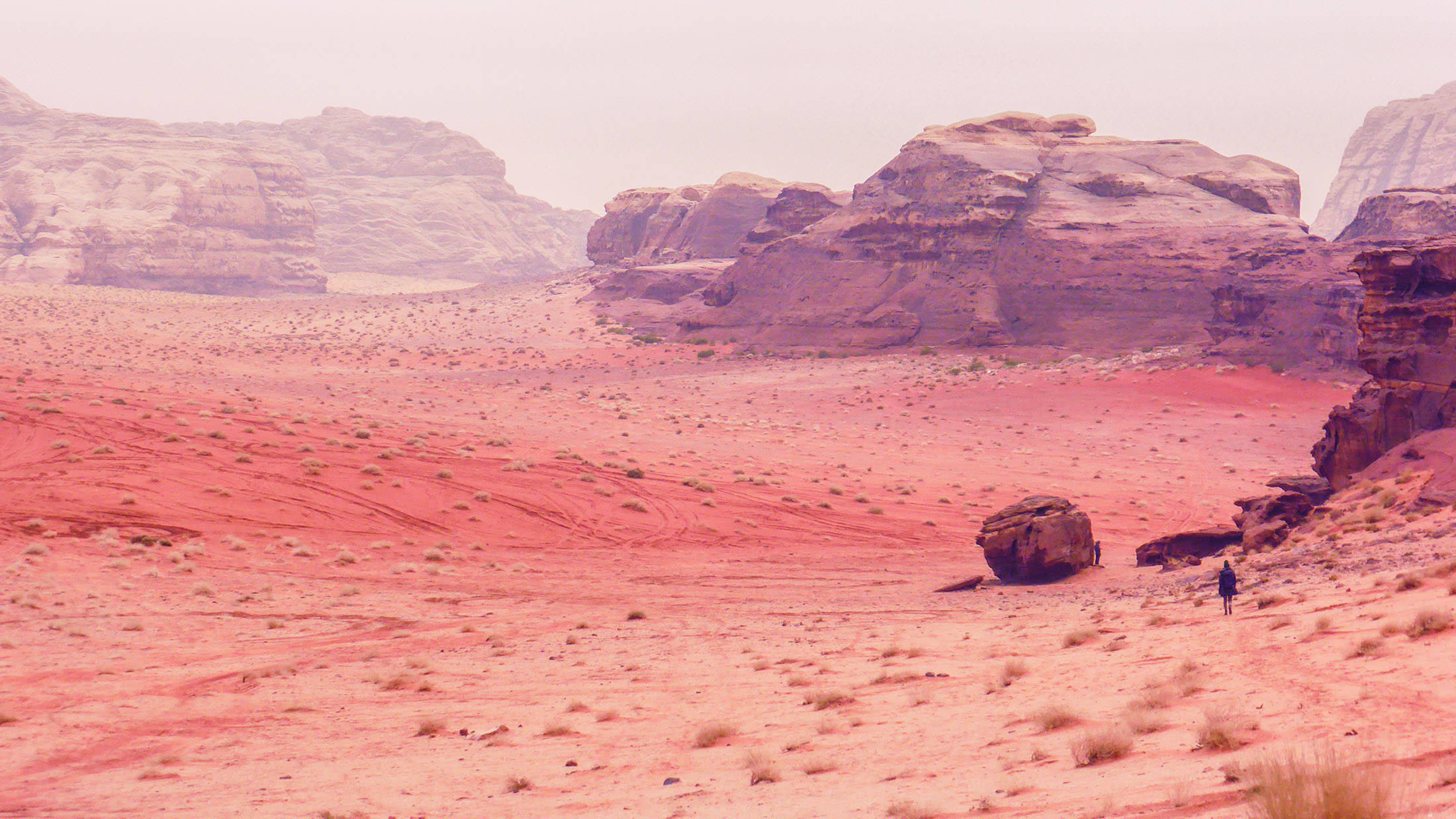
Without permanent infrastructure, the area is largely untouched. Thankfully, it’s safe, accommodating, and affordably accessible.
There are numerous companies that offer a variety of desert packages. They all include transportation (either on four wheels or legs), accommodation, and food.
Other options vary, depending on the size of the group and length of stay. I spoke with a few other travellers while in Wadi Musa, who recommended Red Stars as a decent budget tour option.
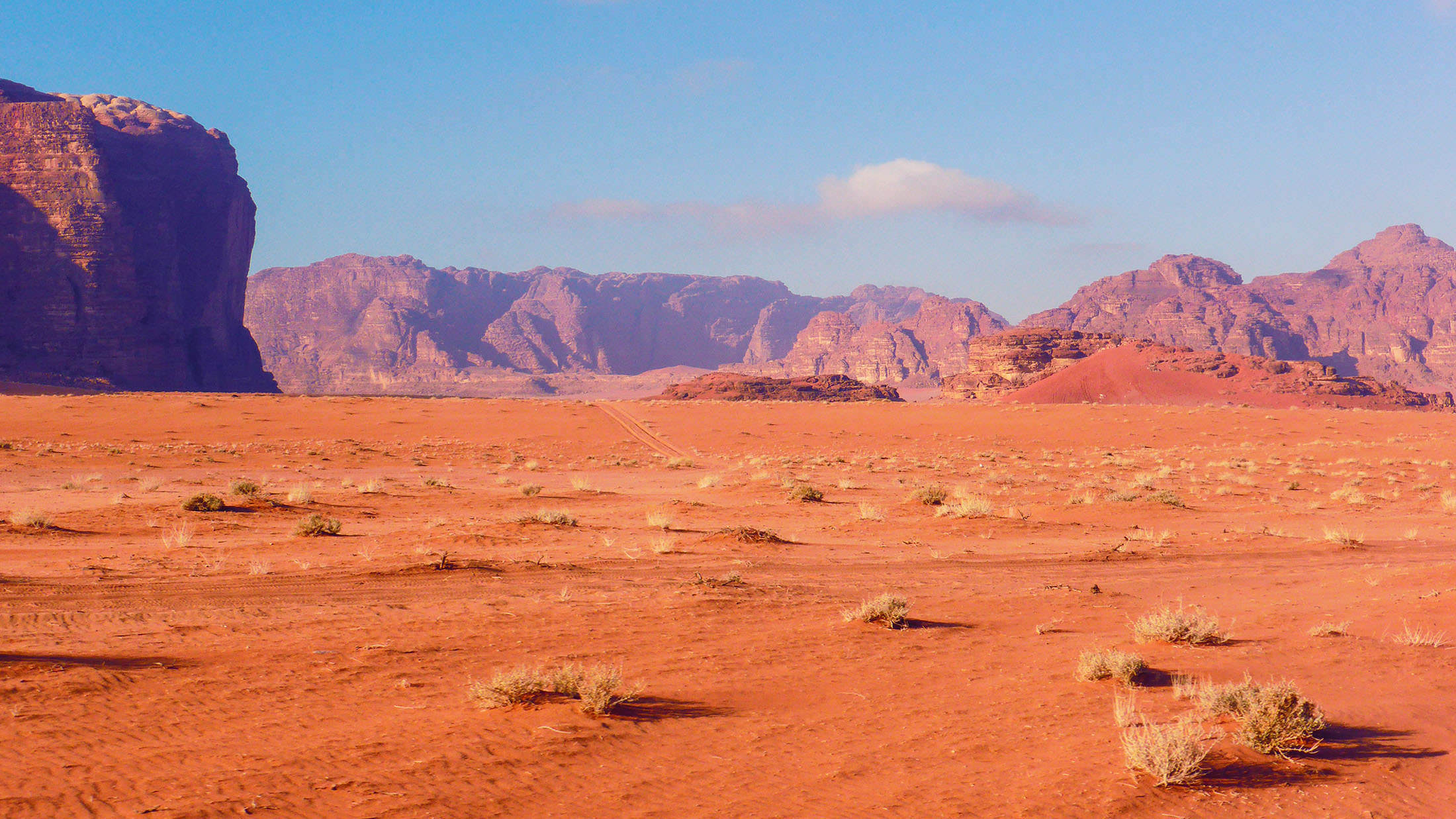
As a backpacker, the price and program they offered was ideal. It included a pickup from Aqaba, something that’s not included in all packages, and all of the features I’d wanted to see.
Take a look at the ‘Transportation - Getting to Wadi Rum’ section below for details of how to arrive by public transport.
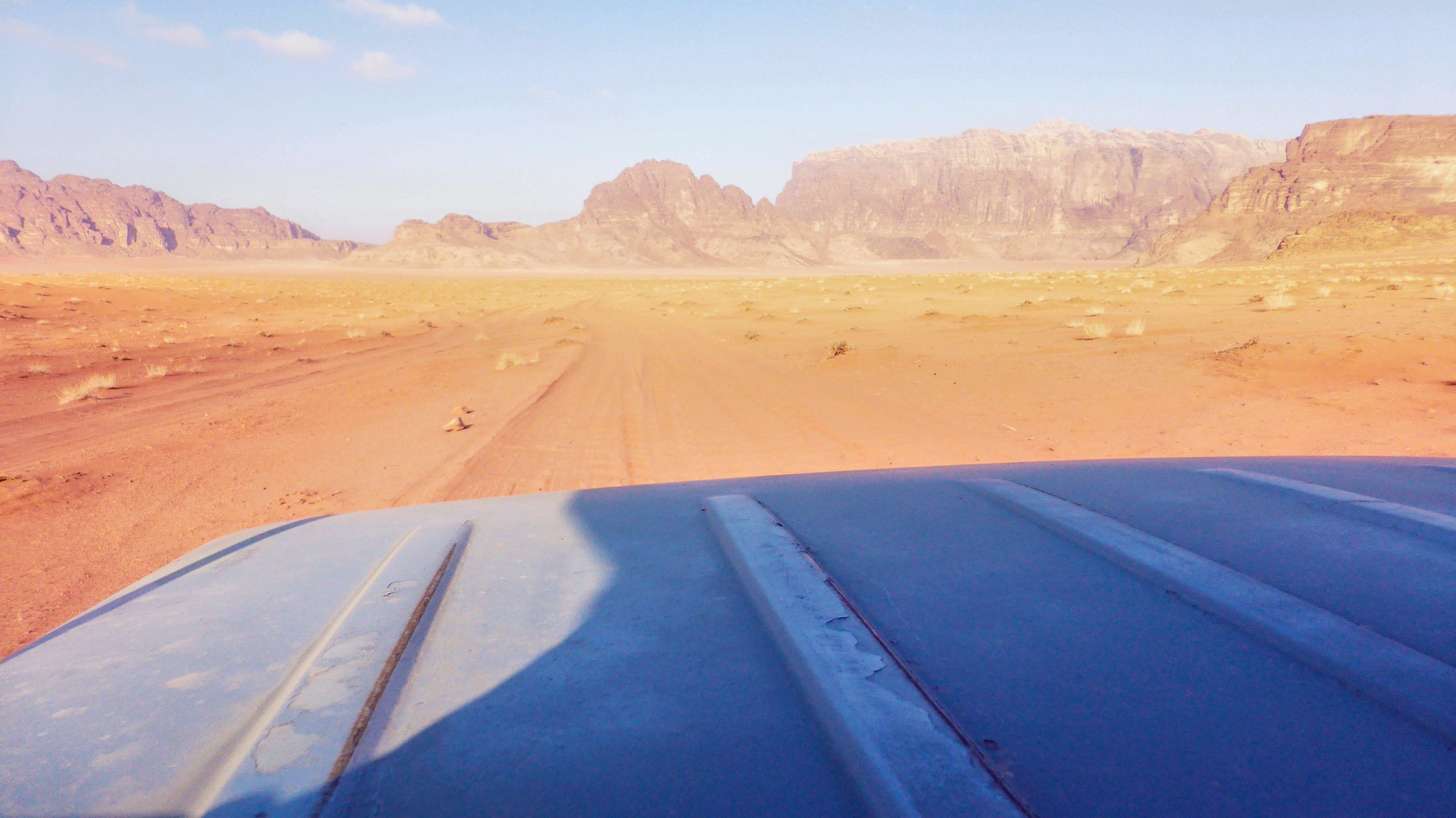

Wadi Rum provides a surreal desert experience that adds a unique touch to your 2-week Jordan travel itinerary.
This is the itinerary the half-day one-night jeep tour followed. I assume most tours cover the same sights; there’s not much else to see aside from sand, sand and more sand.
Sights You'll See in Wadi Rum on a Desert Valley Tour
Wadi Rum Village
It’s the starting point of all Wadi Rum excursions, a village approximately 30km from the Desert Highway, a short distance past the Visitor’s Centre.
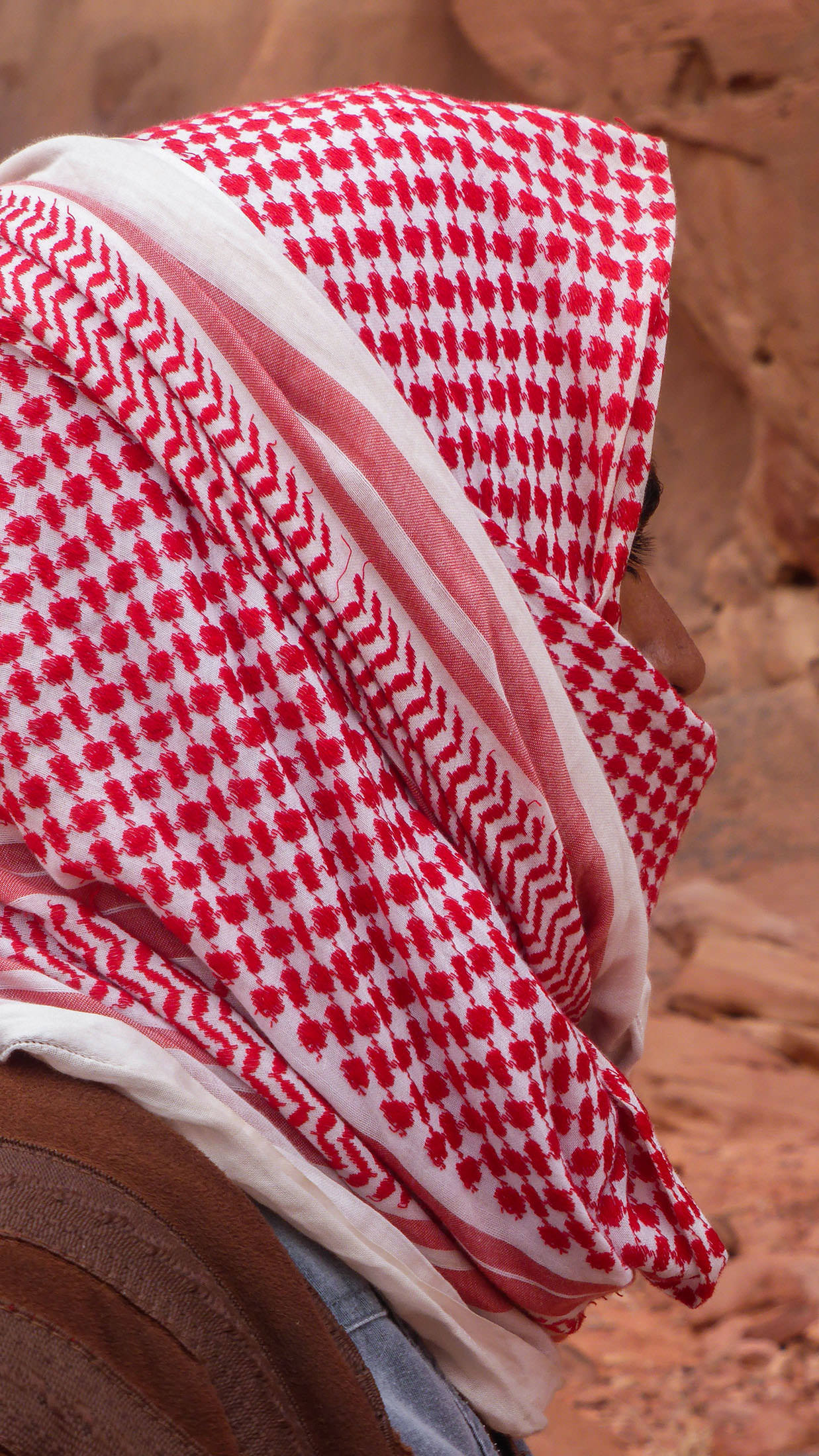
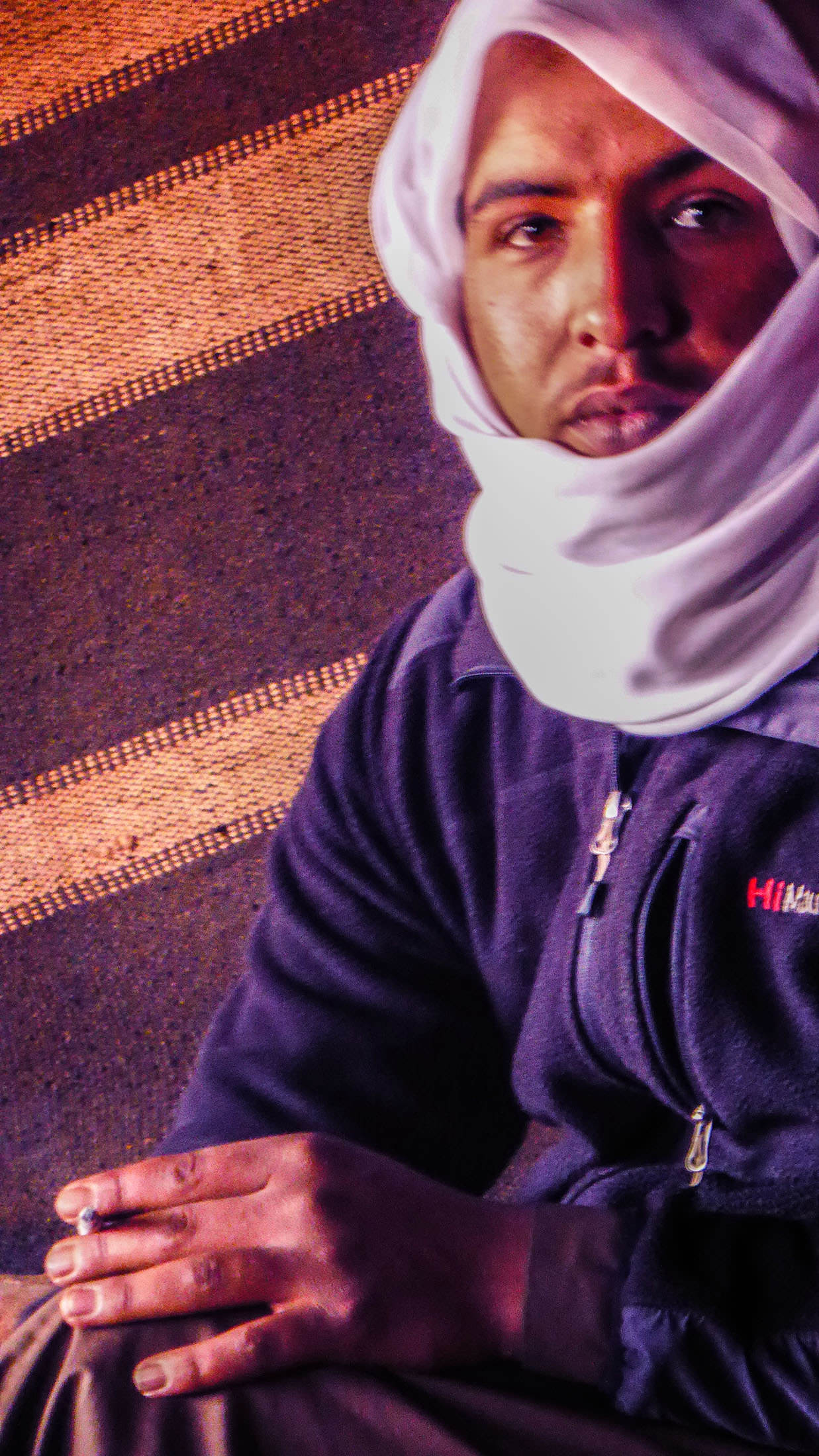
It’s certainly not a highlight of a desert excursion, merely a meeting and starting point. It’s where my tour began, at 10 am.
Lawrence Spring
This is where the real desert fun begins.


Following a short scramble up a rocky face, the stagnant puddle emerges, but don’t despair: it’s not the unprepossessing spring (the one referred to by the great TE Lawrence himself) that warrants your attention. Turn around, slowly, and admire the magnificent view of the vast desert landscape.
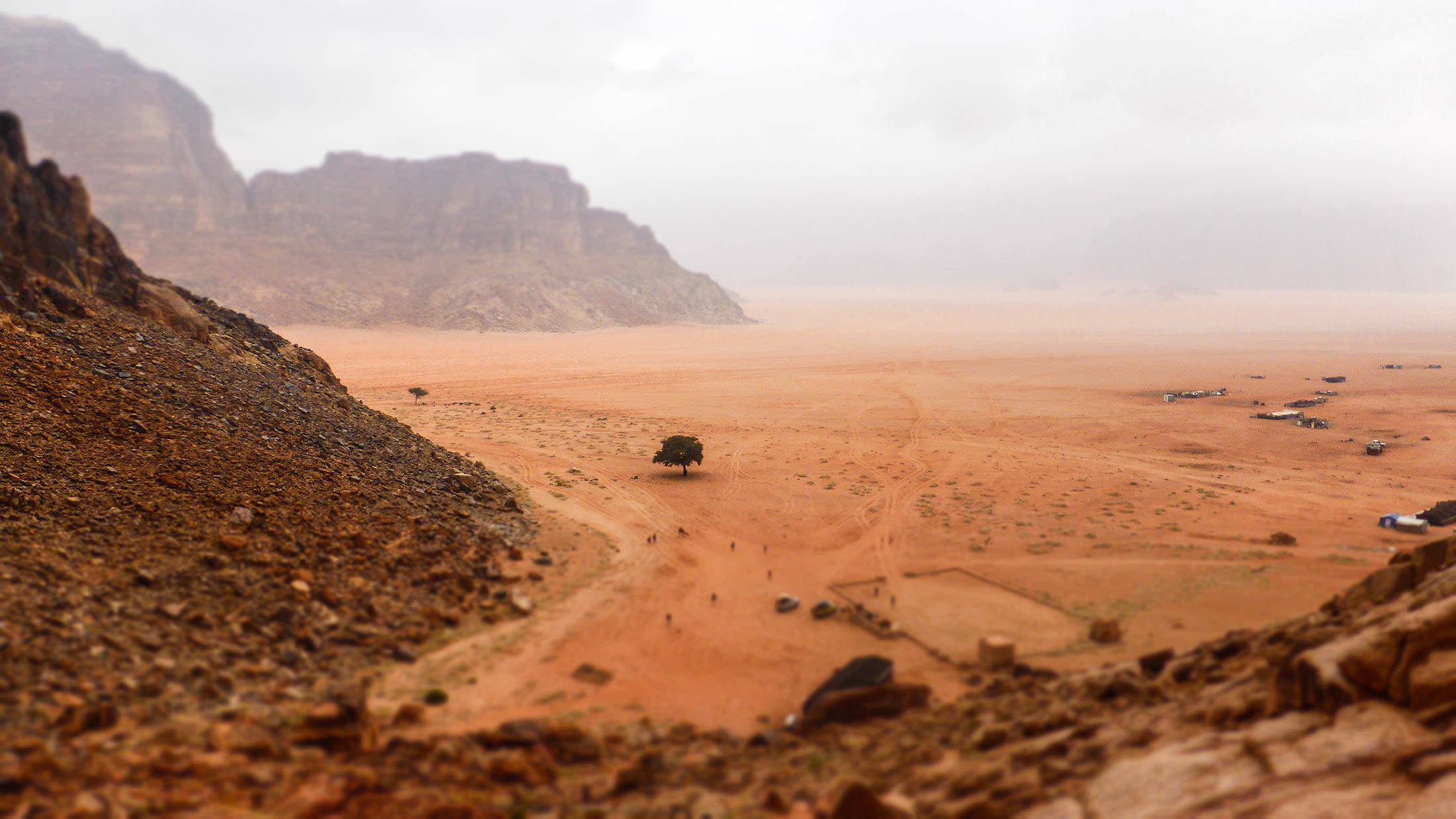
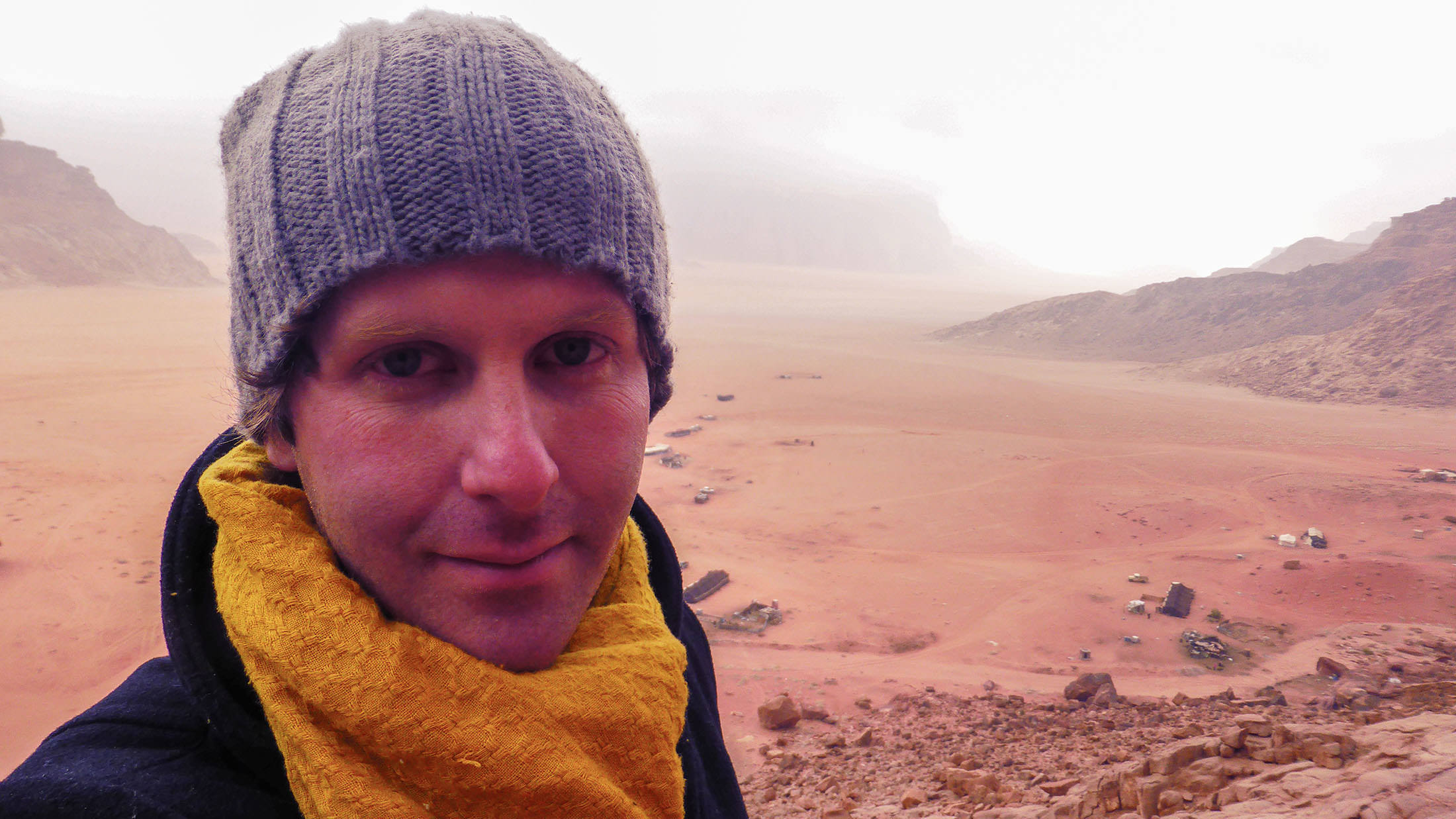
I took my time, found a rock on which to sit, and contemplated the desert scene, painted by the hands of God. It was kind of hypnotic.
Jebel Khaz’ali Canyon (Siq)
It’s a narrow fissure cut into Jebel Khaz’ali.

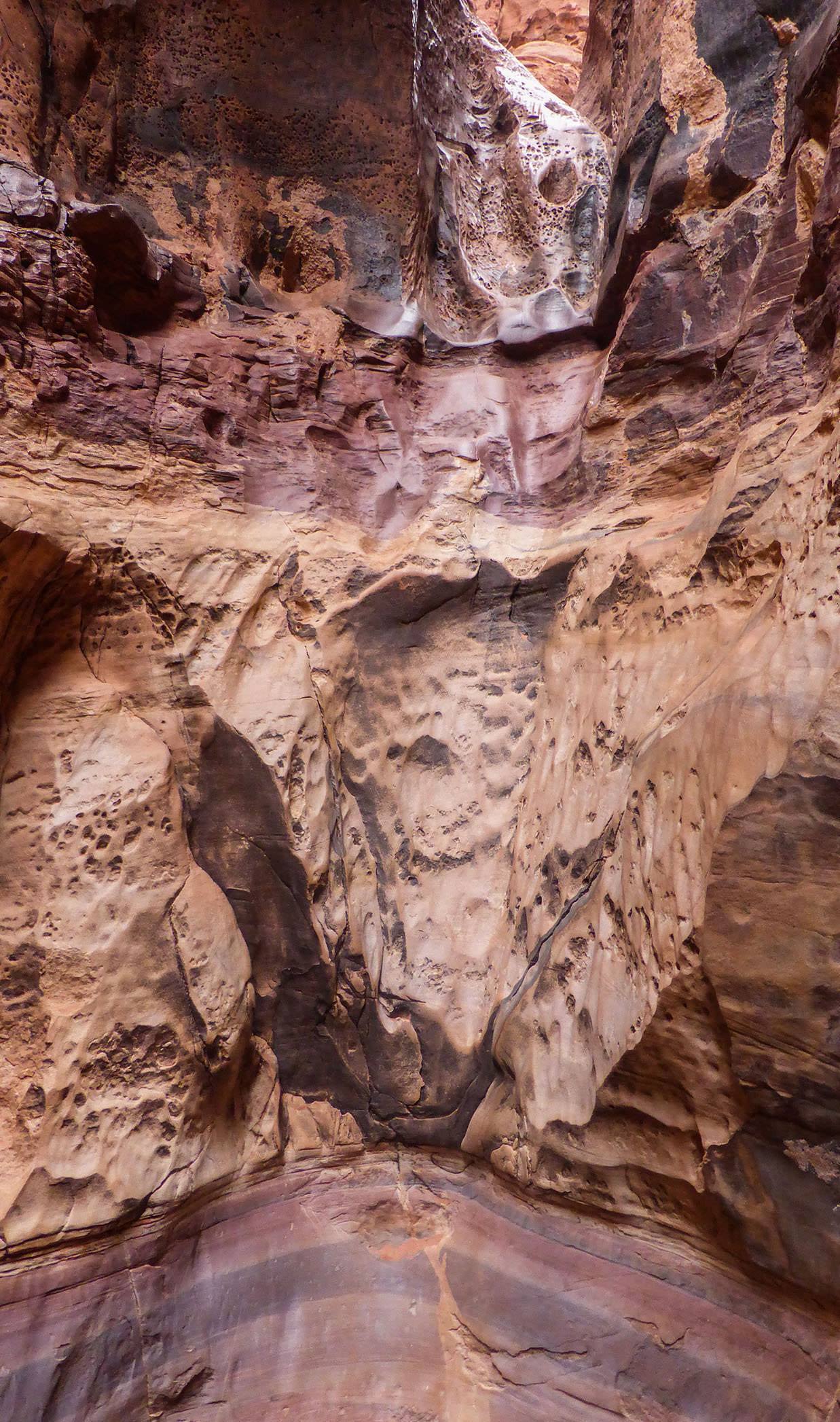
Complete with meaningful Nabataean inscriptions and the changing shadows of day, it’s a fascinating place to spend 15 to 20 minutes.
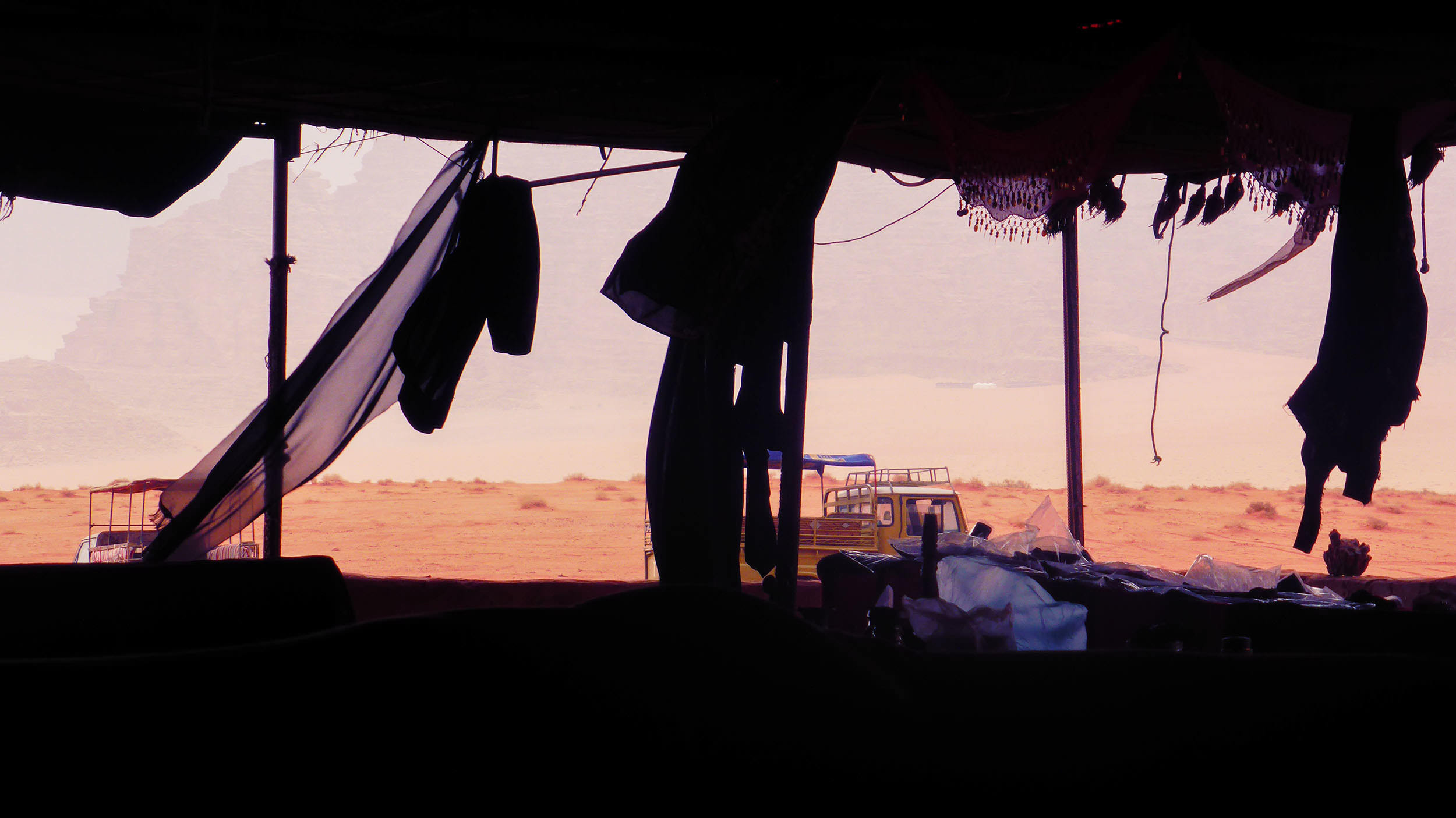
It’s only 150 metres deep, so there’s no penetrating to the other side, unless of course you have ropes and a daredevil sense of adventure.
Wadi Umm Ishrin (Red Sand Dunes)
If you’ve never tried your hand at sandboarding, then it’s at the red sand dunes of Umm Ishrin that you can start.

A convergence of white and red sand, the dunes slope beside a jebel, a cardio-fuelled climb for those (like me) void of aerobic ability. The reward arrives during the descent.
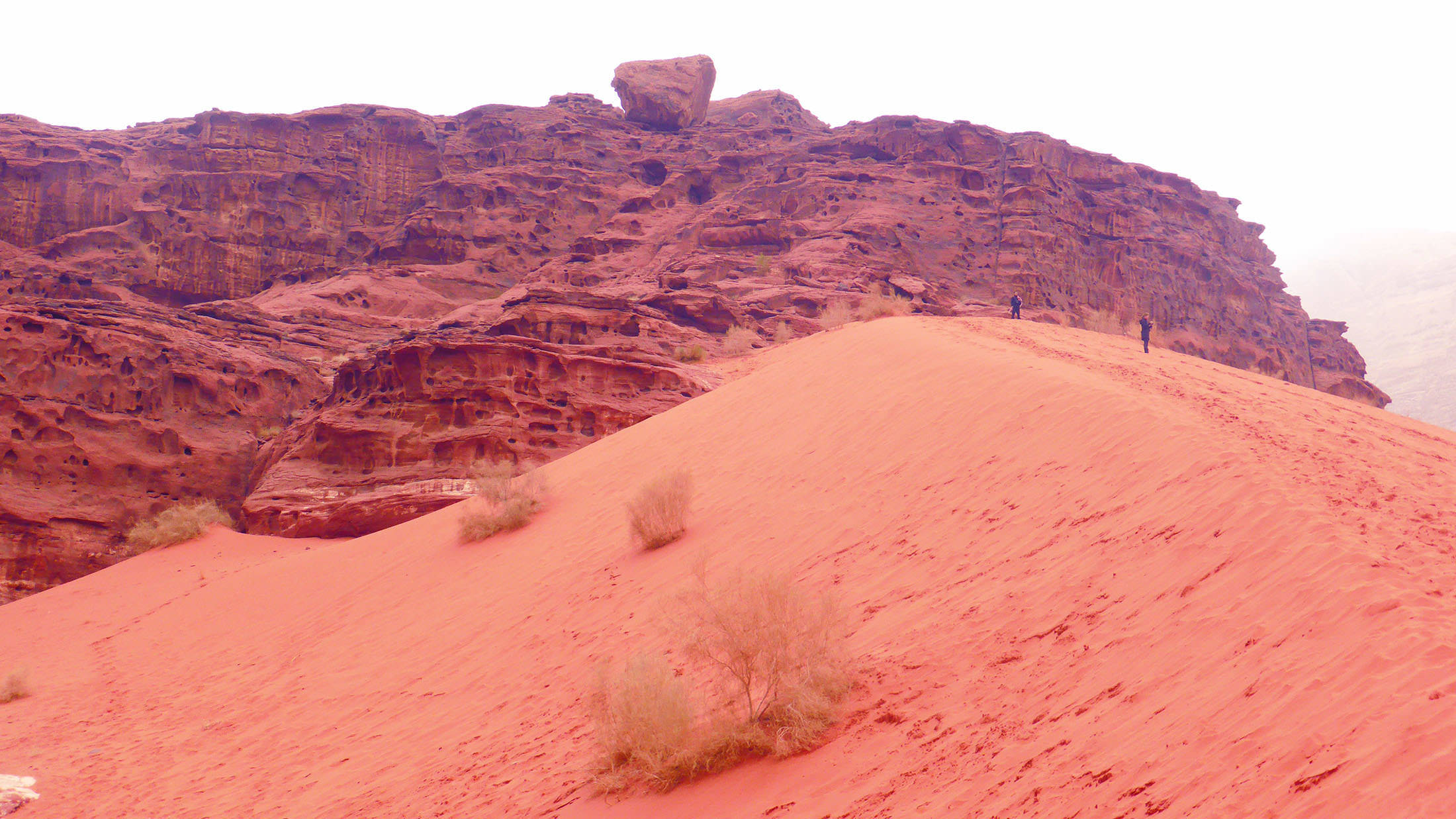

Tours usually stop here for 30 minutes, enough time to amble up, tiny step after step, slide back a little, eventually reach the top and rapidly descend.
Lawrence House
It is allegedly the residence of Lawrence of Arabia during the Arab Revolt, though speculation surfaces whenever you seek concrete details.
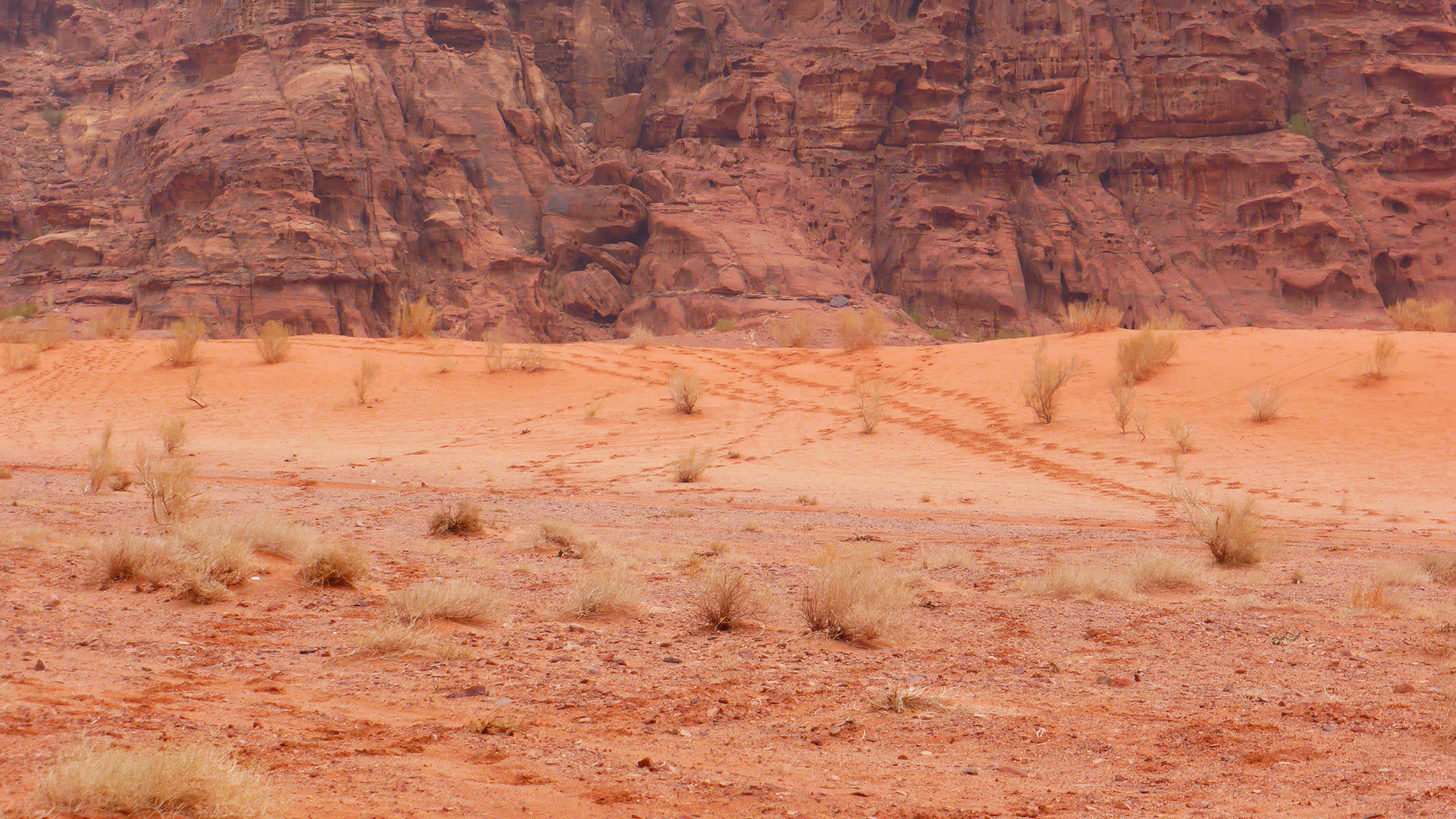
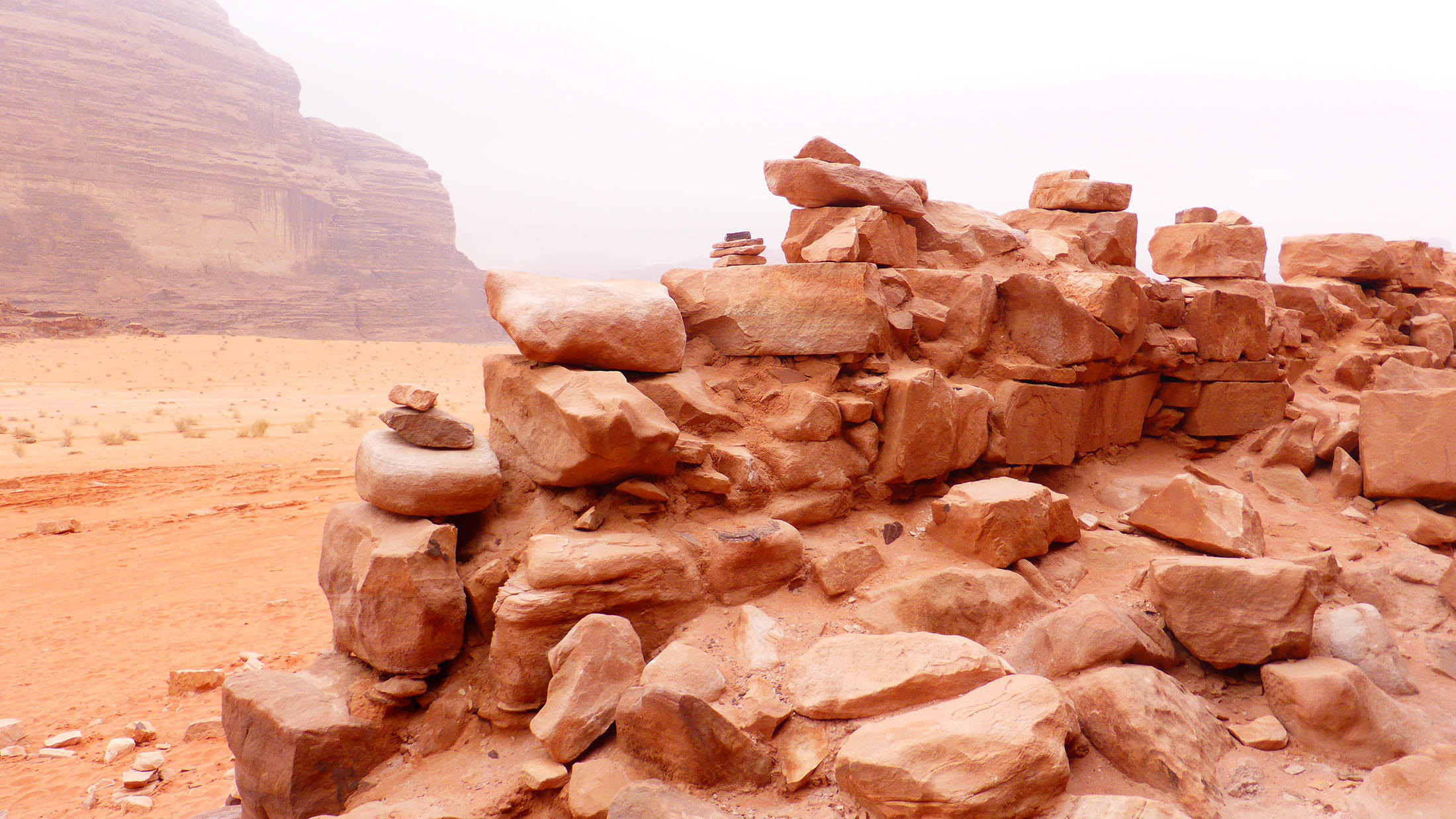
Now a mere pile of rubble, the house holds little allure compared to the stunning desert landscape that envelops it.


I forgot to photograph the bricks strewn messily across the earth, as the desert nearby (pictured above) distracted my attention.
Jebel Anafishiya
Close to Umm Ishrin is a mountain with Nabataean rock inscriptions.

It seems as though ancient carvings exist all throughout the region, but the ones shown to visitors are the most prominent of those excavated to date.
Take your time, try to figure out what you see and discern the meaning behind each image.
Jabal Umm Fruth Bridge
Easily climbed without gear (or a guide) is a 20-metre-high stone bridge, formed at the convergence of two mountains in the Wadi Rum desert.
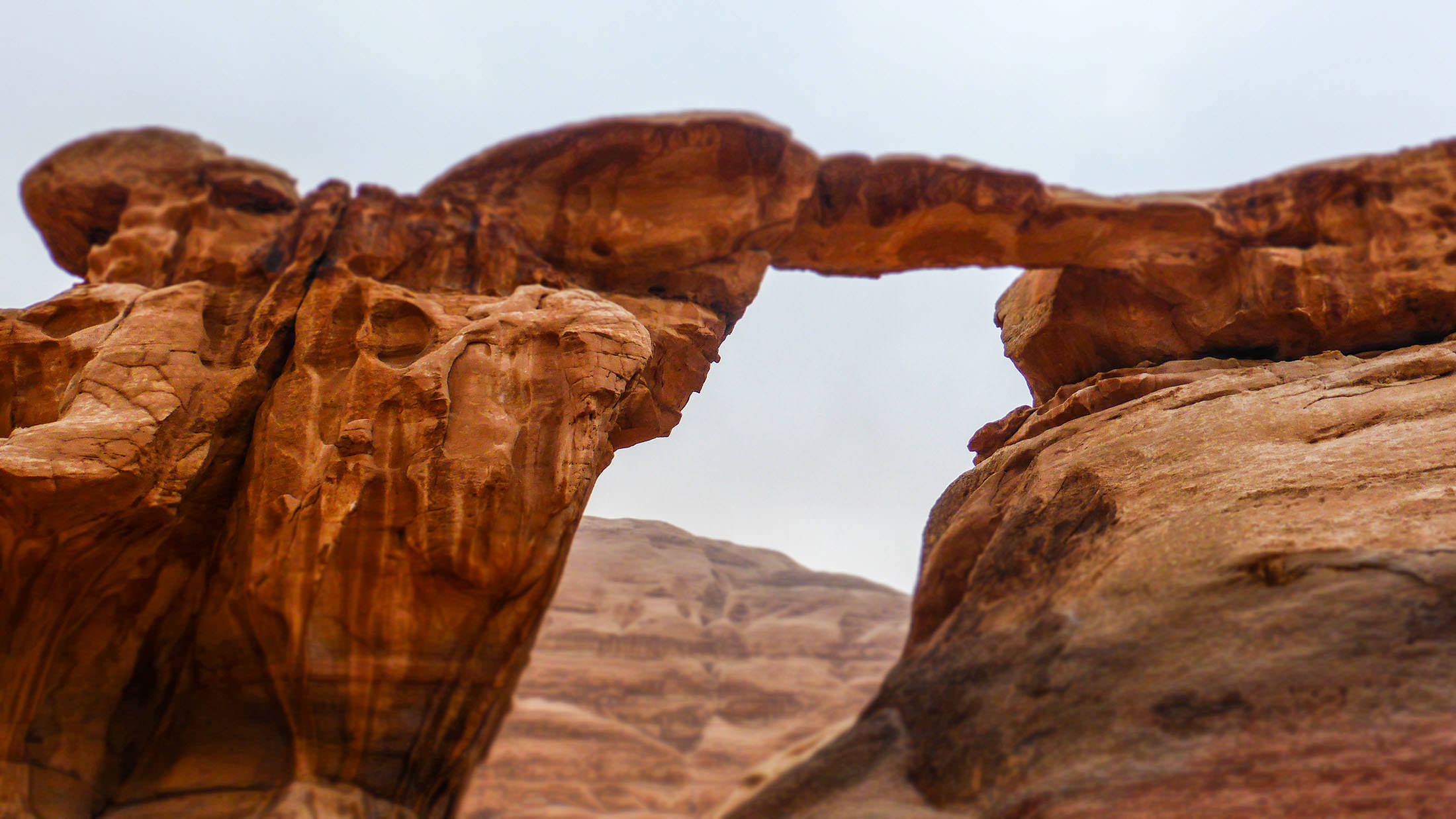
It’s one of many similar natural occurrences throughout the desert, but the easiest with which to engage minus the acquisition of injuries. I chose not to climb, following the physical exertion in the sand dunes but rather moved around, trying to find the best perspective for a photograph.
Sunset Point
Void of a visual, thanks to an eerie winter vapour that had swept across the desert, enveloping the sky and horizon, the group opted for a walk through the siq and red sand dune not far from the Bedouin camp.
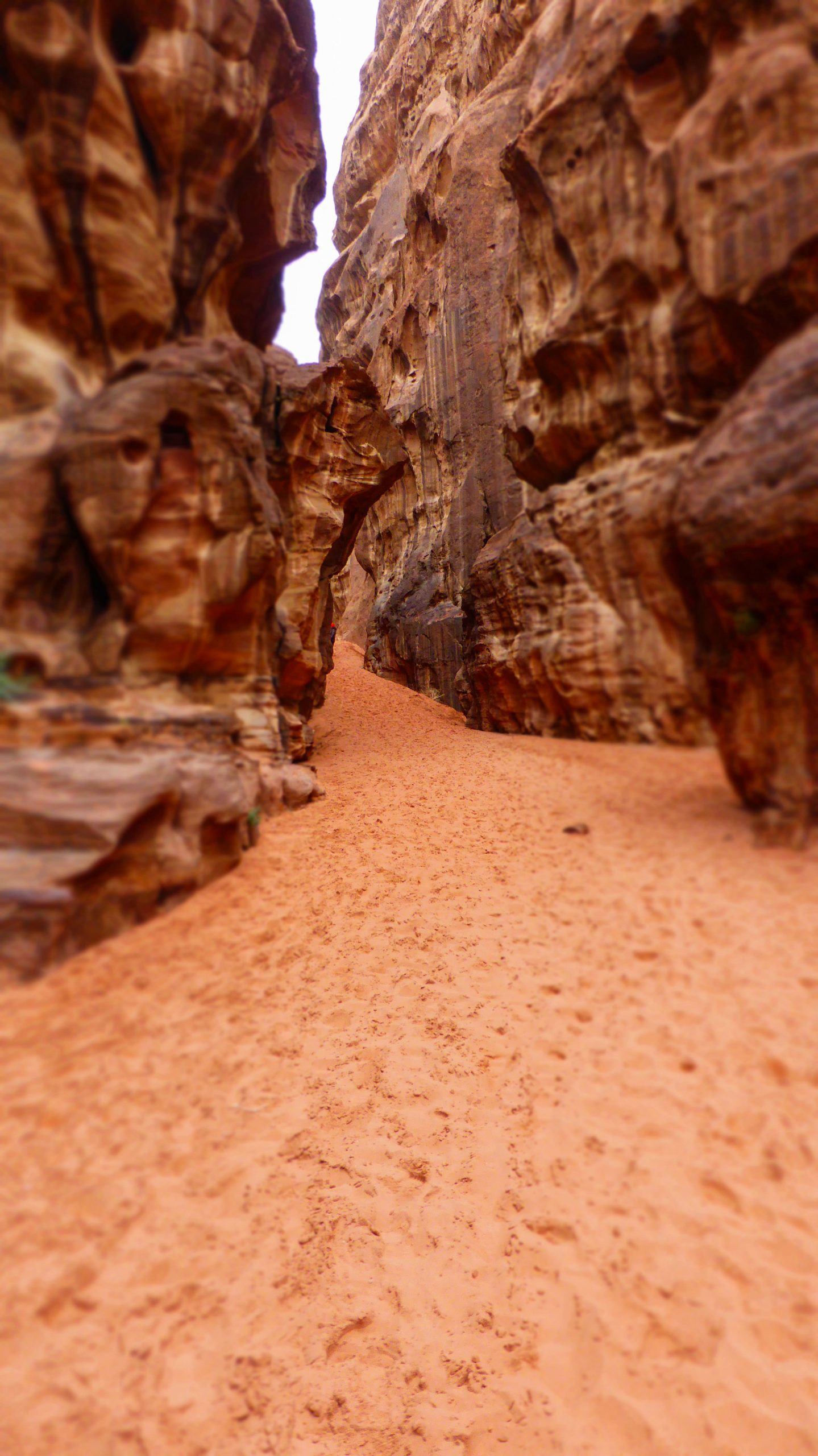
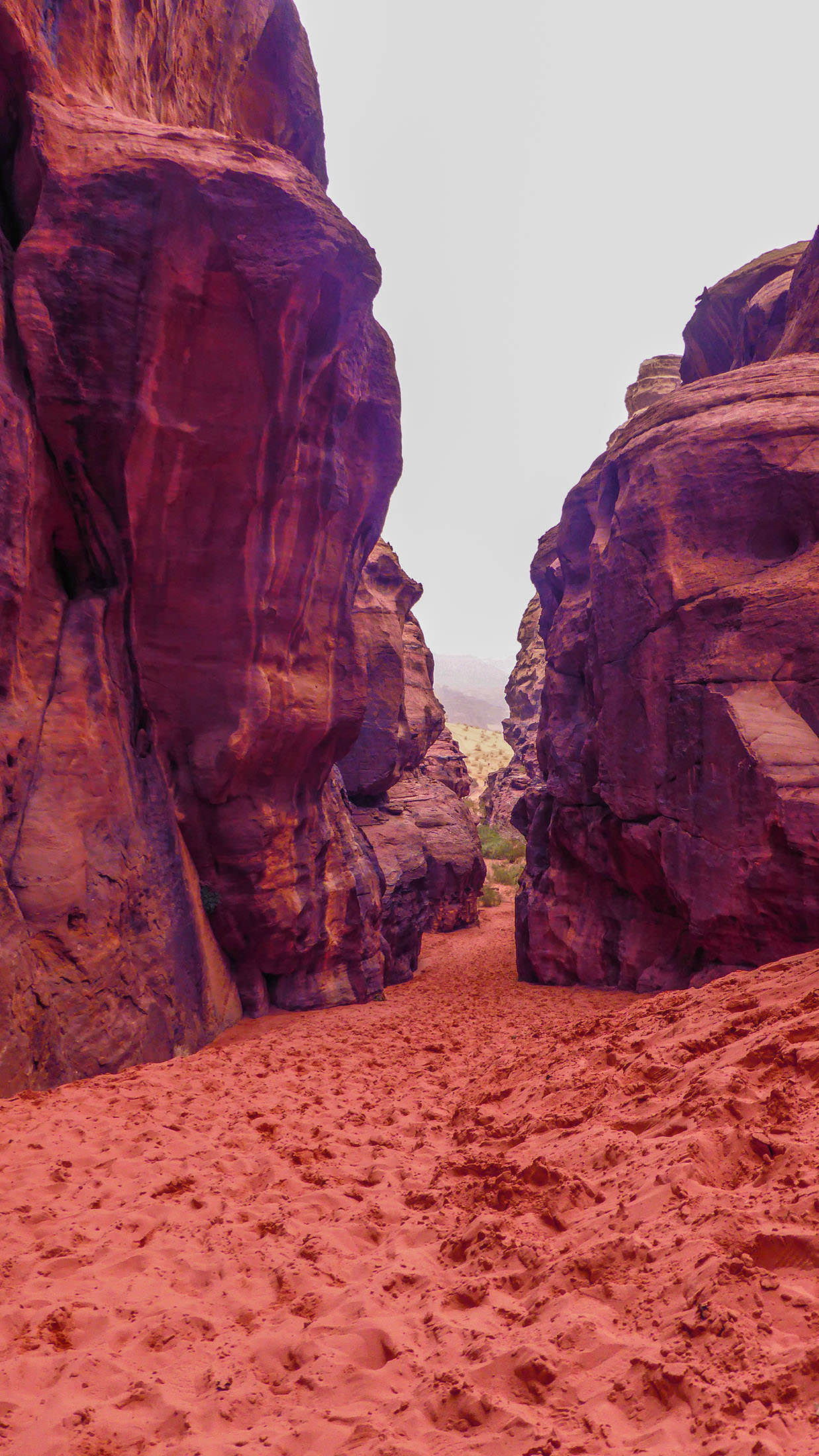
In lieu of sitting expectantly for the golden orb to highlight the magic of the surrounding landscape, the walk only served to intensify the beauty of Wadi Rum.


Its magic was evident in every fissure of sandstone, face of mottled rock and grain of variegated sand.
Bedouin Camp
There are many camps scattered throughout Wadi Rum, but most have features in common: tents complete with bedding, toilets, a communal dining area and a kitchen (used by staff only).
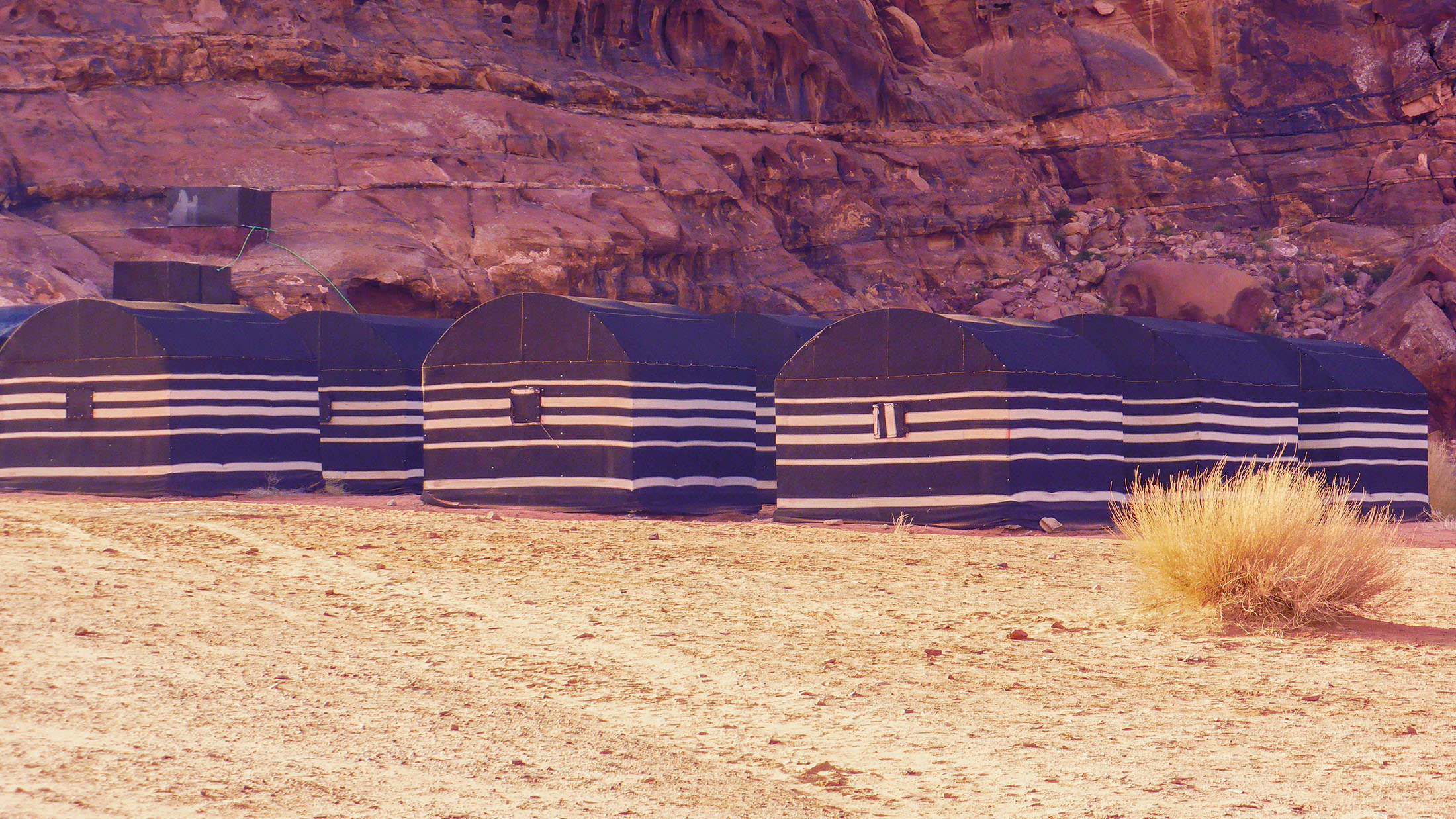
The Bedouin are a nomadic people, the only ones who are legally permitted to reside in the desert, so everything they have is transportable.
Stars (Gazing)
Sadly, for my winter desert experience, the sky was not clear, so no stars could be seen. However, with no fixed residences and little light pollution, the heavens from a Wadi Rum perspective would go on infinitely.

If you do go star gazing, ensure a flashlight is carried for the outbound and return journeys. Getting lost in the desert, at night, probably wouldn’t be the kind of adventure that’d satiate adrenaline desires.
Recommended Length of Tour for Visiting Wadi Rum
One day and night
Getting into the desert generally means being part of a tour, but this isn't mandatory - accommodation (recommended below) within the Wadi Rum Protected Area can be booked separately.
I'm not a fan of doing tours. But this one was fine, in part because I had great company, and the Rum Stars staff were professional and friendly.
There are various tour options available, from half day trips to multi-day desert excursions.
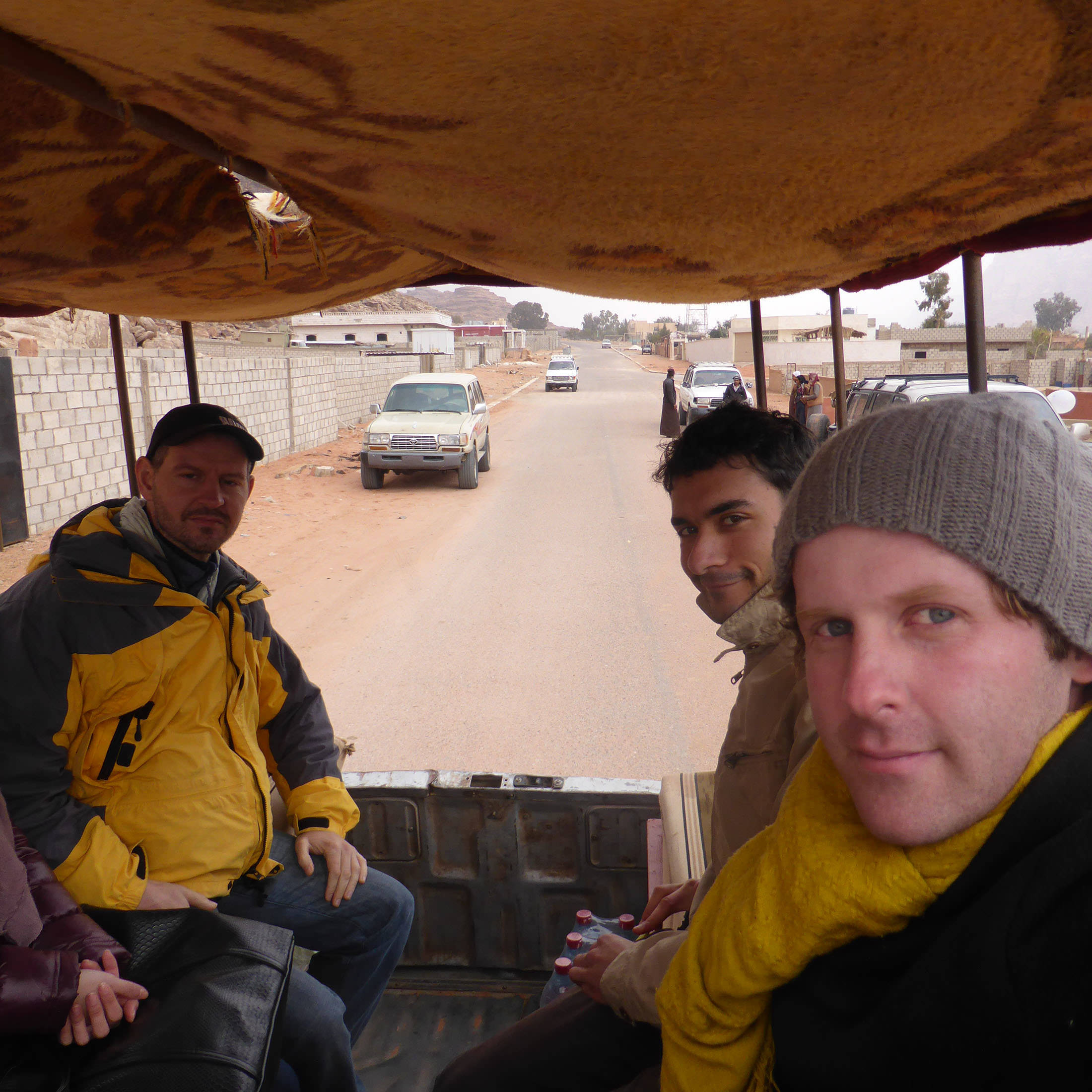
The length of time you stay in the desert depends entirely on your budget and personal preference. I’d stayed in deserts before in other parts of the world, longer term, and wasn’t interested so much in the experiential side of things this time around.
I more or less wanted to see the red sand dunes and Lawrence Spring. One day and night gave me the opportunity to do just that.
I can personally recommend Rum Stars: professional, economical, personable and safe. There are many operators so, do your research, ask the right questions, check your budget and choose one that suits your needs.
Tour Accommodation - Staying in Wadi Rum
Where will you sleep?
If you choose a tour with an overnight stay, then you’ll be housed in a Bedouin Camp likely comprised of tents with beds inside.

Most establishments have toilets, and other facilities vary. The bedding was comfortable, and I was able to share a tent with two guys, one with whom I’d arrived and the other whom I met on the day.
If travelling solo, it can be hard to land a good deal, particularly when on tours. However, if you’re used to sleeping in hostels then sharing a tent with one or two other strangers likely won’t be so bad.
Note: If you opt to stay in Wadi Rum without doing a tour (which might seem odd, but is perfectly okay), then there are accommodation options that can be booked separately. Here are a few options.
Budget: Royal Wadi Rum Camp
For a unique and budget-friendly five-star experience in Wadi Rum, Royal Wadi Rum Camp offers Martian-style dome huts that add a surreal touch to your desert stay. It combines comfort with Bedouin charm, featuring soundproofed rooms with private entrances for a peaceful experience. You’ll find an open-air bath, a garden, and a sun terrace to relax in, and the buffet breakfast — with fresh pastries and pancakes — is a great way to start the day.
And if you’re visiting in winter, you can even rent ski equipment and try skiing nearby!
Mid-Range: Panorama Wadi Rum
For a truly surreal stay in Wadi Rum, Panorama Wadi Rum offers Martian-style dome tents that let you experience the desert like nowhere else. These unique, bubble-shaped tents provide panoramic views, allowing you to stargaze from the comfort of your bed and take in the rugged landscape in all its beauty. Equipped with modern amenities, the tents balance luxury with the adventure of staying in the heart of Wadi Rum.
It seems to be a fantastic five-star option on a mid-range budget.
High-End: The Villas - Bedouin Boutique Resort
For a luxurious stay in Wadi Rum, The Villas - Bedouin Boutique Resort combines high-end comfort with Bedouin charm. This five-star resort features air-conditioned rooms with private bathrooms and balconies that open up to stunning mountain views — perfect for soaking in the desert scenery. With a garden, shared lounge, terrace, and on-site restaurant, it’s designed for relaxation.
Plus, the resort offers a 24-hour front desk, room service, and airport transfers, so you’ll have everything you need for a seamless stay. It’s an ideal high-end option for experiencing Wadi Rum in style.
Tour Food - Eating in Wadi Rum
Food will be prepared fresh at the camp, by the staff, on arrival.

Expect lots of mint tea, and don’t be shy about trying fodder options: ingredients are collected daily and prepared lovingly by trained staff.
Tour Transportation - Getting around Wadi Rum
4WD and Camel
Unless you’re on a long tour, then most companies use four-wheel drives rather than four-legged animals as the preferred mode of transporting visitors over the sand.


Sit in the covered tray and enjoy the ride.
Transportation - Getting to Wadi Rum
By Bus/Minibus
Here’s a step-by-step guide for getting to Wadi Musa, with a focus on accessing Wadi Rum from the main Desert Highway between Aqaba and Amman:
Start with Your Route
- The turn-off to Wadi Rum is 30-40km along a road branching from the Desert Highway, located between Aqaba and Amman.
Arrange Pickup (If Possible)
- If your tour contacts in Wadi Musa or elsewhere have offered a pickup service, this can simplify your trip significantly. Confirm with them in advance.
Take a Bus
- If you don’t have a pickup arranged, you’ll need to rely on bus services. Most buses can drop you at the intersection to Wadi Rum — just remember to request this specific stop when boarding.
- Note: JETT buses don’t typically make this stop, so consider other bus options if you’re aiming for the intersection.
Transfer at the Intersection
- Once you arrive at the turn-off, take a public minibus from there or try hitching a ride to reach the Wadi Rum Visitor Centre.
Plan from Amman or Aqaba
- Travelling from either Amman or Aqaba is generally the easiest way to reach this point on the Desert Highway.
These steps will guide you smoothly into Wadi Rum, ready to explore its vast desert landscape.
AQABA (عَقَبَة): Beachside Bliss on Your 2-Week Jordan Travel Itinerary (Days 11-13)
Nestled between Africa and Asia, Aqaba is a tourist hub. Forming the third element of the tourism triangle with Petra and Wadi Rum, there’s good reason visitors spend so much time in the south: hot, dry summers, warm winters, relaxed beachside living, and accessible international travel all form part of the appeal. After all, the Gulf of Aqaba shares a coastline with Israel, Egypt and Saudi Arabia, so opportunities exist for further international exploration.
It is a popular hop off point for travellers en route to Israel, the border between Aqaba and Eilat open and friendly.
A visit out of season can be a little monotonous, as I discovered in early January 2014. I bet it’s alive and buzzing during the summer months.
Here are a handful of laidback options that kept me entertained while in the region; hopefully they do you, too.
Sights to See and Things to Experience in Aqaba
Al-Hussein Bin Ali Mosque
An icon of Aqaba, or at least the most imposing sight you see on arrival, the gleaming white mosque is grand, and was named after the Emir of Mecca.
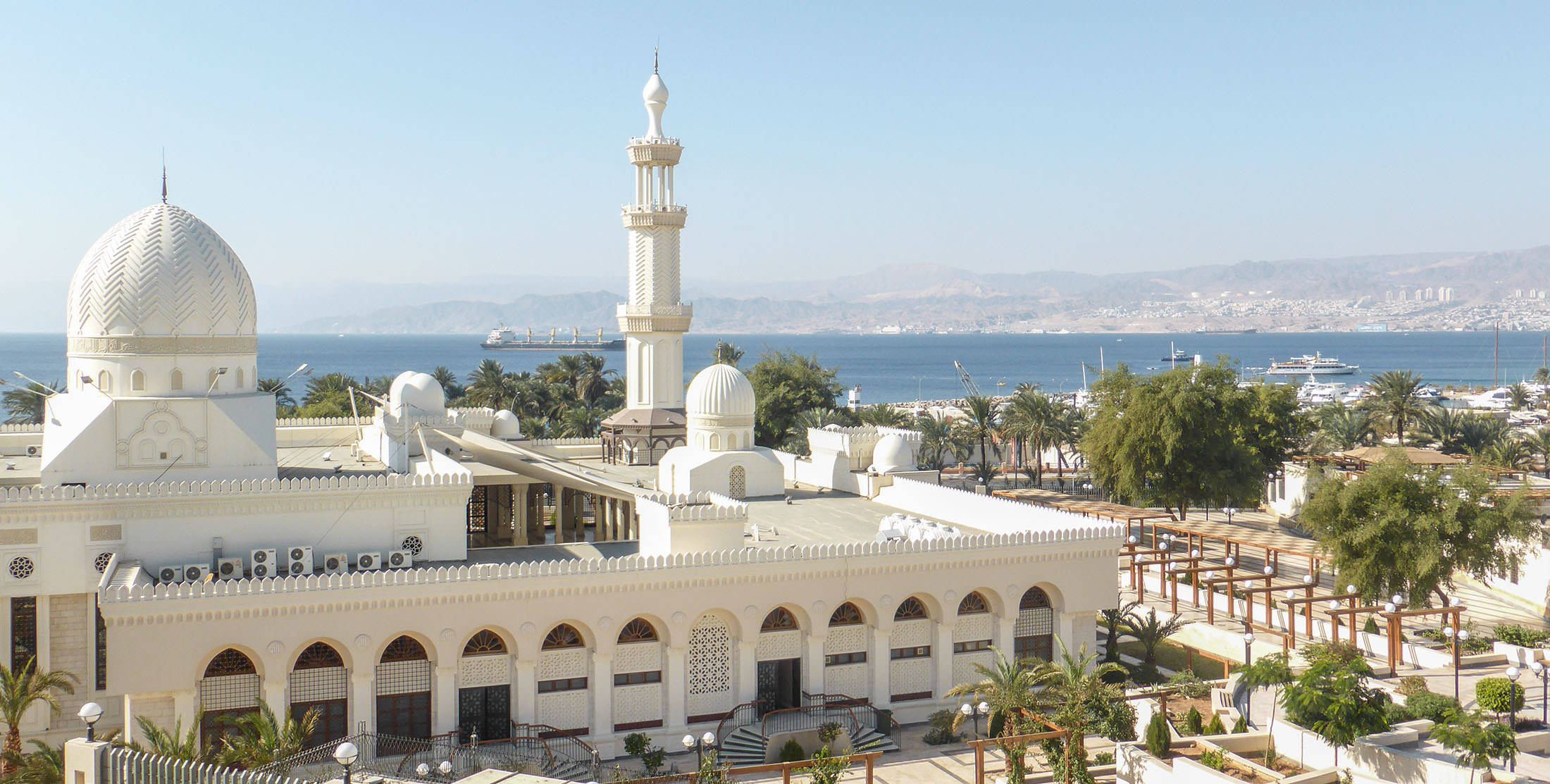
A man who initiated the Arab revolt, the mosque has developed a reputation - a symbol of power and strength - and is also a beacon of Islamic architecture, a striking contrast to the hustle of Aqaba with its Red Sea backdrop. It can be seen from far and wide, so don’t worry if you don’t take a special trip to its large doors: you likely won’t miss out.
Red Sea
The relatively still waters near Aqaba form part of the Gulf of Aqaba, a north-eastern extension of the Red Sea. The coastline divided between Jordan, Israel, Egypt and Saudi Arabia, it’s understandable the region is popular, particularly among visitors unafraid of the region’s notoriety perpetrated abroad. In fact, the Red Sea is home to world class diving locations, thousands of divers attracted annually, with an estimated 200,000 dives.
If you’re interested in trying out diving, this Discover Scuba Diving in Aqaba experience offers a beginner-friendly dive to explore the unique marine life and coral reefs of the Red Sea up close.
➡ Book Your Scuba Experience Here
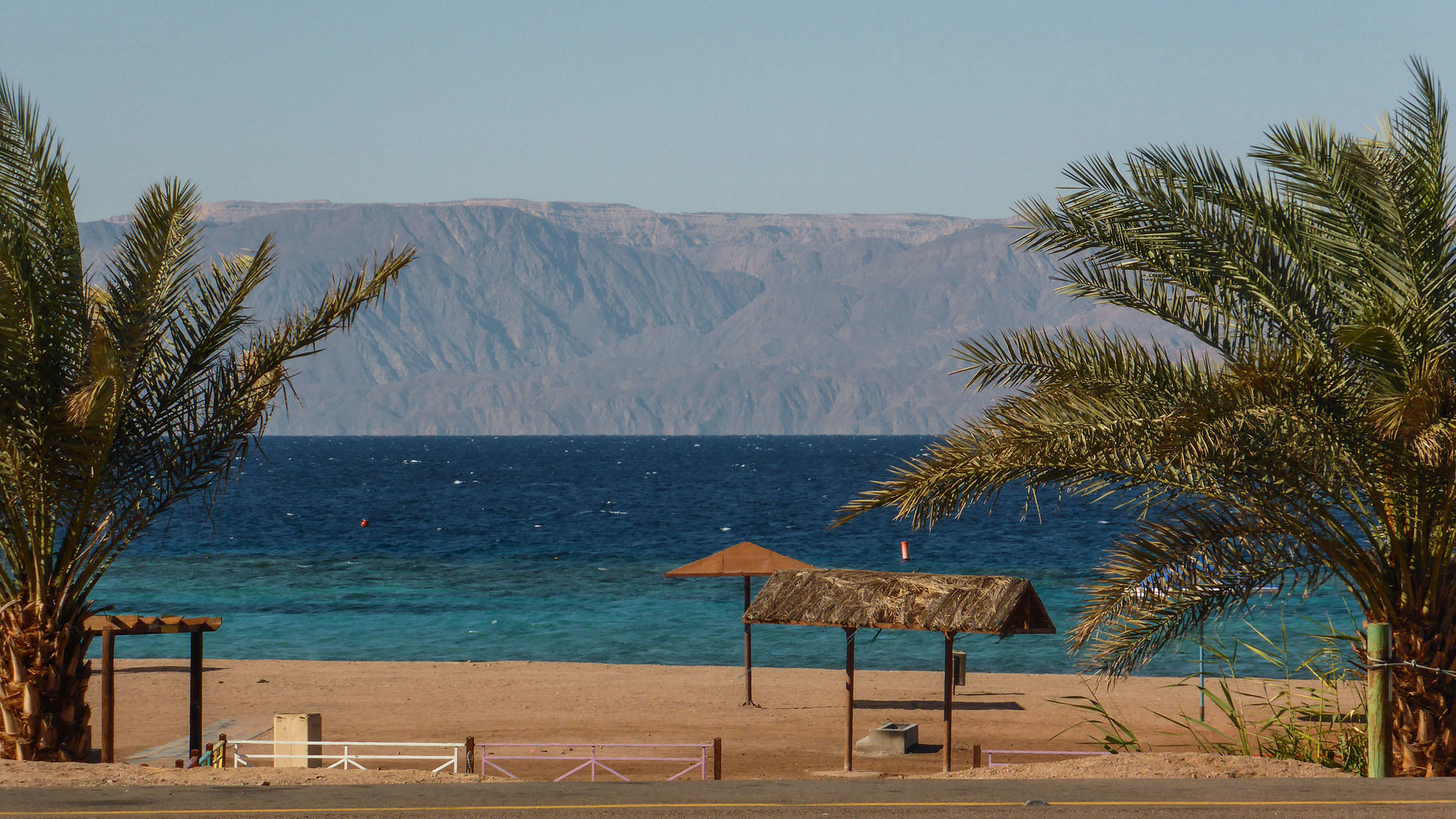
Whether it’s sunbathing, swimming, snorkelling or scuba diving you’re after, it can be done (or at least arranged) in Aqaba.
South Beach
Still the Gulf of Aqaba, a bus ride or drive out of Aqaba along the Southern Highway takes you to South Beach.
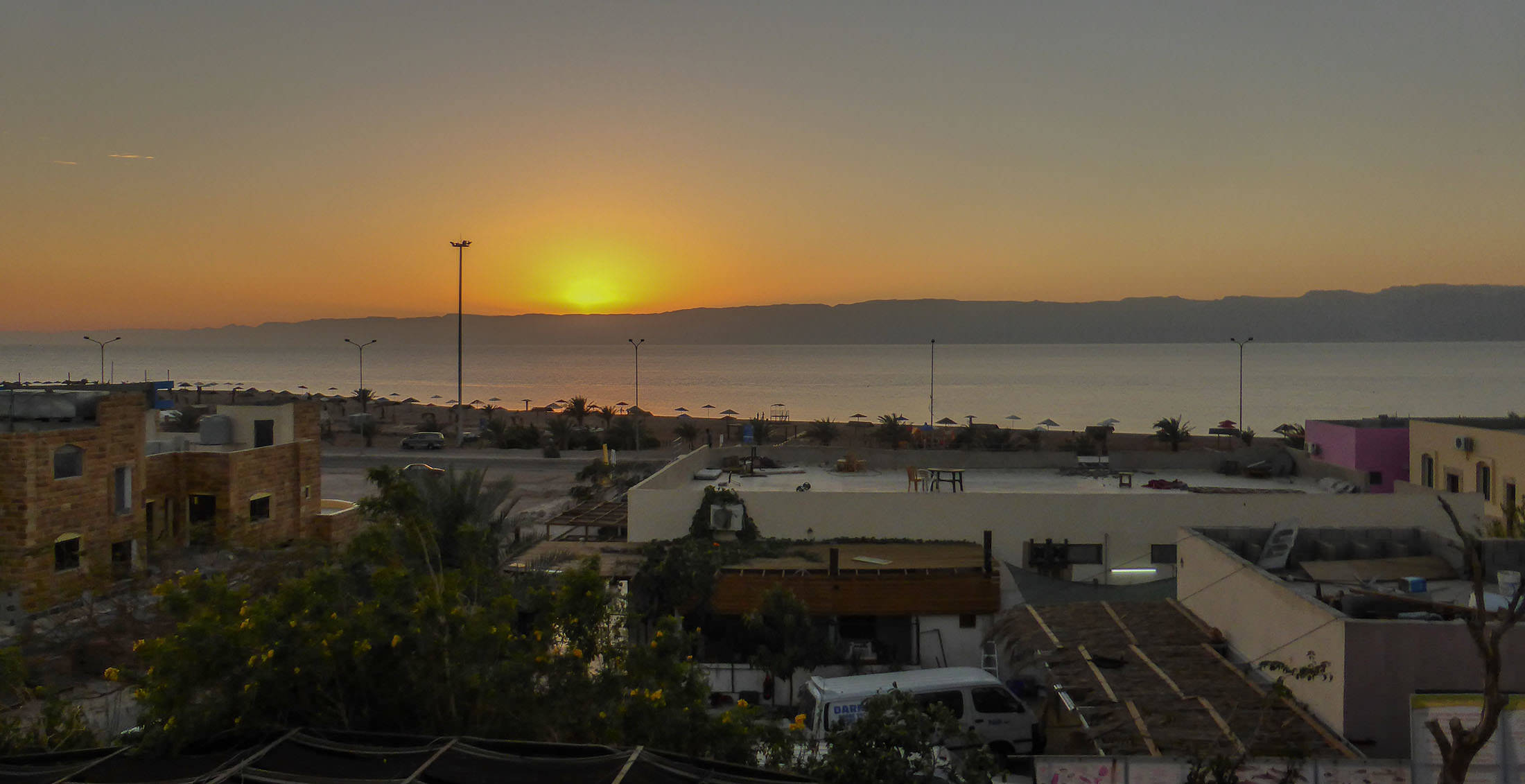
It may not be the Miami equivalent, but the sandy shores and tidal lapping of Red Sea waters without the hustle and touristy bustle of Aqaba was enough to satisfy my beach bum requirements for a few days. It’s halfway between Aqaba and the border with Saudi and, to be honest, there’s not much else around.
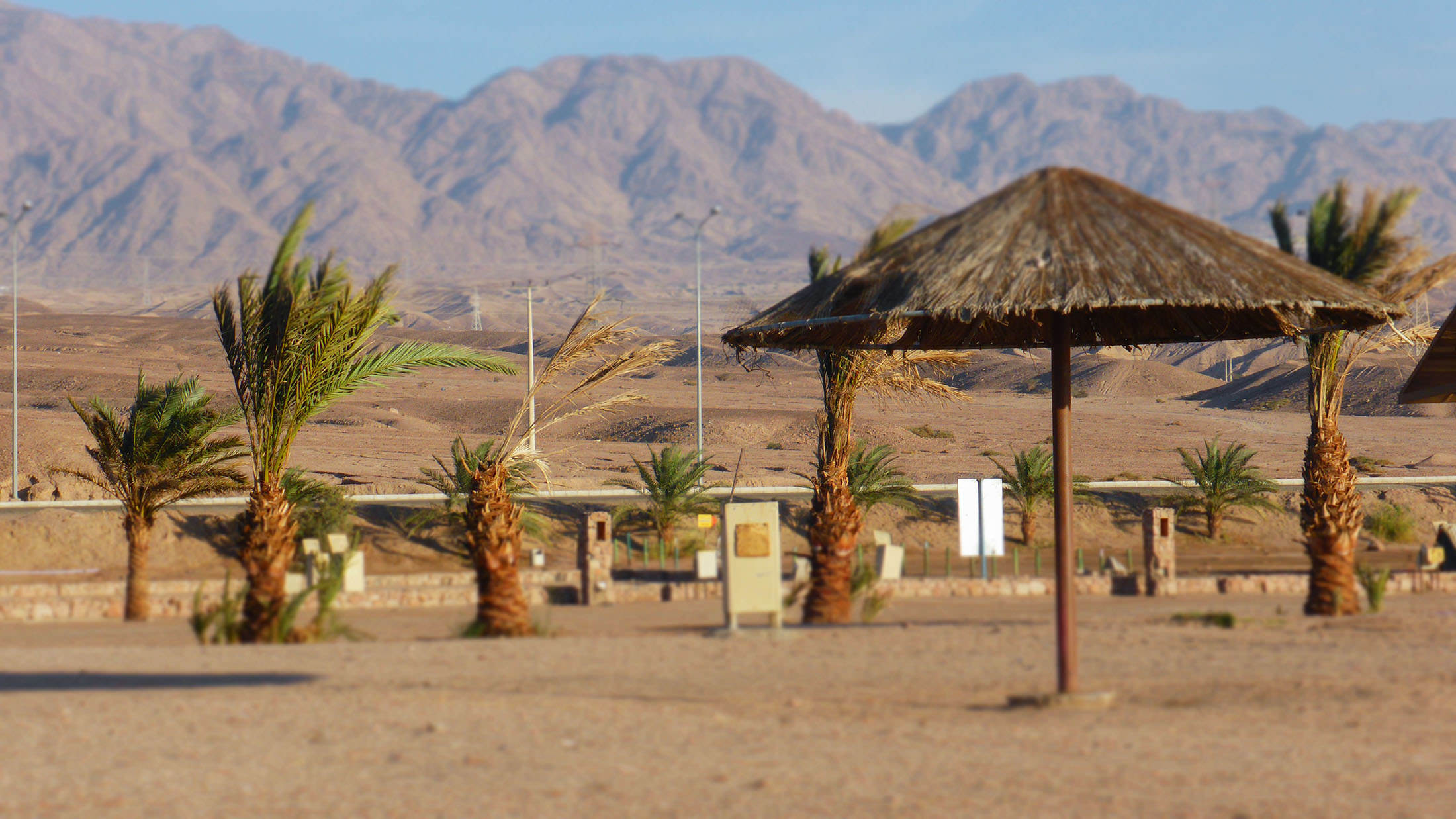
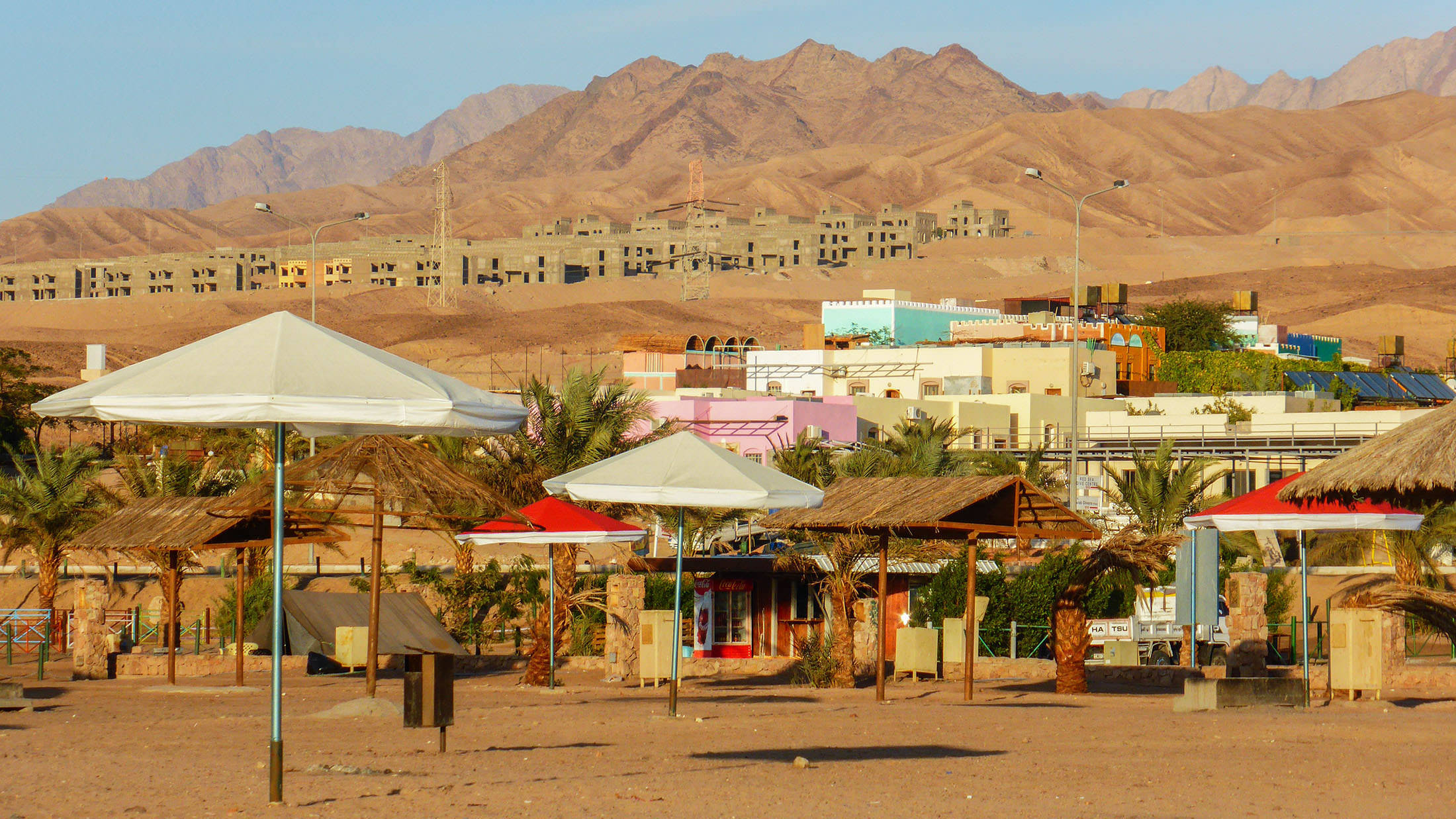
It was mid-winter, with moderate temperatures, so I was the only non-Arab tourist at the beach. Fine for me, as I was often invited to join locals picnicking and barbequing, a feast of fabulous Middle Eastern fare and earnest, authentic cultural engagement.

I’d recommend staying a little outside of Aqaba, as did I, foregoing a life of convenience for the pleasurable tranquillity that ensues.
Recommended Length of Stay in Aqaba
Two to three days
Ideal as a break between busy travel days, Aqaba is the place to spend a couple of days unwinding, before moving on to the next destination.
I’d recommend spending the first day wandering around Aqaba, finding good eats, intriguing shops and friendly faces. Take a trip outside of the city, towards the south, and find a spot that takes your fancy. Unpack a little, relax, and spend the next one to two days snorkelling, diving and generally letting the Red Sea get under your skin.
Accommodation - Staying in Aqaba
I didn’t stay in Aqaba but, rather, a little south by South Beach. The accommodation was Bedouin Garden Village.

It was clean, friendly, well positioned and fairly priced.
Budget: Hakaia Community
If you’re after a budget spot with a community vibe in Aqaba, Hakaia Community is worth checking out. It’s a short walk to Al-Ghandour Beach and close to spots like Aqaba Fort, making it a convenient base. The hostel has a shared kitchen and a relaxed terrace, plus they offer a vegan or halal breakfast if you’re keeping things simple.
It’s the kind of place where you can meet fellow travellers, especially with the shared lounge and bike rentals available for exploring the area.
Mid-Range: Lacosta Hotel
Located right in the city centre, it’s close to popular spots like the Royal Yacht Club and Aqaba Fort, plus tons of restaurants and shops. Rooms come with either sea or city views. If you’re up for some beach time, they provide a free shuttle to Berenice Beach Club for snorkelling and other water sports, which is a nice touch.
High-End: Al Manara, a Luxury Collection Hotel
For a high-end stay in Aqaba, Al Manara, a Luxury Collection Hotel offers a truly luxurious experience right on the beachfront. With its own private beach, stunning outdoor pool, and a seafood restaurant, it’s got all the touches for a relaxing escape. Rooms are beautifully designed, equipped with essentials like air conditioning, a coffee machine, and some even come with a terrace for those sunset views.
They also offer a sauna and have a tour desk to help you plan excursions. Perfect for travellers looking to unwind in style with the Red Sea at their doorstep.
Food - Eating in Aqaba
Finding favourable dining options depends largely on where you’re staying. If, like me, you opt to stay outside of Aqaba near the southern stretch of Gulf, you’ll likely have limited options (such as eating at hotel restaurants).
There are, of course, more options within the city limits, which include the following:
- Al Tarboosh: a pastry shop-cum-restaurant with tasty quick eats. It possibly has the city’s best Shawarma.
- Syrian Palace: a mix of Middle Eastern and western flavours, it’s a place that caters to varied palettes. It’s a happy joint, with friendly staff and a cosy atmosphere.
For those wanting a guided dive into Aqaba’s culinary scene, the Aqaba Walking Tour: History, Culture & Food is an all-inclusive option that takes you through local flavours and dishes you might not discover on your own. Perfect for anyone keen to explore Aqaba’s tastes with a local guide.
➡ Book Your Tour Here
Transportation - Getting around Aqaba
On Foot
It’s my favourite way of getting around new and interesting places. For a visit to the key sights, if staying centrally in Aqaba, then there’ll be no need to utilise the alternative transport options listed below.
By Minibus
There’s a central bus station a 10-minute walk from downtown. Minibuses connect the centre with most neighbourhoods, a fare costing 0.17JD – a bargain, if ever there was one.
By Taxi
Easily available and economical if not taken directly outside your hotel, taxis in Aqaba are green and blue and shouldn’t cost more than 2JD for a ride within town.
I was nearly assaulted by a taxi driver close to South Beach, when I tried to negotiate a price for a trip to Aqaba. It was the only negative experience I had in Jordan.
Alas, be careful and if it doesn’t feel right, walk away.
Transportation - Getting to Aqaba
By Air
There are two daily flights from Amman to Aqaba with Royal Jordanian airlines. Turkish Airlines connects some international destinations to Aqaba, three times a week.
By Bus
There are frequent bus services from Amman to Aqaba, running multiple times daily, operated by a variety of carriers. They stop at various points along the Desert Highway. There are also minibuses and shared taxis, the latter option I used to get to Aqaba from Wadi Rum following my stay in the desert.
By Ferry
Ferries run between Taba in Egypt and Aqaba, several times a week.
Things to Know While Planning Your 2-Week Jordan Travel Itinerary
When planning your solo trip to Jordan, it’s helpful to keep in mind a few essentials, from navigating local customs to choosing the best transportation options. With its rich history, diverse landscapes, and welcoming culture, Jordan promises an unforgettable adventure for solo travellers.
How to Get to Jordan
By Air
Many international airlines connect to Queen Alia International Airport, located just outside Amman, making it a convenient entry point for travellers worldwide.
Personally, I flew to Amman via Lebanon from Istanbul, and I was pleasantly surprised by how smoothly the process went — from clearing immigration to navigating customs and then catching a ride into the city.
If you’re arriving for the first time, expect a seamless entry that quickly immerses you in the warm Jordanian welcome.
By Bus
There are three main bus stations in Amman, with major nationwide destinations. They are: Tararbour, Abdali and JETT stations. Services from the following international locations arrive in Jordan:
- Israel
- Saudi Arabia
- Syria (at least historically)
By Taxi
There are long-distance taxis that operate between surrounding nations and Jordan.
- Syria - they used to go between Damascus and Amman however this route is no longer recommended due to the high risk of being injured or killed
- Israel/Palestinian Territories - it depends on the crossing you take and whether or not a visa for Jordan has been pre-arranged
I shared a taxi (with a Polish traveller I’d met the day before) to get to the border crossing between Jordan and Israel (with transport through Palestine to Jerusalem) on my way out of Jordan. The journey took one hour, cost 20JD (after negotiation) in total. Apparently it works in reverse, for travellers crossing King Hussein Bridge from Israel into Jordan. Ensure you negotiate the price before getting in.
By Ferry or Speedboat
You can get to Jordan via ferry or speedboat, entering at the port of Aqaba via Egypt (Nuweiba port).
How to Get around Jordan
Jordan offers various ways to travel between its cities and sights, making it accessible for solo travellers and those on a budget.
By Air
For travellers short on time, Royal Jordanian offers a few domestic flights, such as Amman to Aqaba. Flying is a quick option but less common, as Jordan’s small size makes overland travel more practical and economical for most routes.
By Bus
Jordan’s bus network, operated by companies like JETT, offers affordable and relatively comfortable rides between major destinations. Buses typically run on set schedules, with routes connecting Amman to Aqaba, Petra, Wadi Rum, and other popular spots.
Just be prepared for limited services to smaller towns.
By Taxi
Taxis are widely available and can be a convenient option, especially for short trips within cities or to nearby attractions. Always agree on a fare in advance, as meters aren’t always used.
Shared taxis (service taxis) offer a cost-effective way to travel between cities if you’re open to riding with locals.
Visa for Travelling to Jordan
Always consult the national tourism board of each country for up to date information as things can and do often change. Jordan's official Tourism Board website details entry requirements for all nationalities.
Jordan Pass
This is available for travellers who stay three nights, with entry to a popular site (such as Petra) included in the fee. See the website for details.
Visa Free
Nationals of certain nations - mostly those of the Middle East, including Palestinian citizens - are able to enter the country without visas.
Visa on Arrival
For a fee, citizens of many other countries are able to obtain a visa on arrival in Jordan. Stays are for two, three or six months.
See the website listed above for up to date details regarding nationalities, prices and other important details.
Visa Required in Advance
Nationals of certain countries are required to obtain a visa from a relevant Jordanian Diplomatic Mission in their country of origin (or abroad) prior to arriving. Please see the website above for details.
Solo Travel in Jordan: What It's Like
Aside from one taxi driver who seemed intent on causing harm, I had no issue as a solo traveller while wandering around Jordan. It was here that I met some inspiring travellers and a few generous-hearted Jordanians all of whom served to shape a positive and memorable journey. The incident with the taxi driver was the only time in which I felt unwelcome and a little unsafe.
Jordan has been referred to as the Switzerland of the Middle East, a refuge for people from across the region. I got a real sense of this as I moved around. People from all walks of earth share this beautiful space, including many who've been emotionally and psychologically damaged, the result of living in war-like conditions.
Rather than segregate, people in Jordan seem to unify, the country becoming a new home, beginning and opportunity for growth. Being in Jordan, despite close proximity to warring neighbours, was never unnerving - I felt safe 99.9% of the time.
It is a well-visited part of the Middle East so, if you like to spend days here and there with other travellers, said opportunities will likely present during your travels If, though, you wish to be alone, surrounded by locals, history and Mother Nature, then it's also possible in Jordan.
Based on the experiences I had, Jordan presented itself as a destination for all sorts of travellers and combinations thereof. It is certainly suitable for those, like me, who prefer to go solo.
If you're okay with your own company, you'll likely be fine moving around the country on your own. There are relatively good transport links between the major towns and cities, at least those frequented by the majority of visitors. You'll either be on a bus or in a minivan, unless of course you decide to visit a far-flung corner of the country in which case you'll need to employ your savvy powers of navigation.
Therefore, chances are, at most times of day, you'll be surrounded by people, they being Jordanian, refugees from surrounding nations or other travellers.
Can This Itinerary Be Adjusted?
There are inclusions and exclusions that can be completed to personalise the itinerary, depending on personal preferences. It can be done within the timeframes suggested, slowed down or ever accelerated a little.
I opted to spend more time in Amman, returning at the end of the trip for a few days to prepare for my stay in Israel. However, staying in other locations throughout the country a little longer would definitely be feasible - it's a small country, after all.
Recommended Books for 2-Week Jordan Travel Itinerary Planning
If you’re planning a solo adventure to Jordan, these travel guides offer essential tips and detailed itineraries to help you make the most of your journey—and as an added bonus, purchasing through these links supports my work!
Jordan, by Lonely Planet
Lonely Planet Jordan is a top choice for solo travellers, with in-depth coverage of must-see sites like Petra, Wadi Rum, and Amman. It also includes practical advice on accommodations, transportation, and safety — ideal for those navigating Jordan on their own.
➡ Buy your Lonely Planet Jordan guide here
Jordan, by Rough Guides
This guide dives into the cultural and historical context of each destination while providing clear maps and recommended routes. Rough Guide’s attention to local etiquette and customs makes it a valuable companion for travellers who want to engage respectfully with Jordanian culture.
Travel Insurance for Visiting Jordan
World Nomads
When it comes to travel insurance for Jordan, I went with World Nomads, and I’d recommend it if you're looking for solid coverage.
Jordan has its share of surprises — whether you’re exploring souks in Amman, trekking through Petra, or camping under the stars in Wadi Rum — and having insurance gave me extra peace of mind. World Nomads covers everything from medical emergencies to stolen belongings, allowing me to fully enjoy the experience without unnecessary stress.
Their platform is quick and easy to use, keeping things hassle-free.
Frequently Asked Questions
Before you head to Jordan, it’s natural to have a few questions.
Here’s a quick rundown of what you need to know so you can plan confidently.
How Many Days in Jordan Is Enough?
If you’re wondering how many days you need in Jordan, it really comes down to what kind of experience you’re after.
Seven to ten days is often enough to hit the main spots like Petra, Wadi Rum, the Dead Sea, and Amman without feeling rushed.
But, if you’re the type who wants to dive a little deeper and not just check boxes, two weeks is perfect. With two weeks, you can get to know places beyond the big names, like Jerash, and take it slow enough to really soak it all in.
What Is The Best Month to Visit Jordan?
The best time to visit Jordan really depends on the experience you’re after.
Spring (March to May) and fall/autumn (September to November) are ideal, offering comfortably warm temperatures for exploring places like Petra, Wadi Rum, and the Dead Sea. In spring, you’ll even catch blooming wildflowers in the desert — a stunning sight that adds a fresh layer to Jordan’s landscapes. Fall/autumn also brings perfect weather for outdoor adventures without the intense summer heat.
Summer (June to August) can be scorching, especially in the desert, so it’s not for everyone. But if you’re willing to brave the heat, you’ll find fewer tourists around.
I visited in late December through early January, spending New Year’s Eve in Amman, and winter has its perks too. The temperatures were cooler, especially at night, but it was manageable with a few extra layers. Plus, popular spots like Petra were less crowded, making for a more intimate experience.
If you’re up for a winter visit, it’s a great way to explore without the big crowds — just keep in mind that Amman and the north can be a bit wet and chilly during this time.
Is Jordan Friendly to Tourists?
Absolutely, Jordan is incredibly friendly to tourists, but in a way that goes beyond the usual “Jordanian hospitality” you’ll hear about.
In my experience, people genuinely take an interest in who you are and where you’re from, often striking up conversations without any agenda. When I visited, I found that locals were not only willing to give directions but would often go out of their way to help, even if it meant a bit of their own time.
For instance, while exploring Amman, a shopkeeper invited me in — not to buy something, but just to share a cup of tea and chat. In Wadi Rum, my guide shared personal stories about his Bedouin life, not because he had to, but because he genuinely wanted to give insight into his culture.
I found that people in Jordan don’t just tolerate tourists; they’re open and curious about them. If you’re respectful and show genuine interest, you’ll likely be welcomed warmly wherever you go.
Can you Do Jordan without a Tour?
Yes, you can absolutely do Jordan without a tour.
I travelled independently and found it pretty straightforward, with the exception of Wadi Rum, where I opted for a guided experience. Getting around is manageable with a mix of buses, shared taxis, and a bit of planning.
Petra, for example, is well-organised for solo visitors, with clear signage and plenty of information available at the visitor centre. Amman is easy to navigate, and locals are helpful if you need directions or advice.
The one place where a tour or guide is truly worthwhile is Wadi Rum — it’s vast, and the best way to experience it is with a Bedouin guide who can take you to the hidden spots and share insights you might otherwise miss. Other than that, Jordan is very doable on your own if you’re comfortable exploring independently.
Which Language Do They Speak in Jordan?
The official language in Jordan is Arabic, and you’ll hear it spoken everywhere. While English is widely understood in tourist areas, knowing a few words of Arabic goes a long way.
I picked up some basics thanks to a lovely French guy I met in a hostel in Amman — his father was Palestinian, and he shared a few useful phrases with me. Learning even simple words like “shukran” (thank you) or “marhaba” (hello) really added to the experience. Jordanians appreciate the effort, and it often leads to some good conversations and friendly smiles.
Which Currency Do They Use in Jordan?
In Jordan, you’ll be using the Jordanian Dinar (JOD), or JD, and trust me, cash is your best friend here.
While you can use cards at hotels and some bigger restaurants, I found that most places — like local markets, food stalls, public transportation and even some smaller shops — are all about cash. I quickly learned to carry smaller bills since getting change isn’t always easy. Having cash on hand made things smoother and let me enjoy the local experiences without the awkward “do you take card?” conversation!
It’s definitely part of the charm of travelling around Jordan.
Is Jordan Expensive For Tourists?
As a budget solo traveller, I found Jordan surprisingly affordable by making a few strategic choices. Sticking to public transport and eating at local spots kept my costs down without skimping on the experience. Big-ticket items like the entrance to Petra can be pricey, but with local buses, shared taxis, and delicious meals from street vendors or family-run eateries, I managed to explore Jordan comfortably on a budget.
If you’re okay with a more authentic, no-frills approach, Jordan can be quite wallet-friendly.
2-Week Jordan Travel Itinerary - Conclusion
As I look back on my time in Jordan, it's clear that this journey was more than just checking off bucket-list destinations. Each stop brought a new layer of discovery — from wandering the ancient streets of Jerash to finding quiet moments of awe in Petra and sharing tea with locals in Amman. Jordan is a country that lives up to its reputation for warmth and resilience, and it gave me a genuine sense of connection to the Middle East.
Travelling solo here wasn't just easy; it was rewarding. Jordan welcomes you not as an outsider but as someone who belongs, even if only for a brief time. The balance of historical depth and everyday life was the perfect backdrop for meaningful interactions, and I left feeling grateful for the people I met along the way.
If you're considering Jordan, know that it offers more than impressive landscapes and ancient sites. It’s a place that meets you halfway, opening up as much as you’re willing to engage with it.
I hope this 2-week Jordan travel itinerary helps you navigate your own path through Jordan, bringing you moments of connection, beauty, and perhaps even a touch of the unexpected.
Safe travels, and may Jordan leave as lasting an impression on you as it did on me.
If this itinerary helped you feel a bit more prepared for your own journey through Jordan, or even sparked a bit of wanderlust, I’d be thrilled if you shared it with others who might find it useful. Jordan is a place that deserves to be experienced, and if my travels here inspire someone else to explore its wonders, then it’s all the more rewarding.
